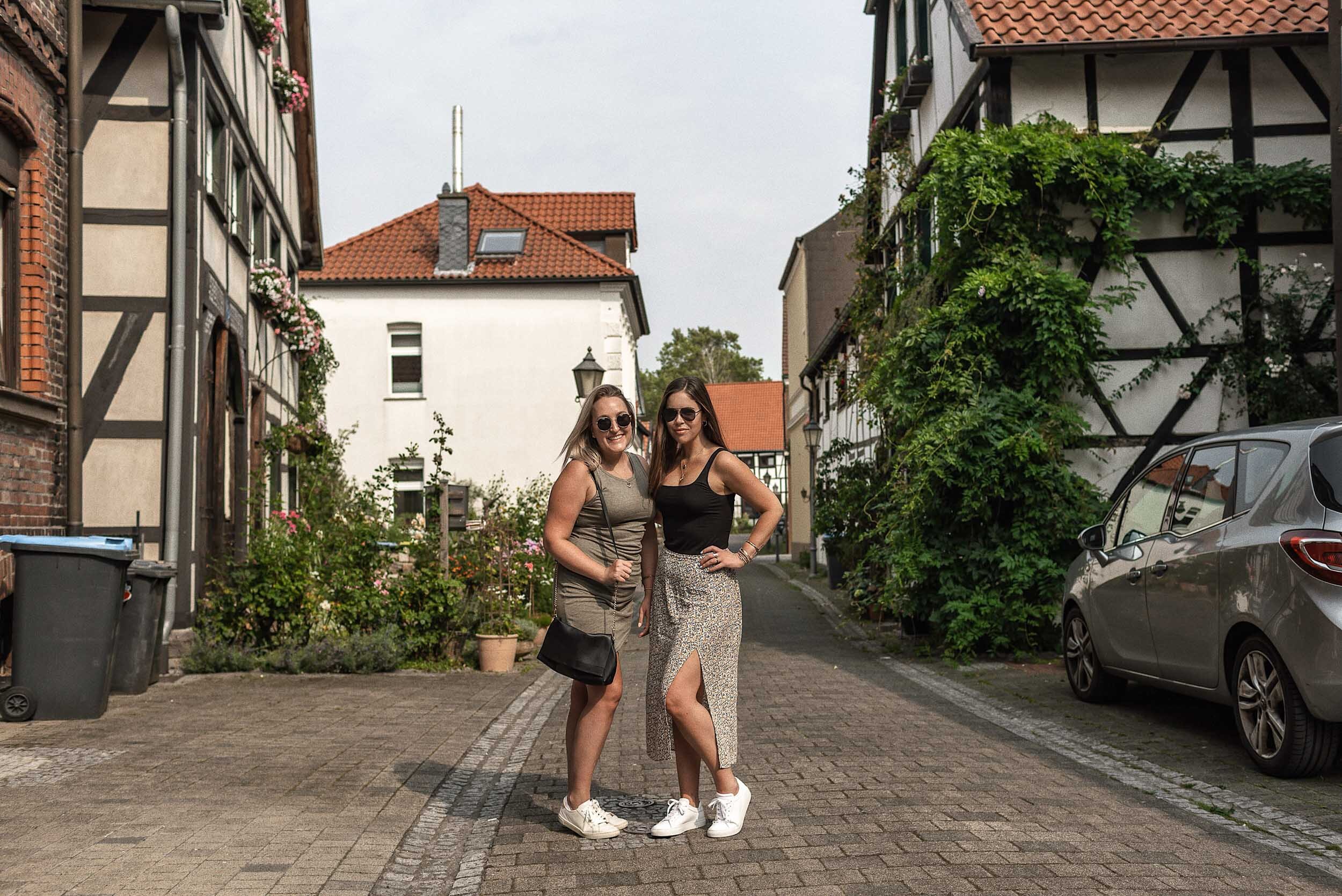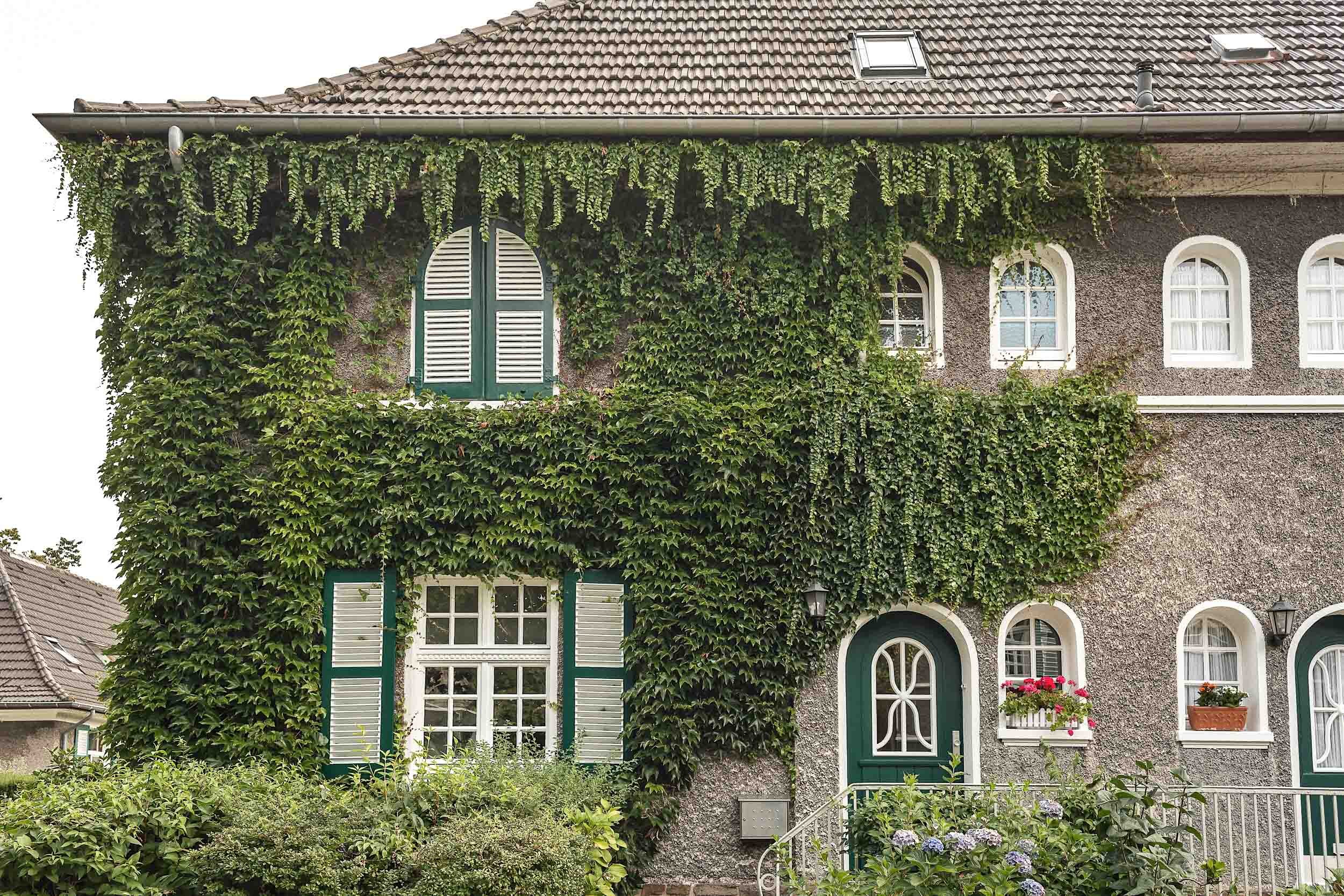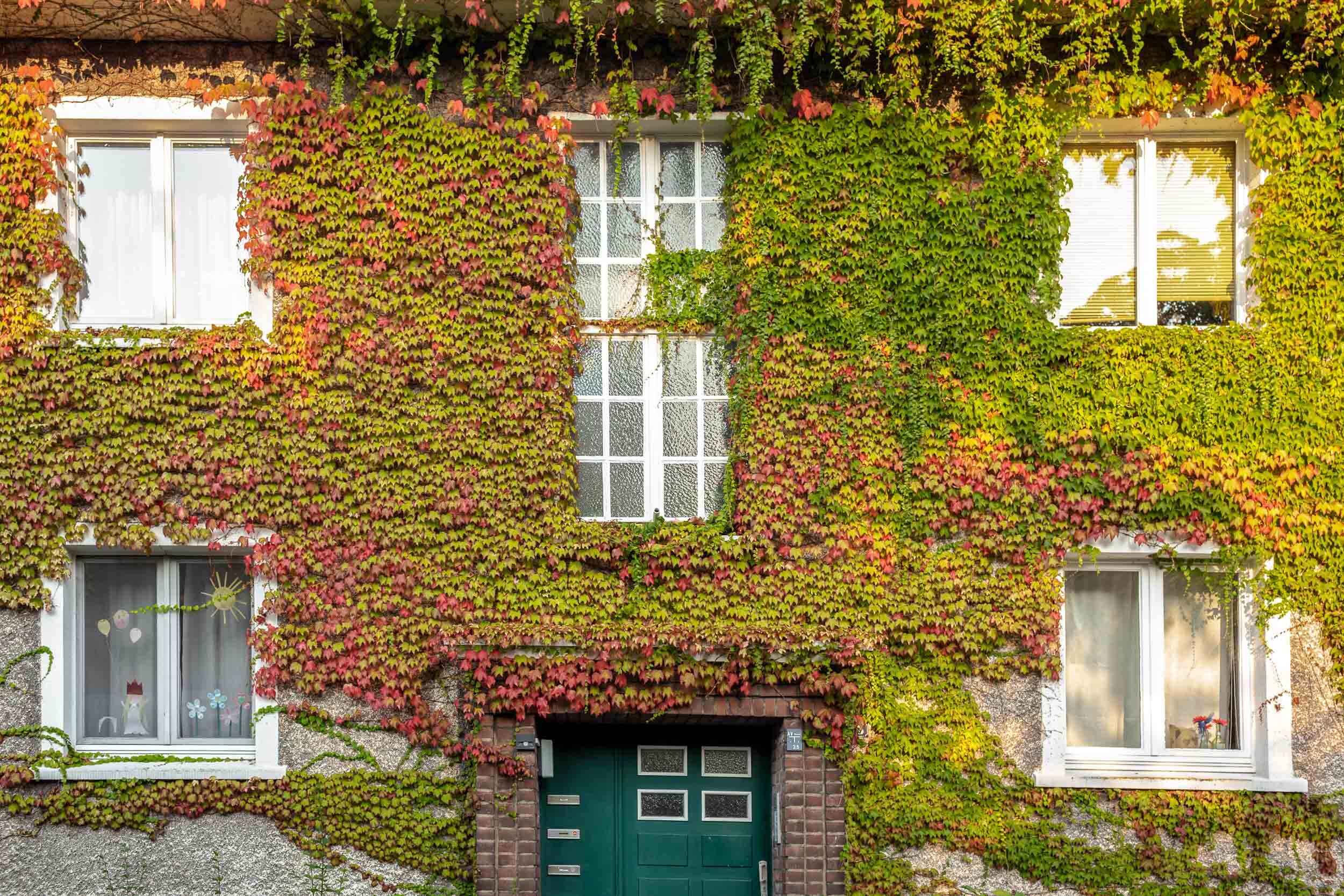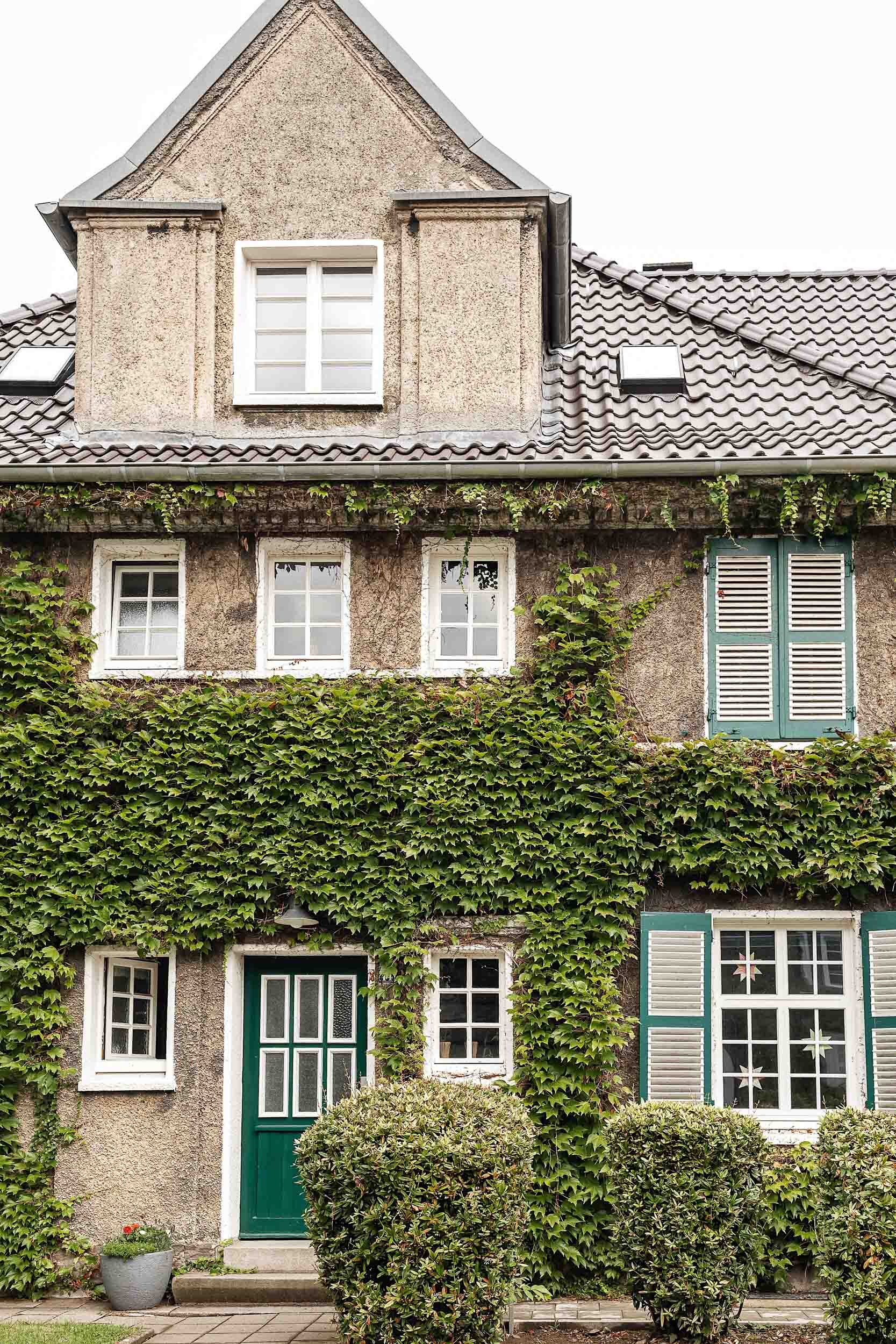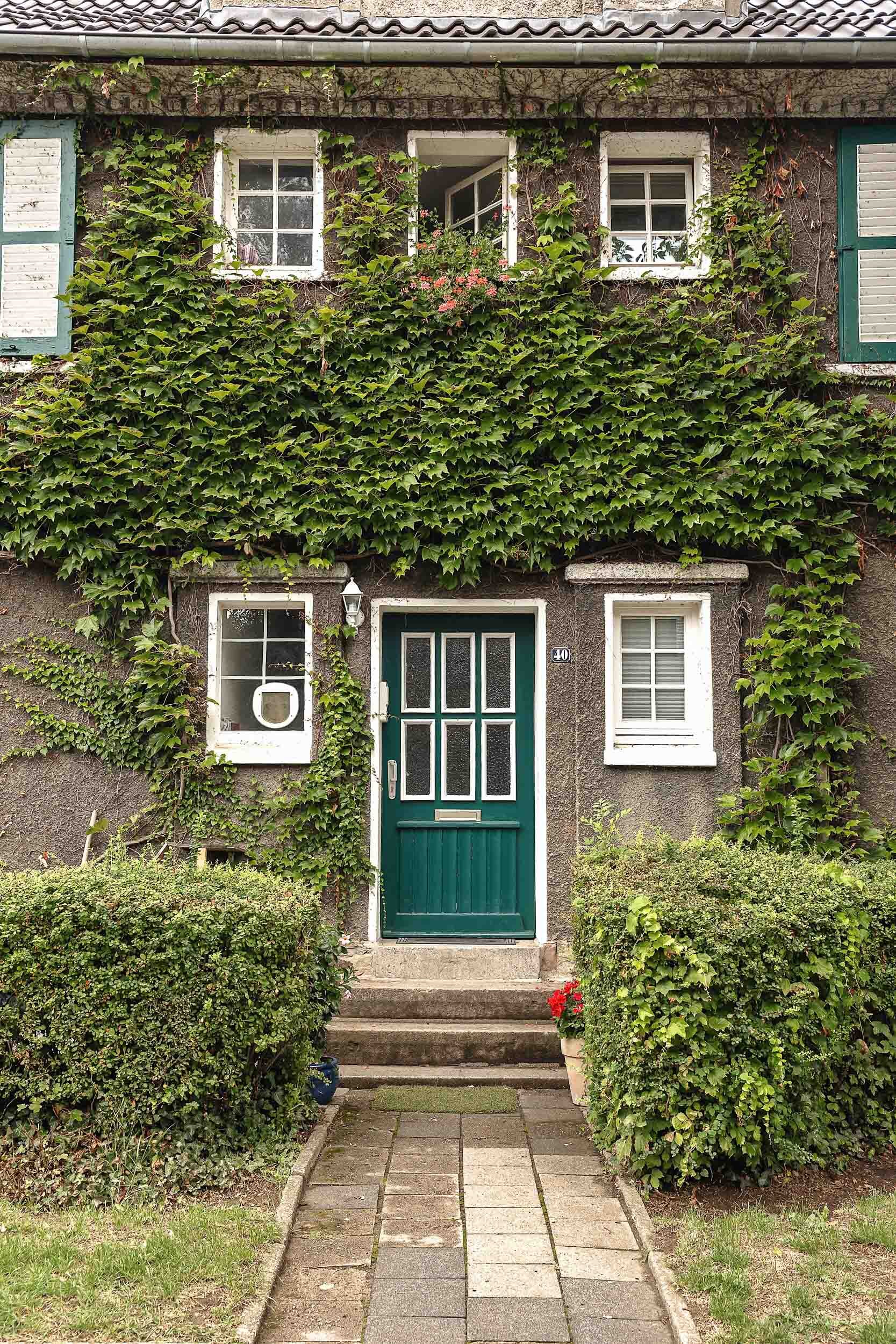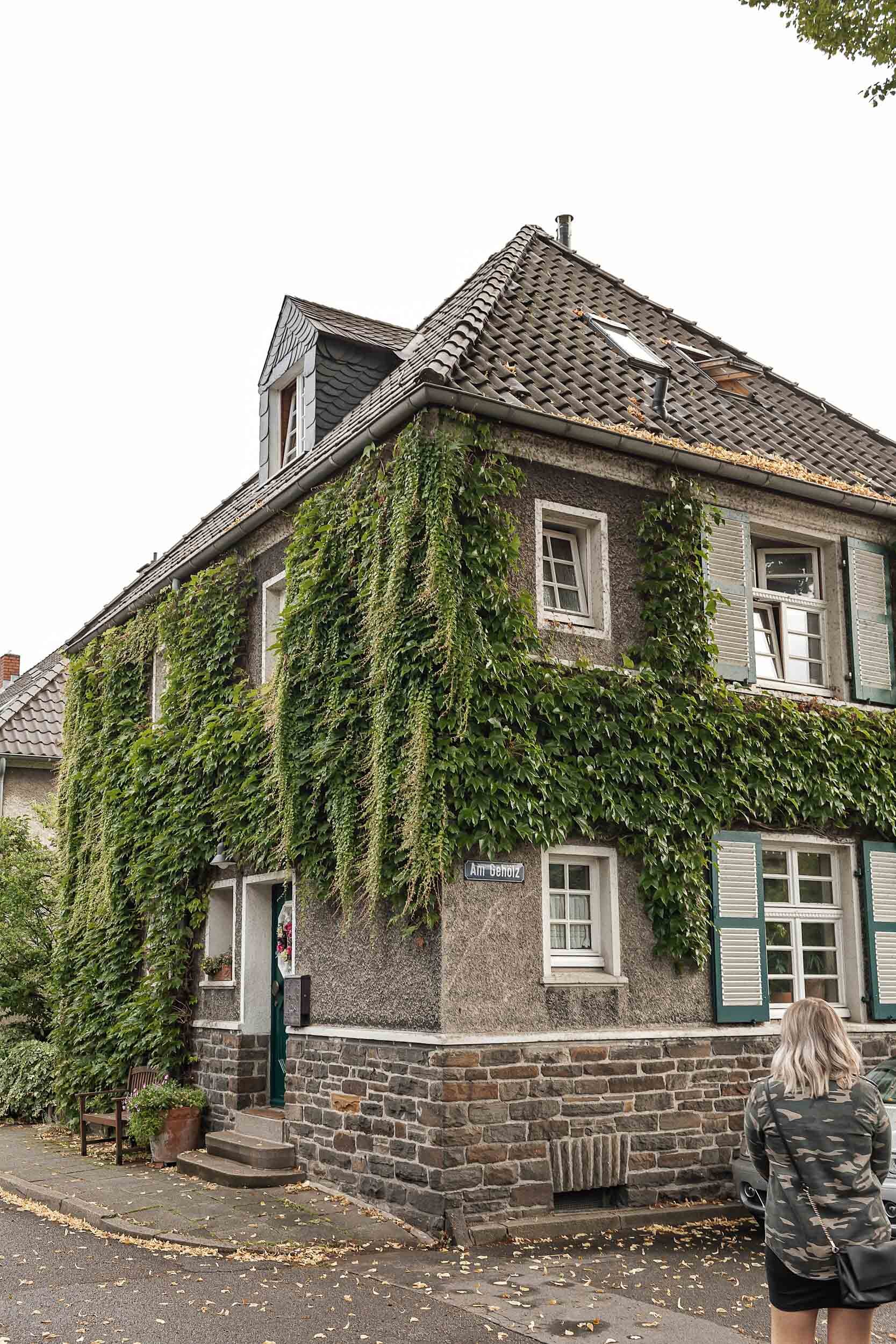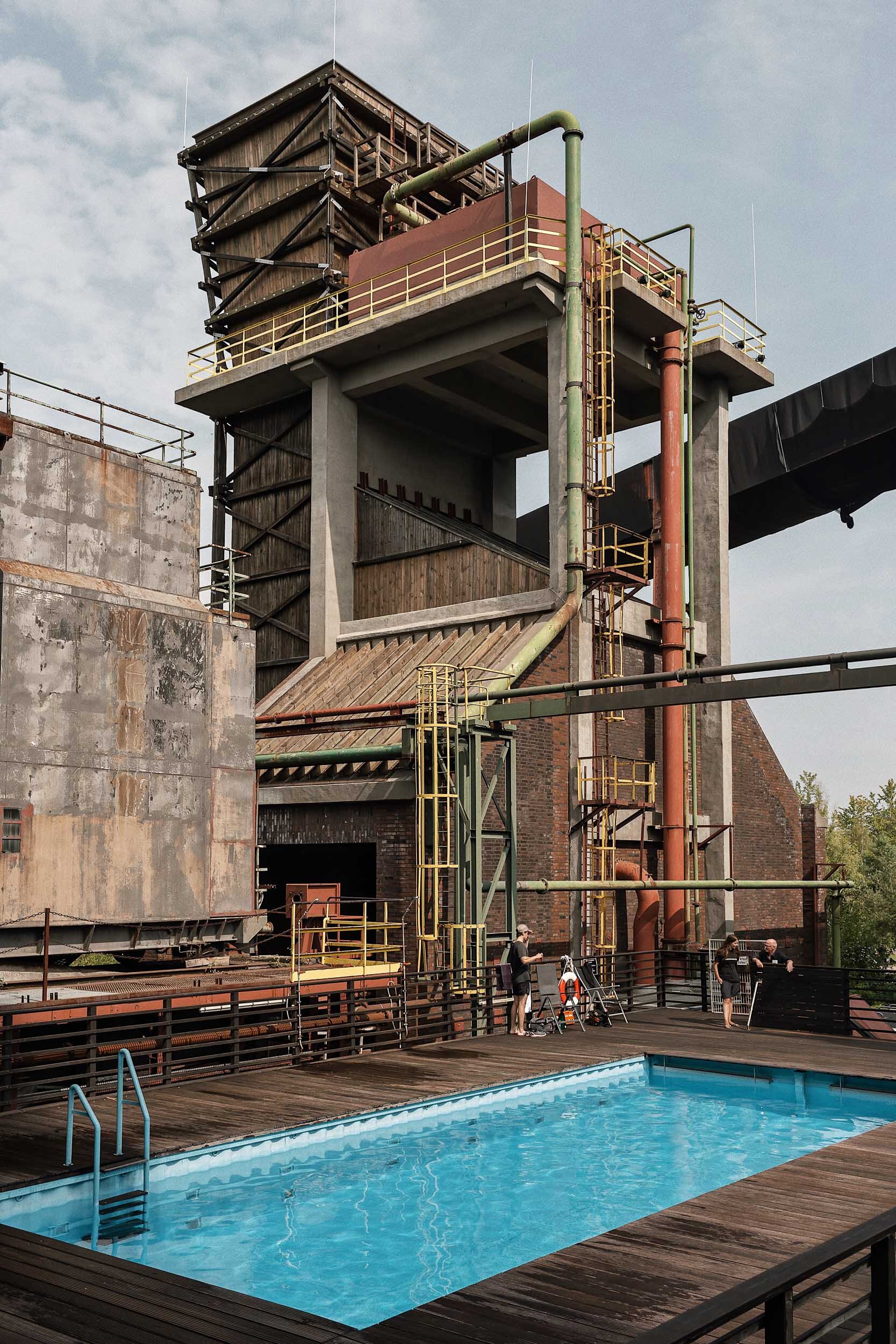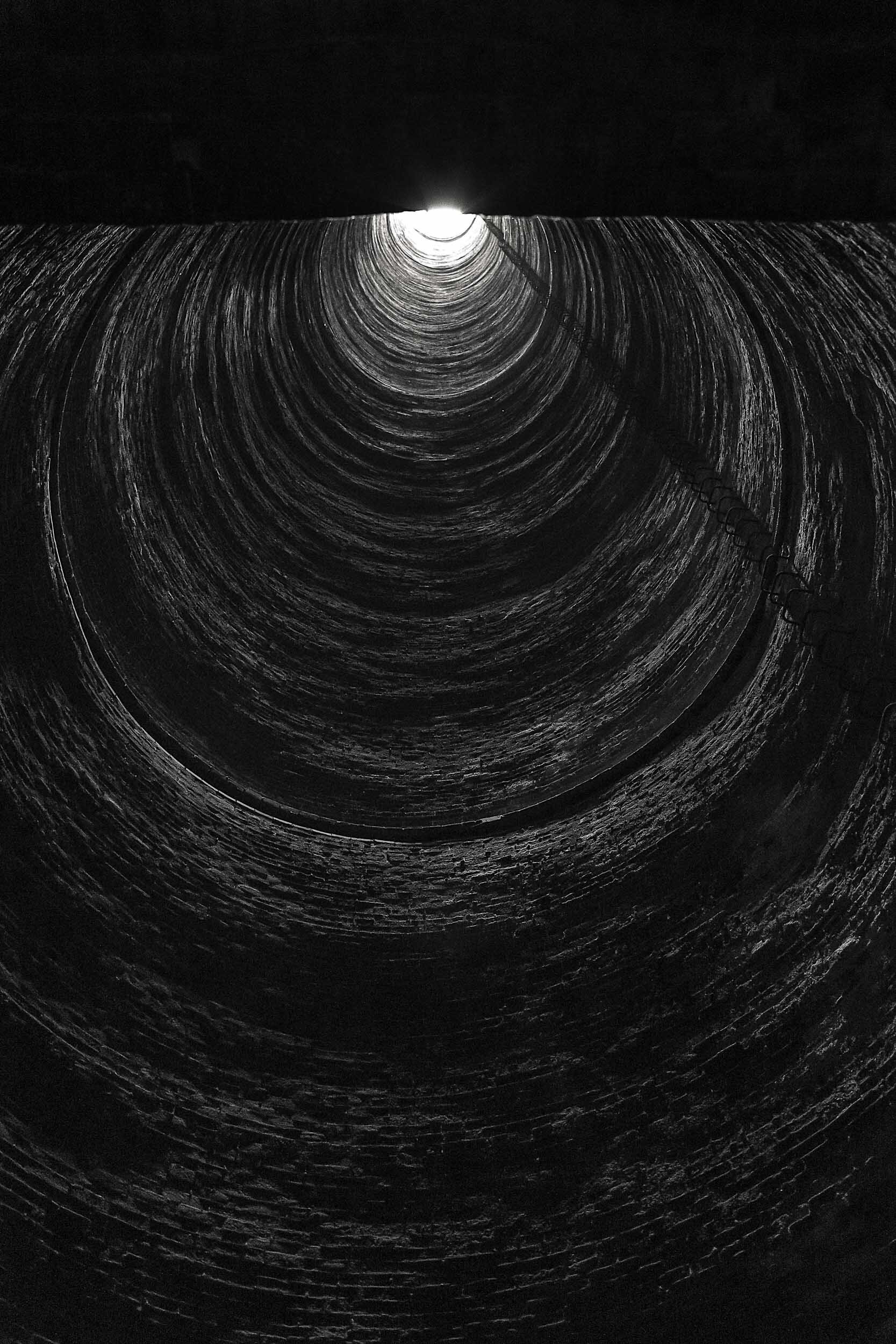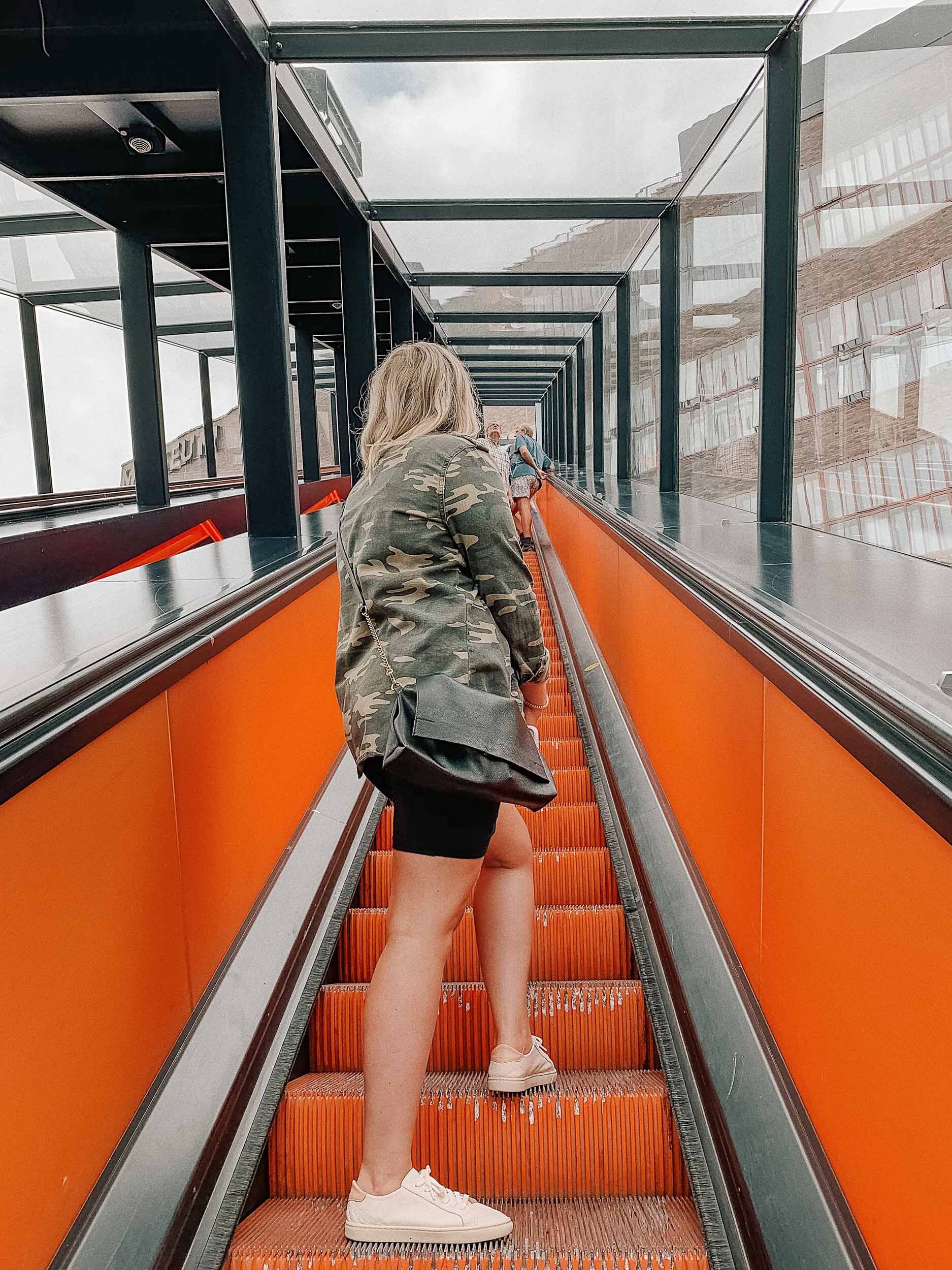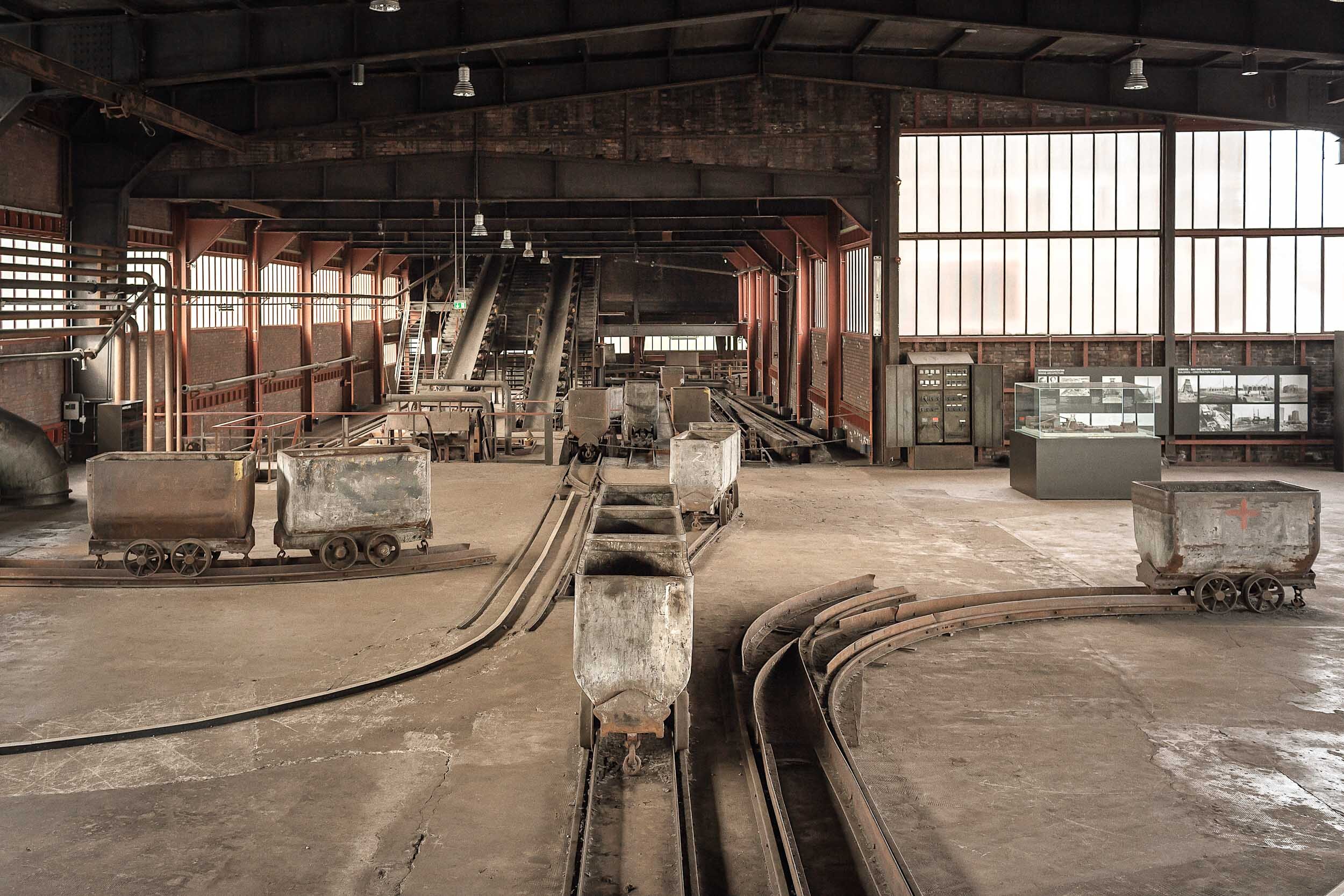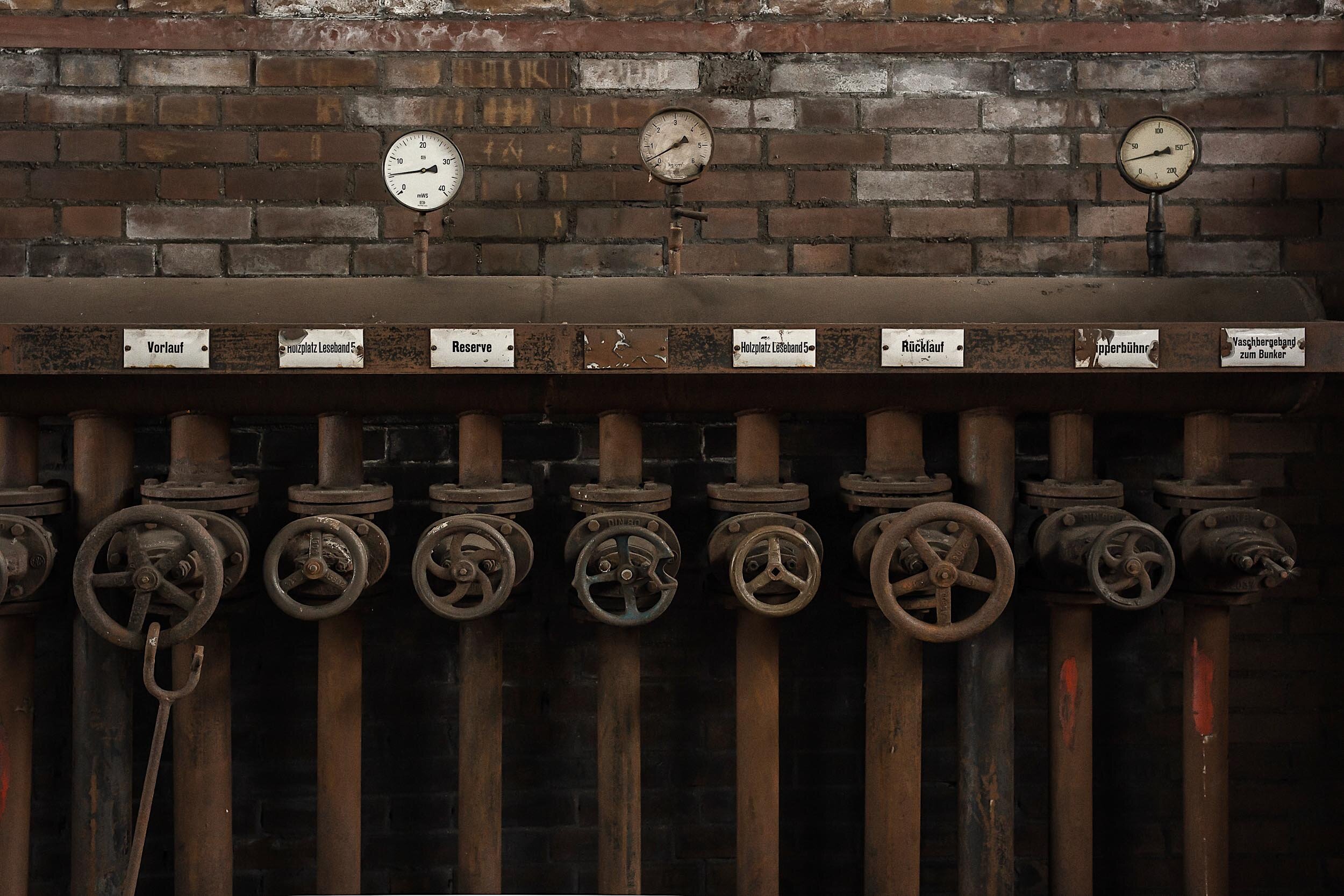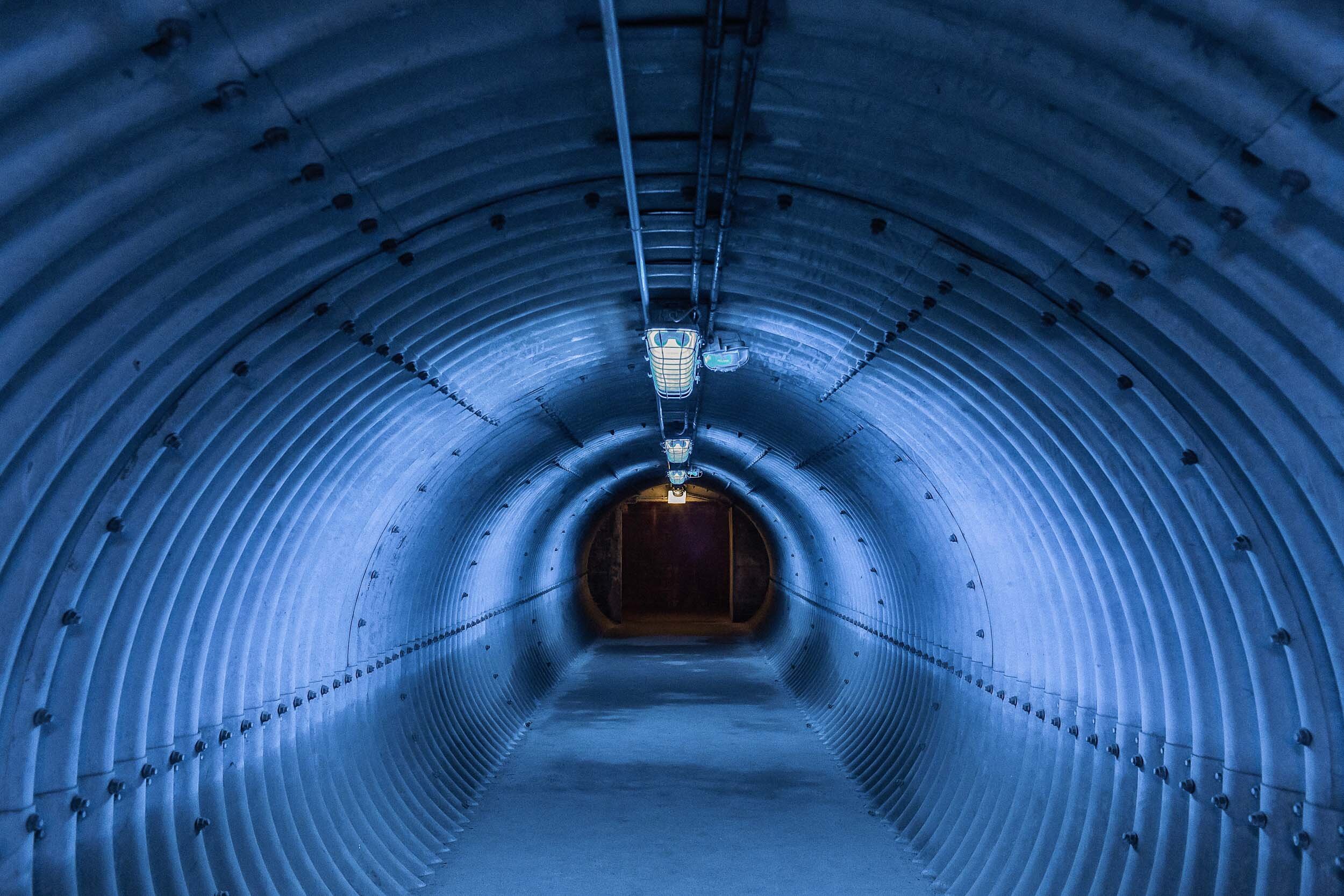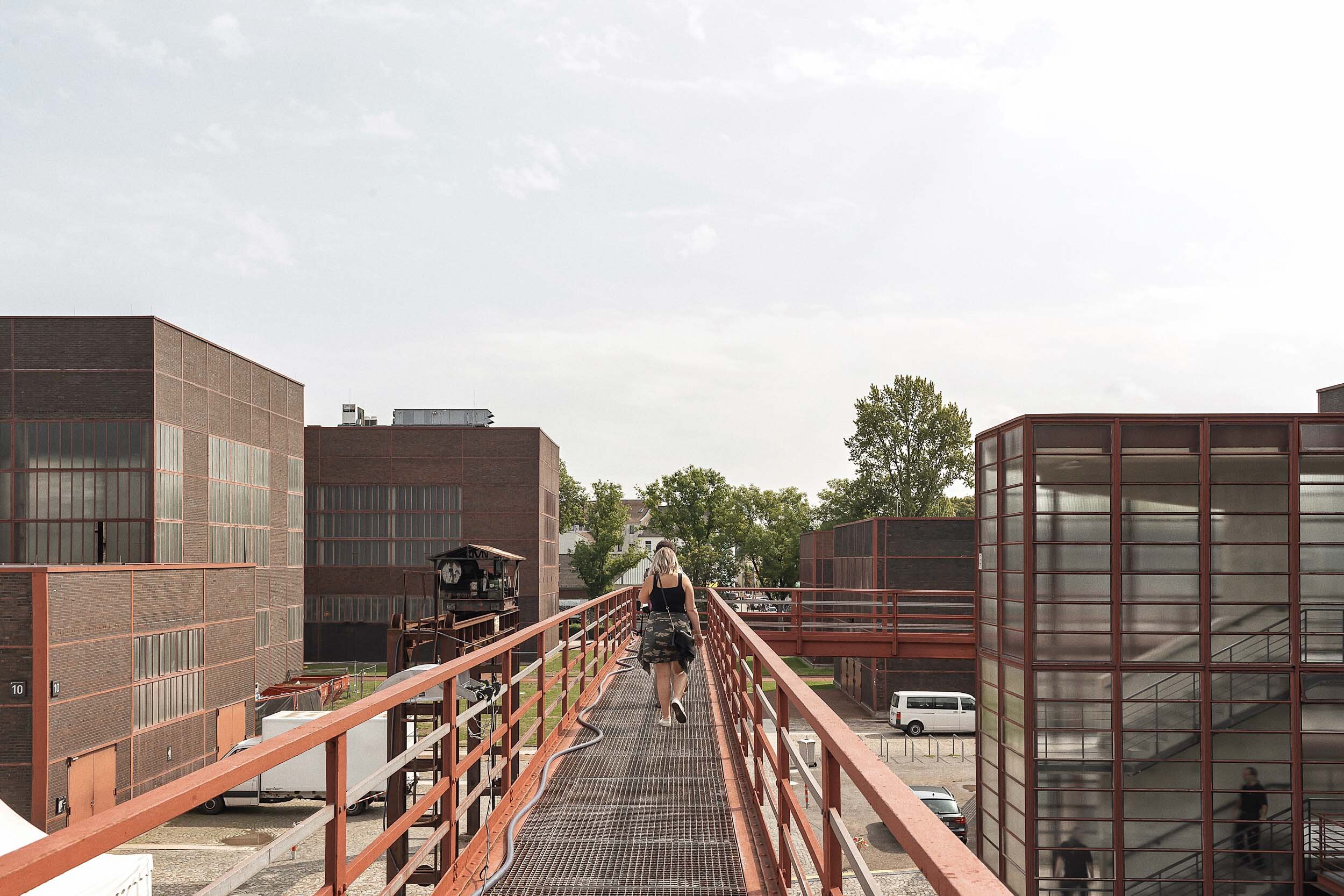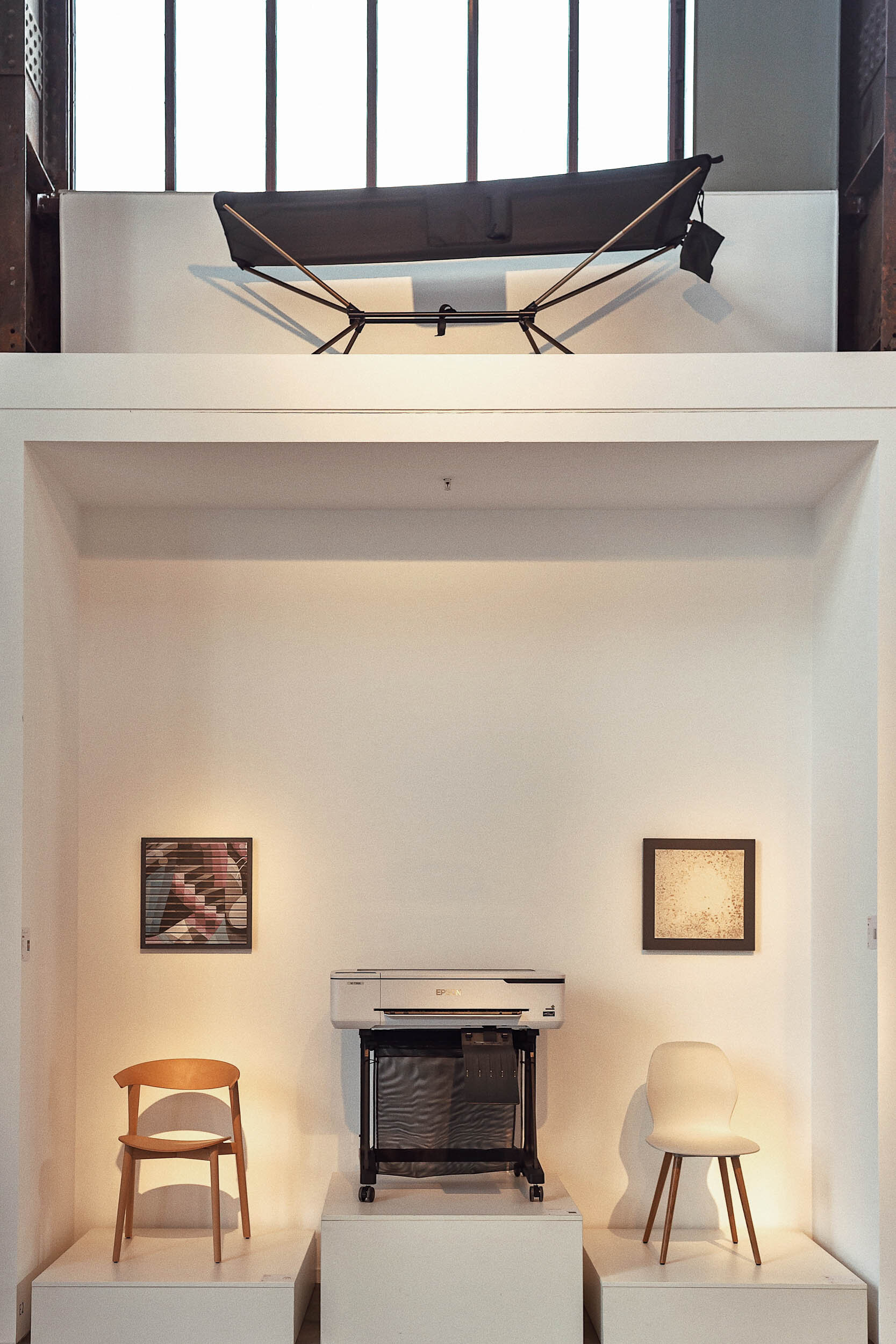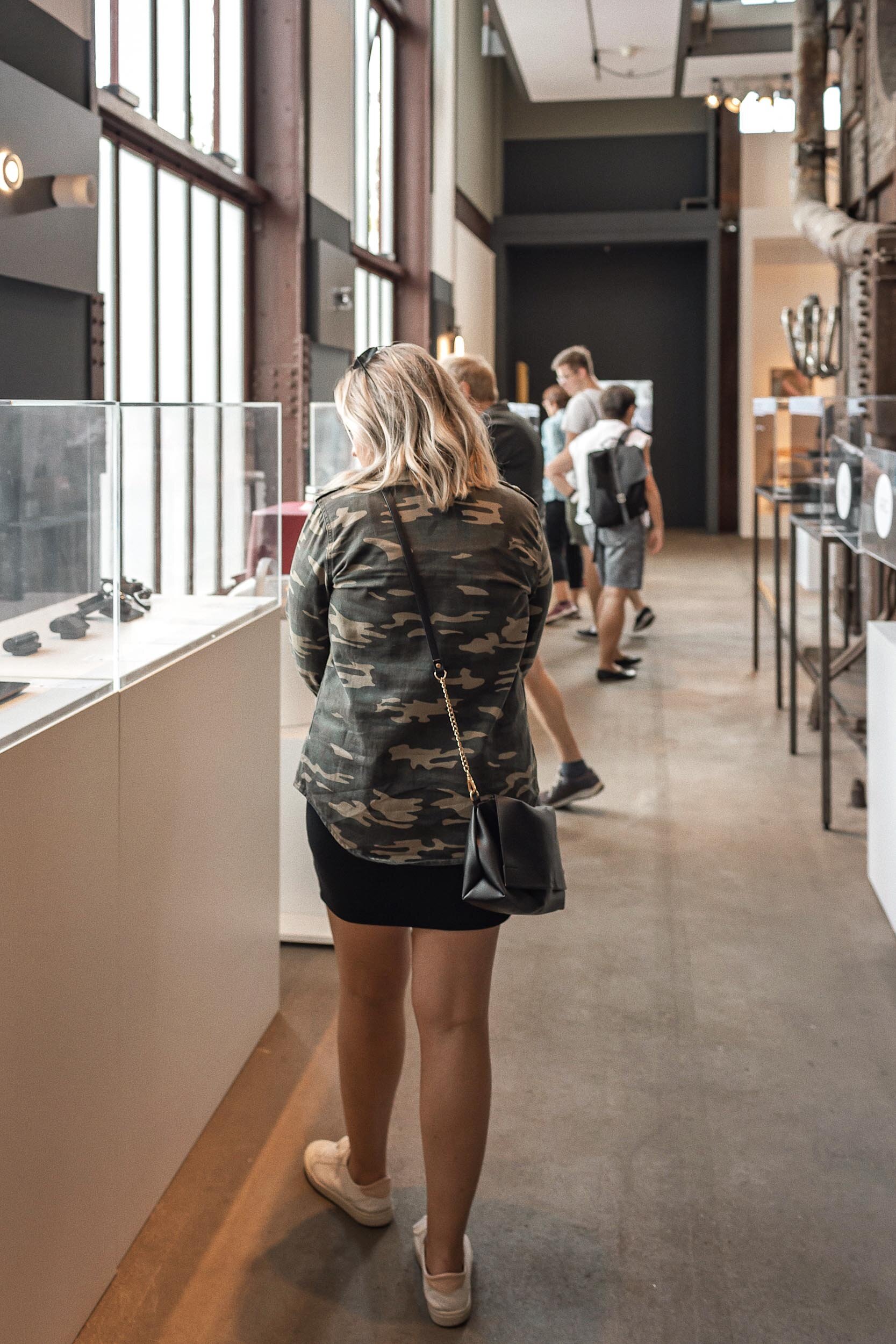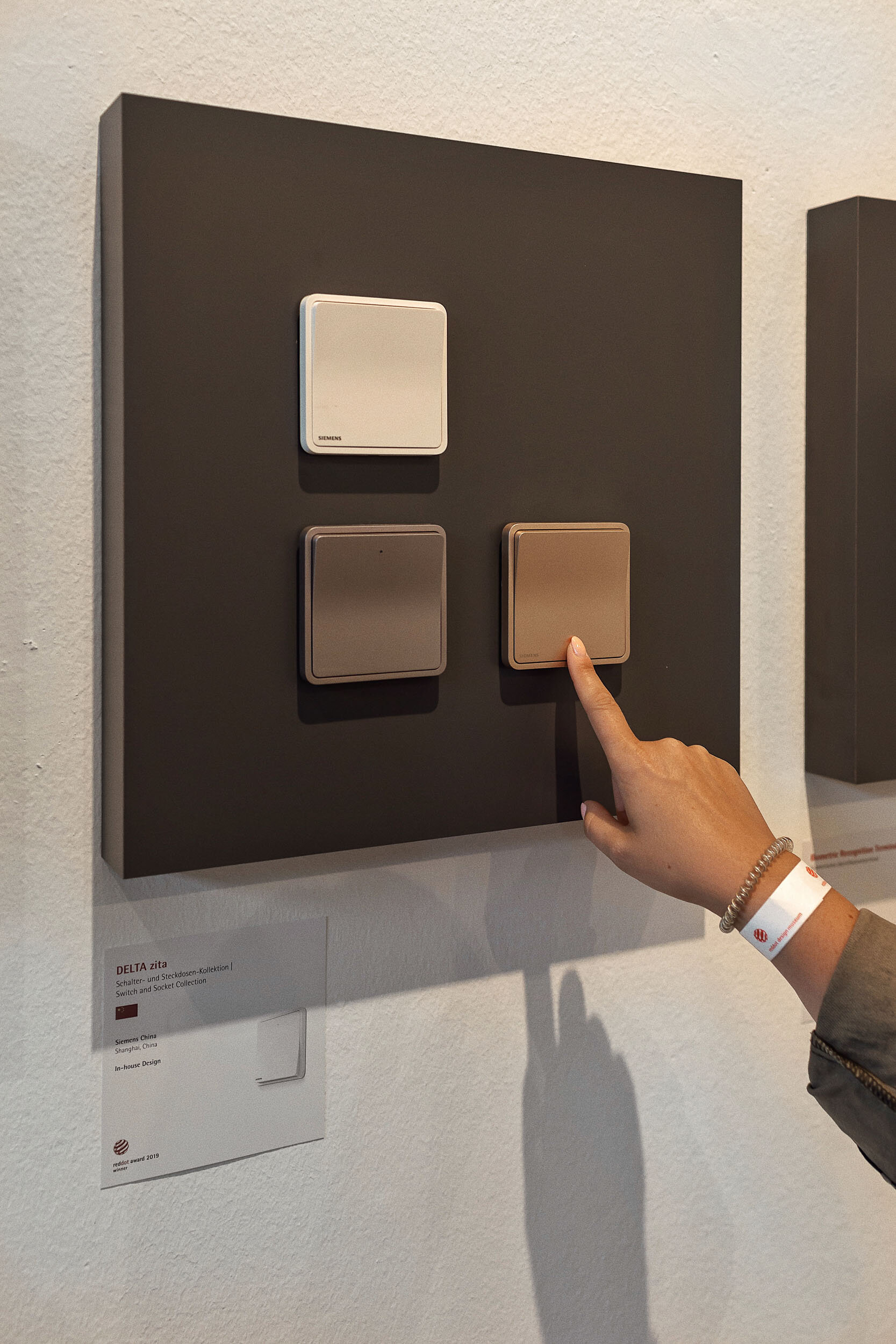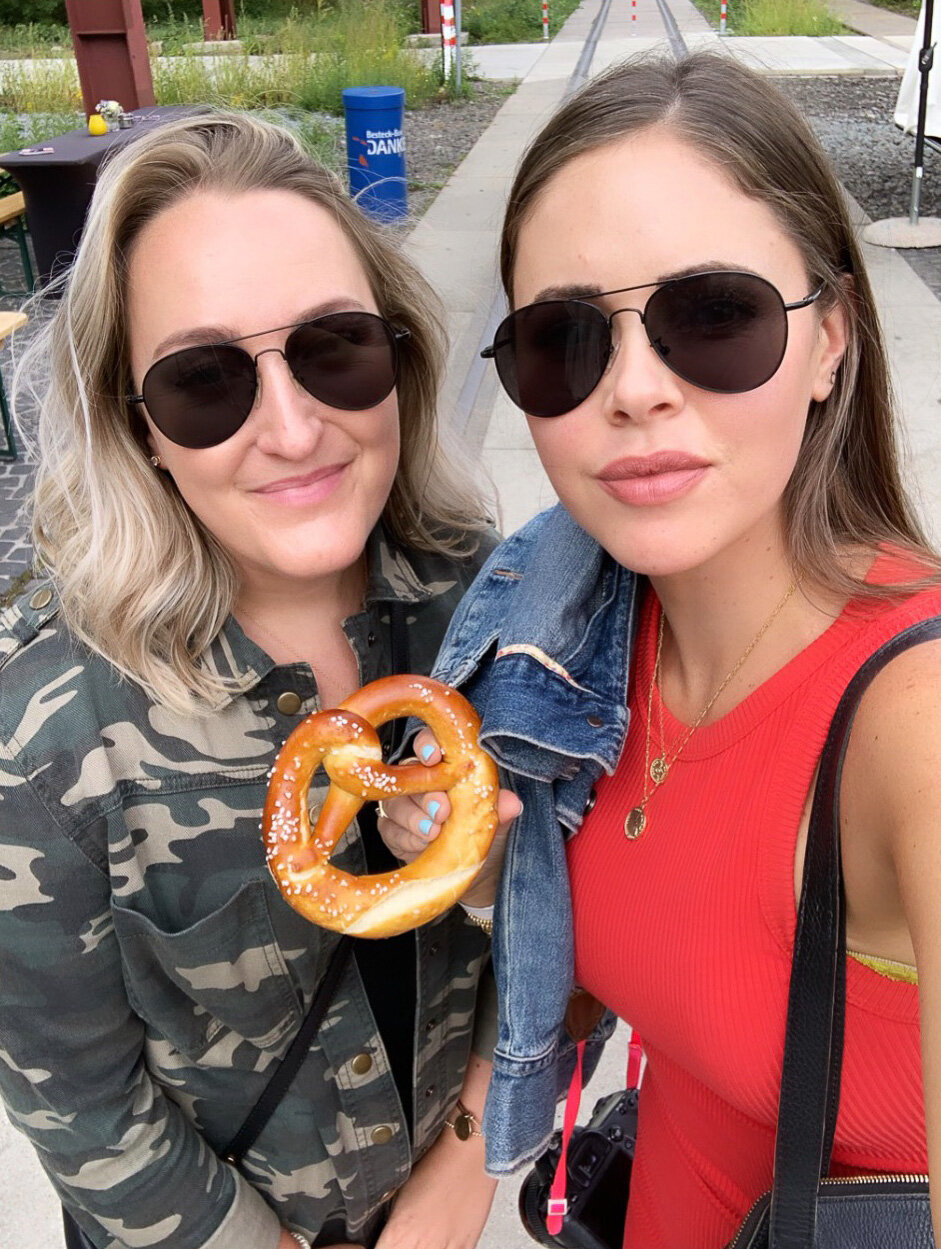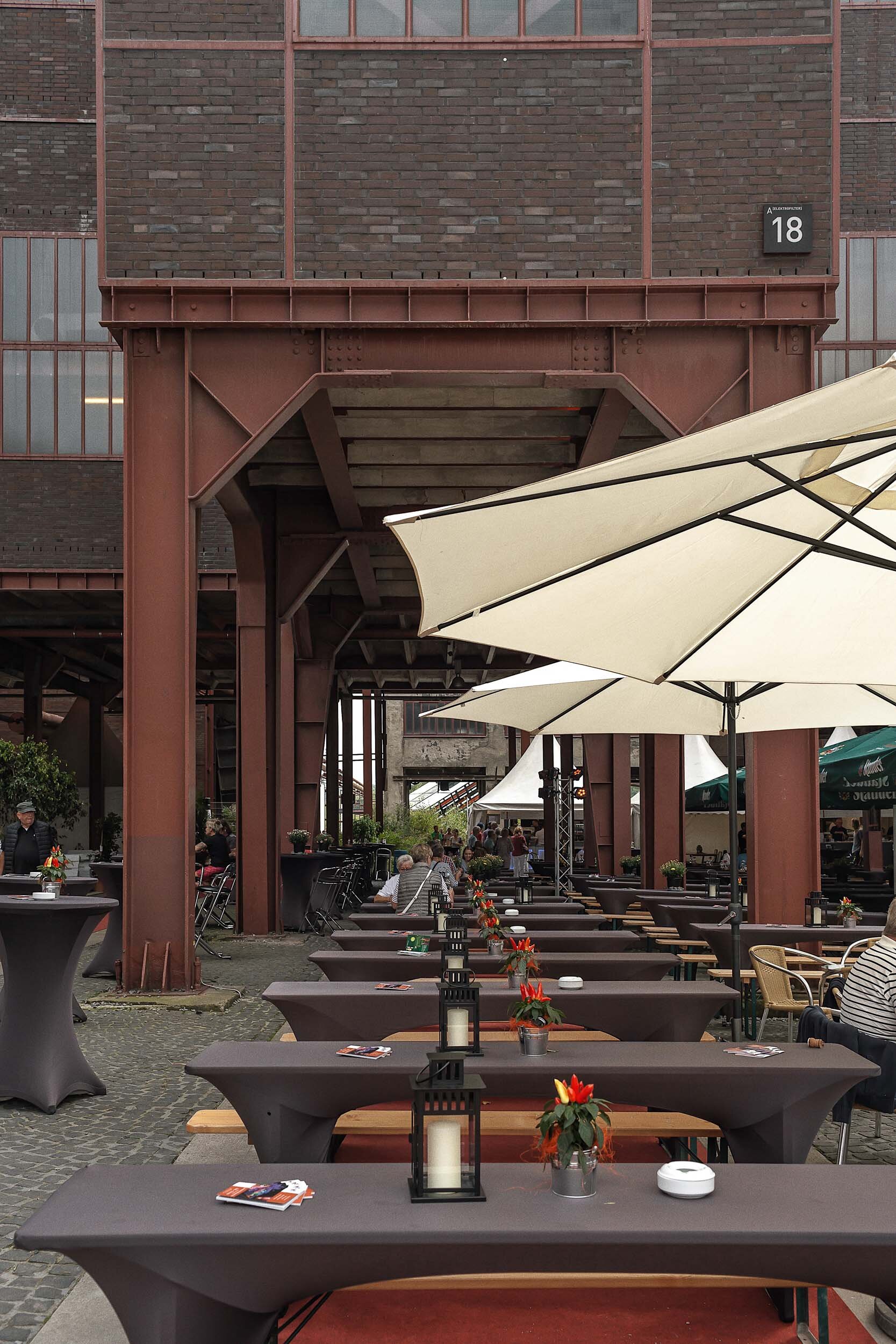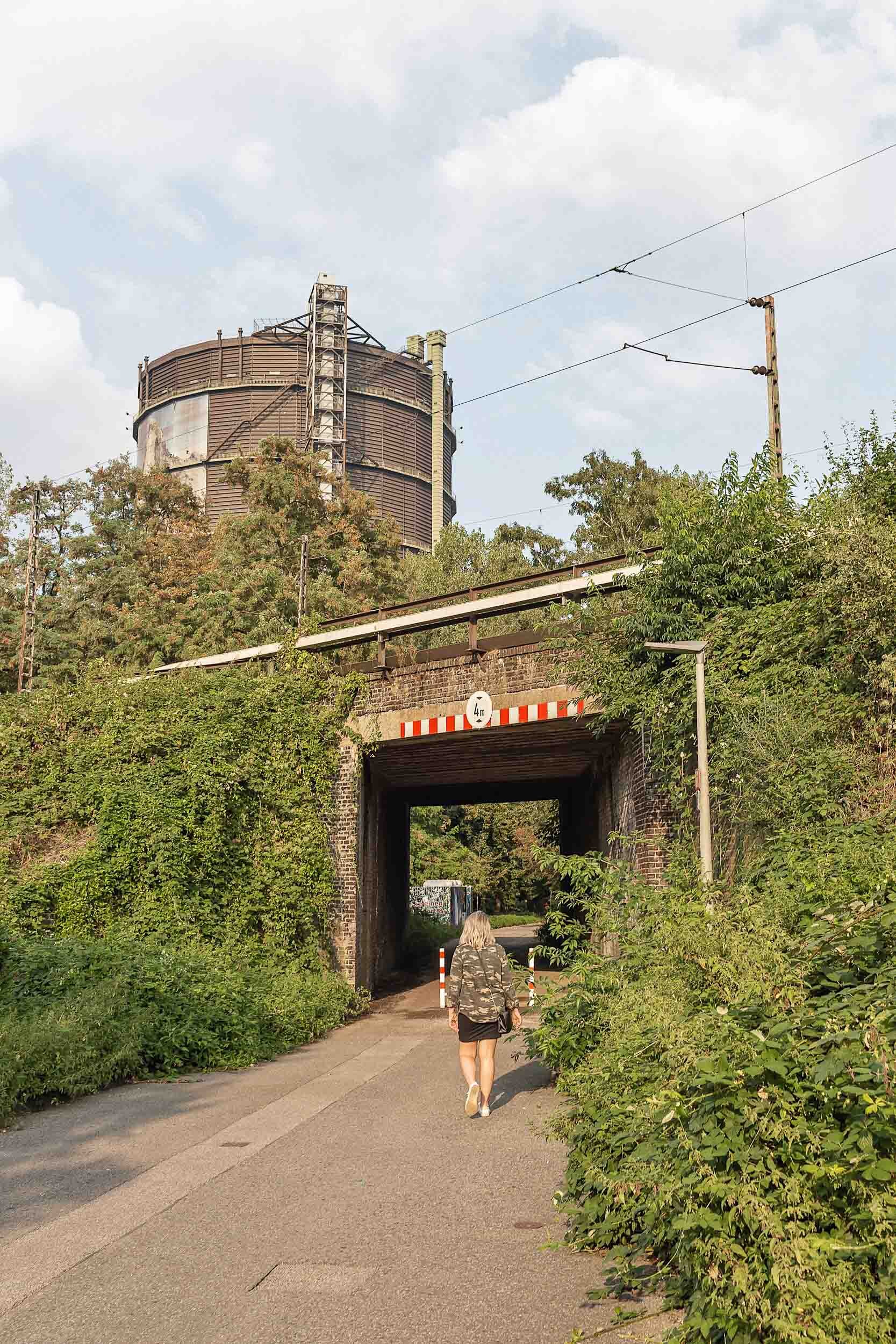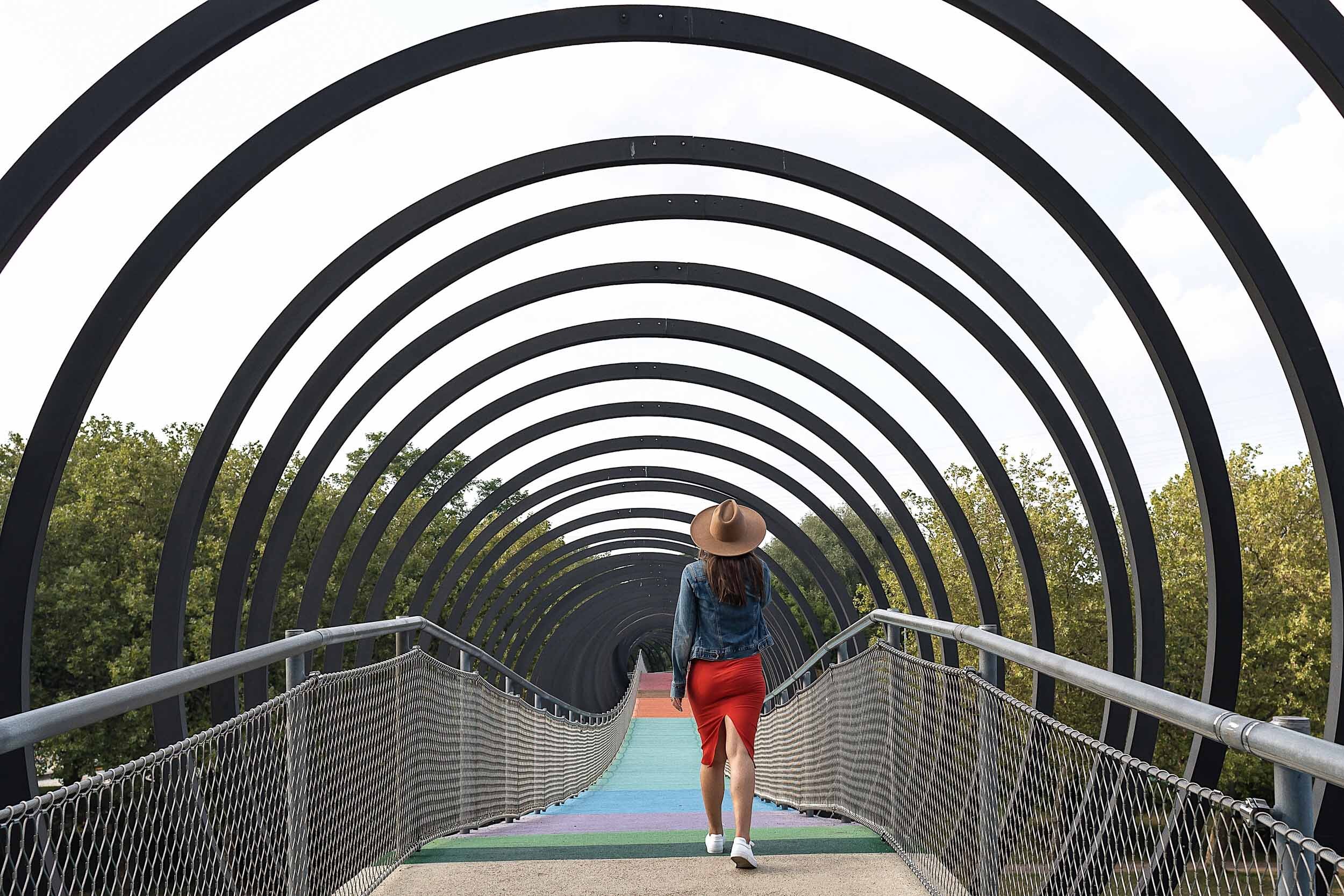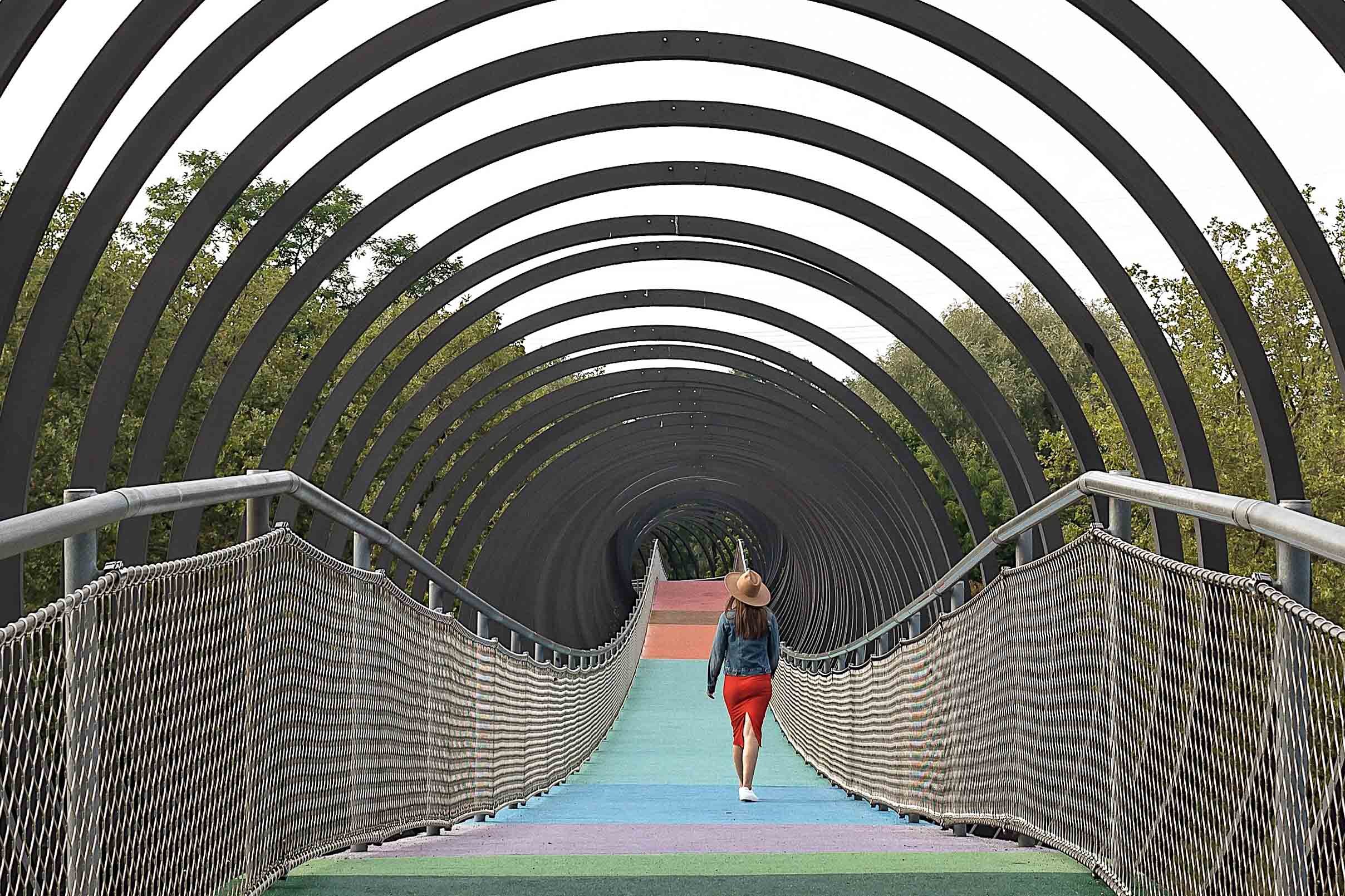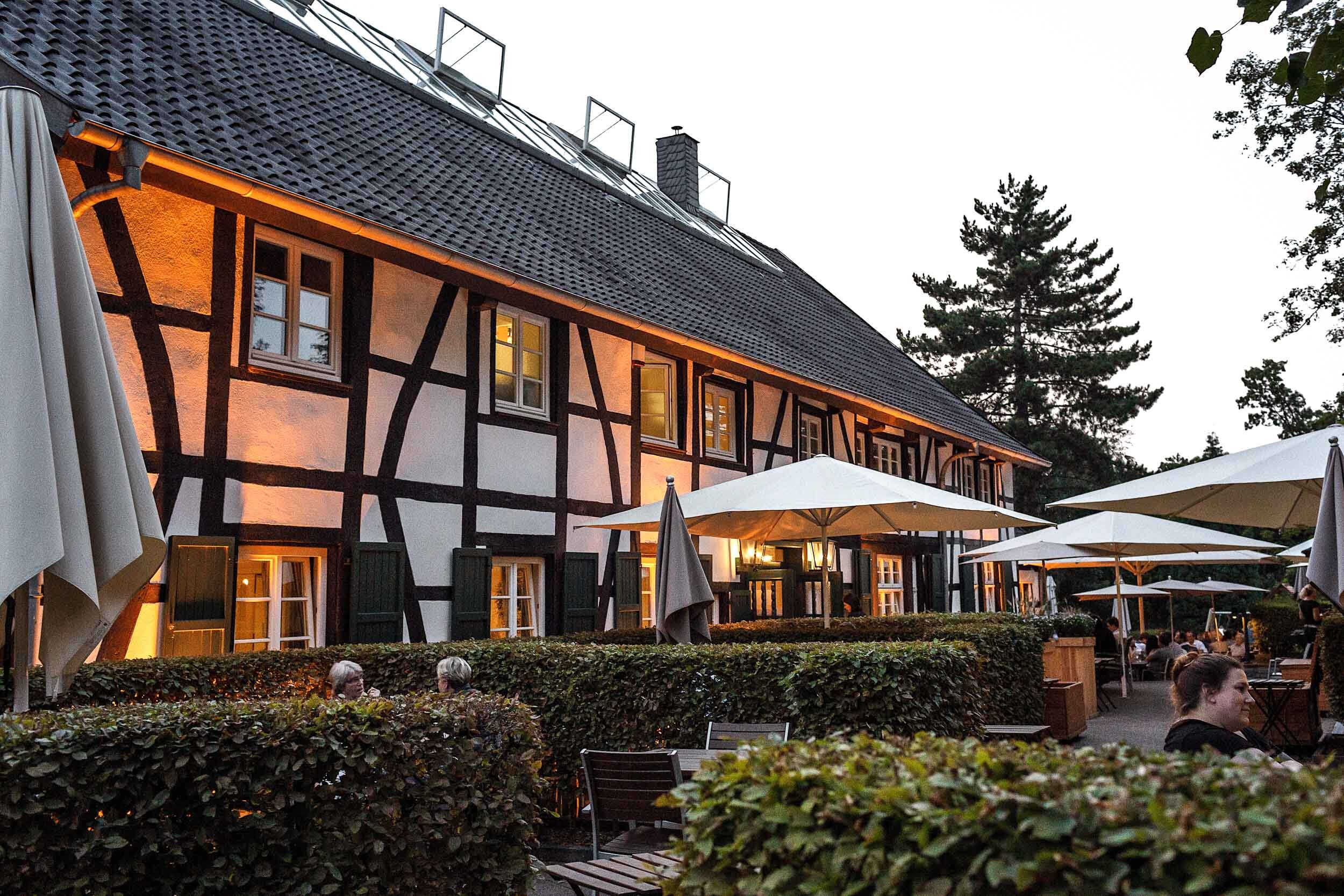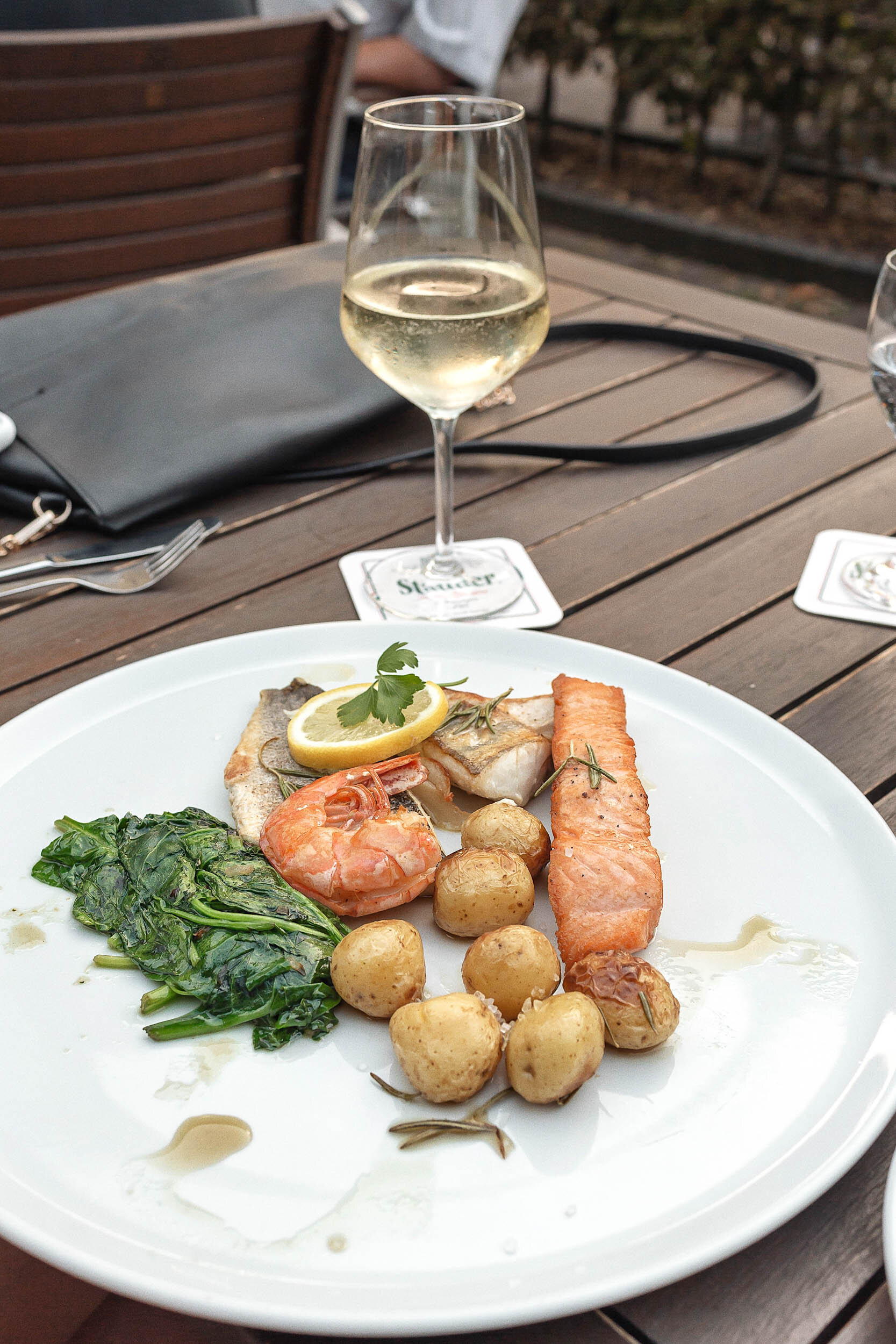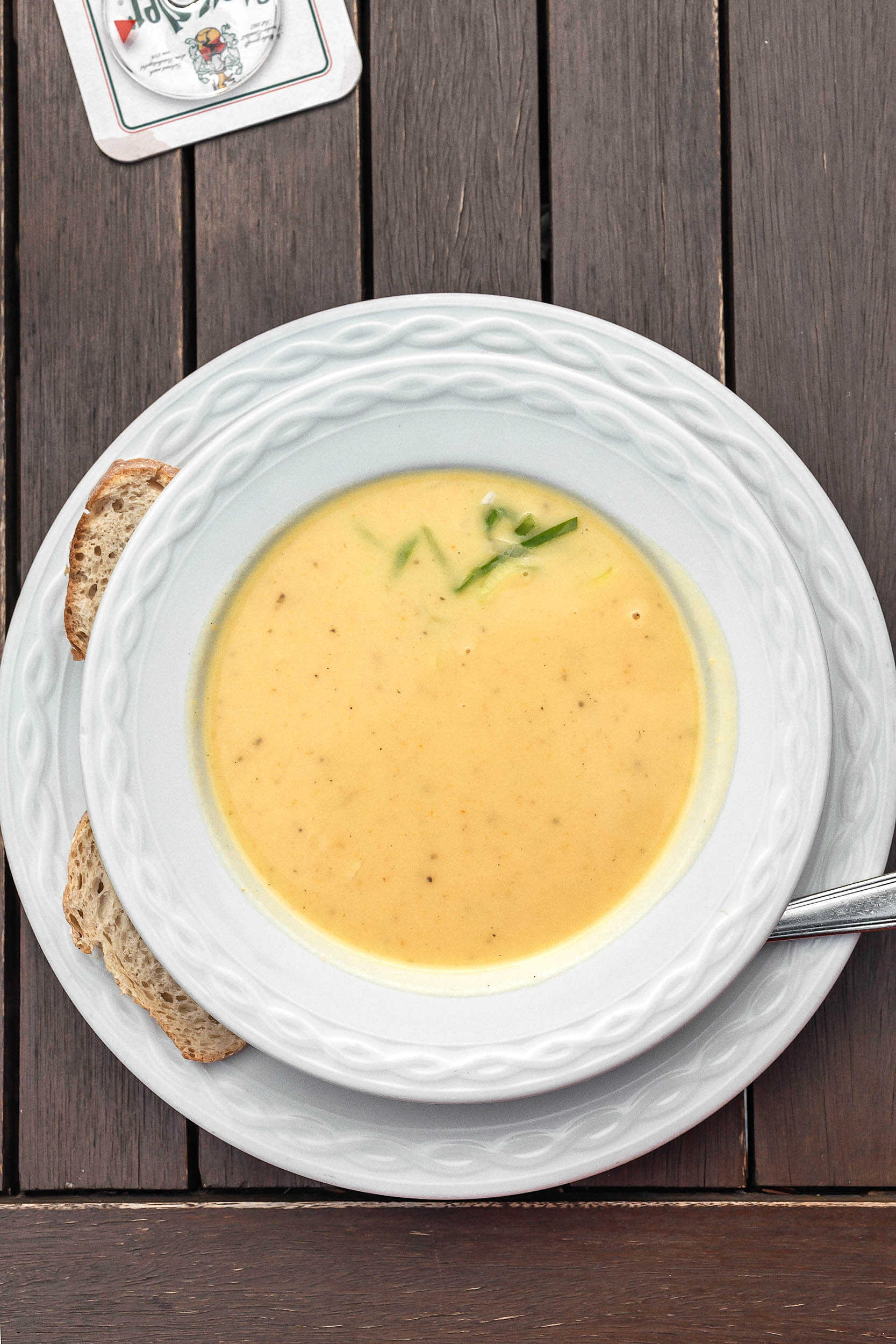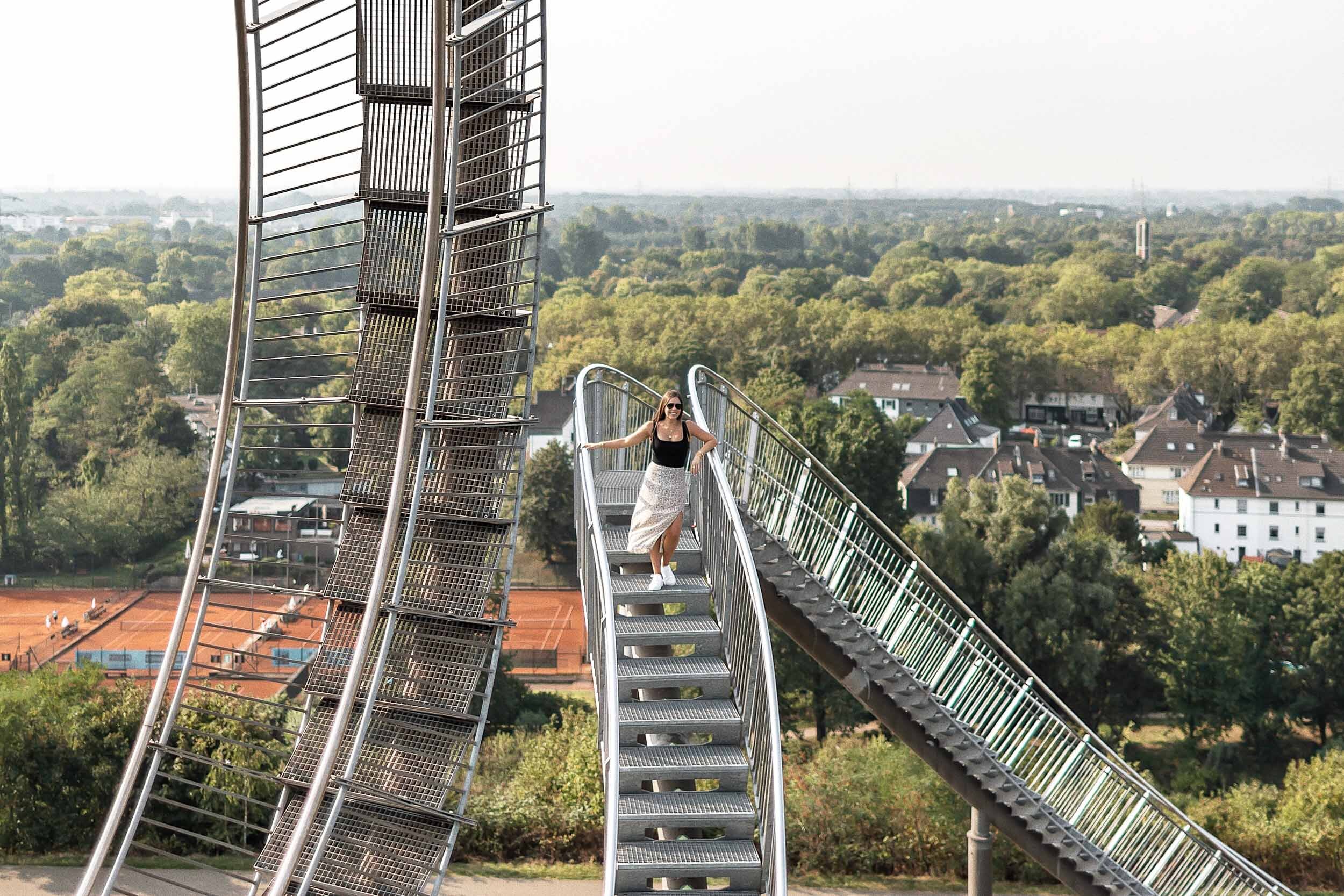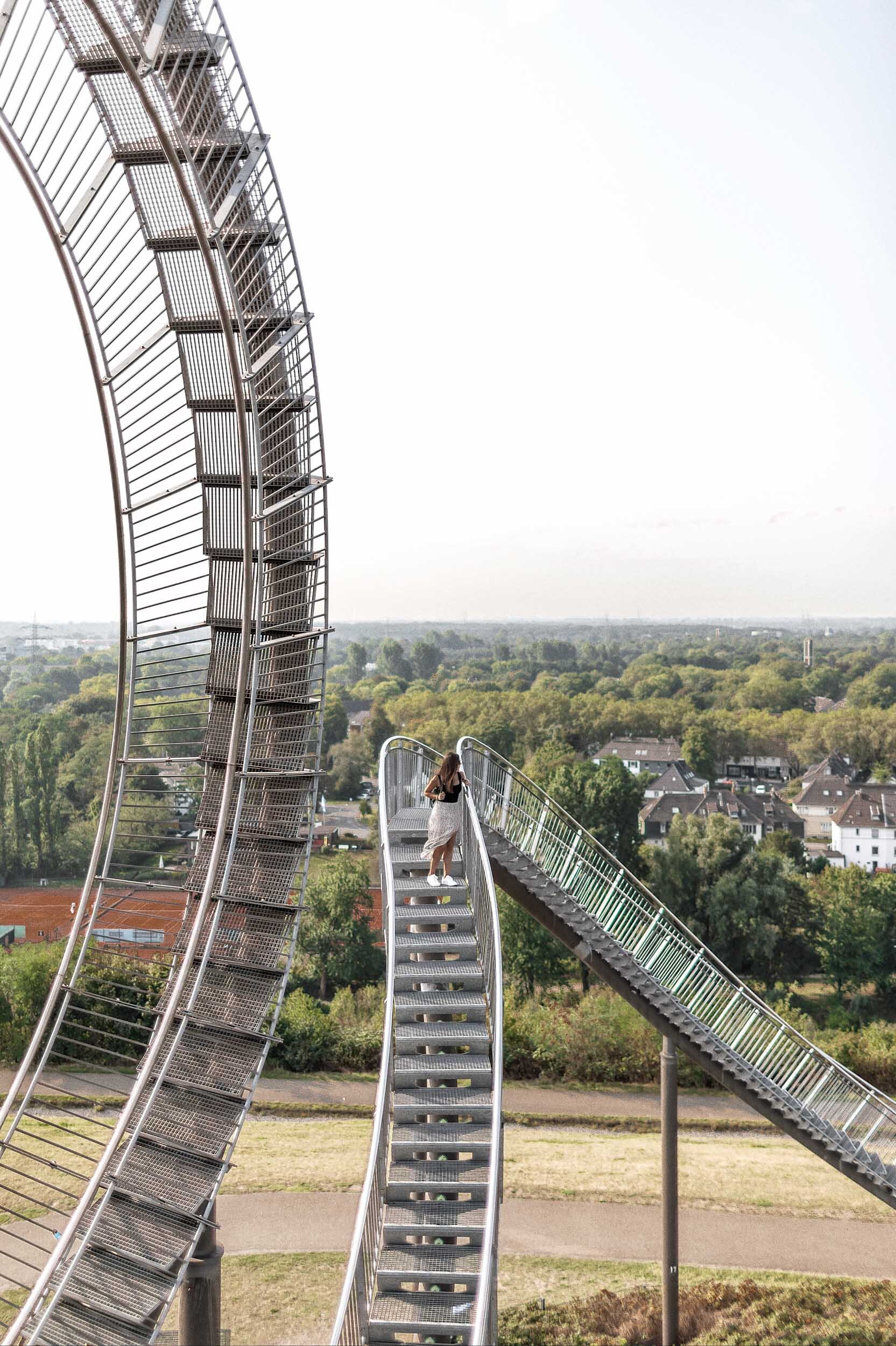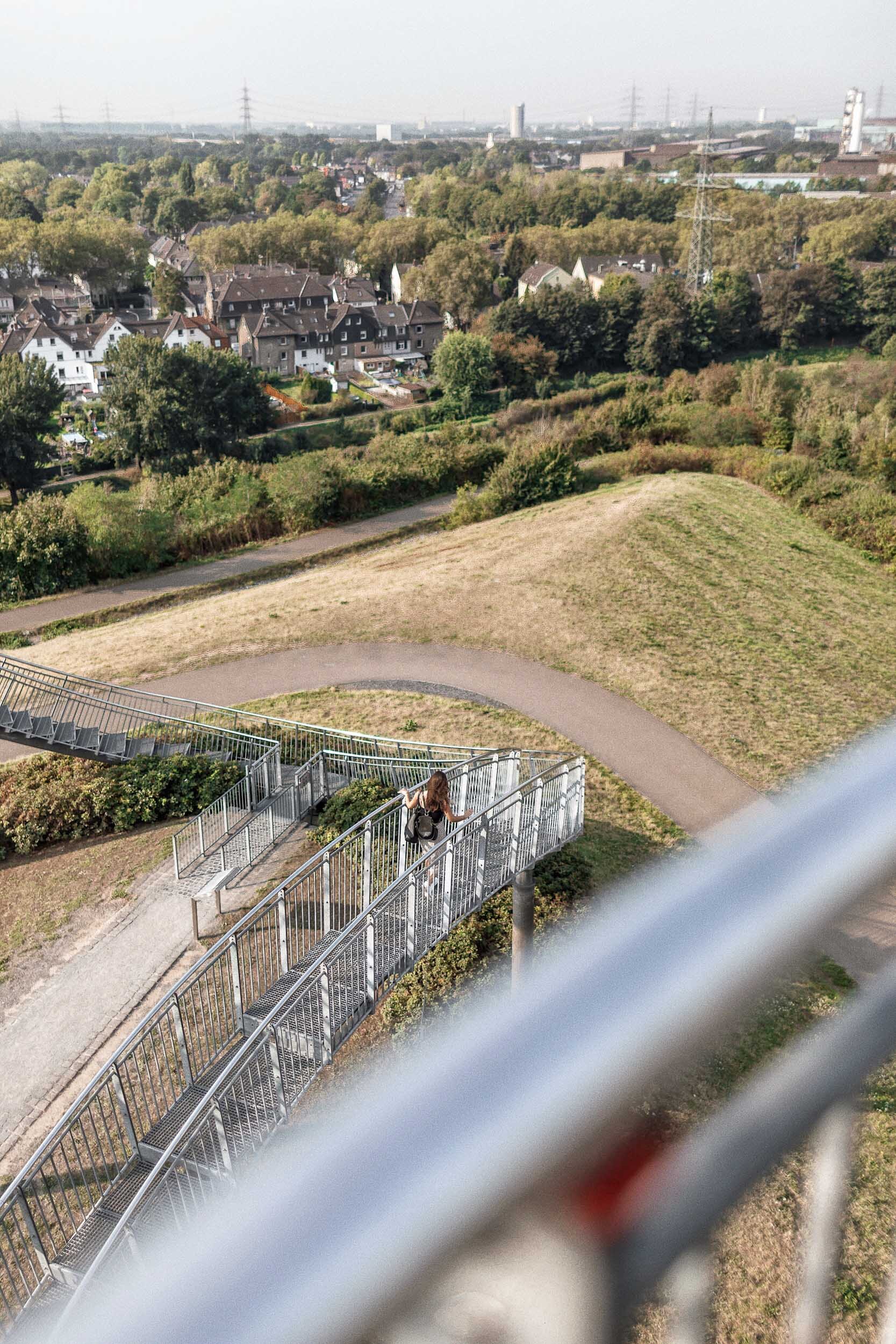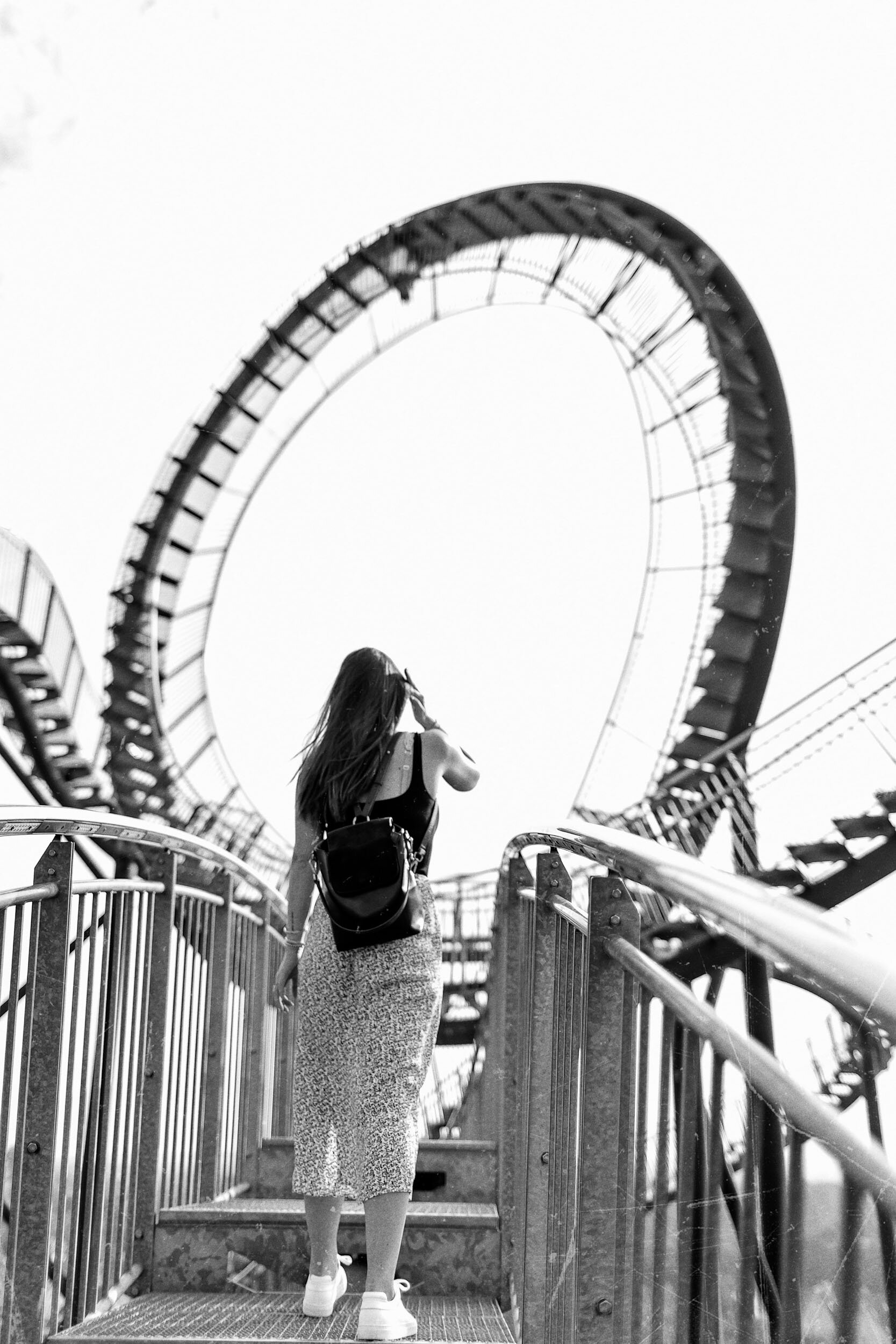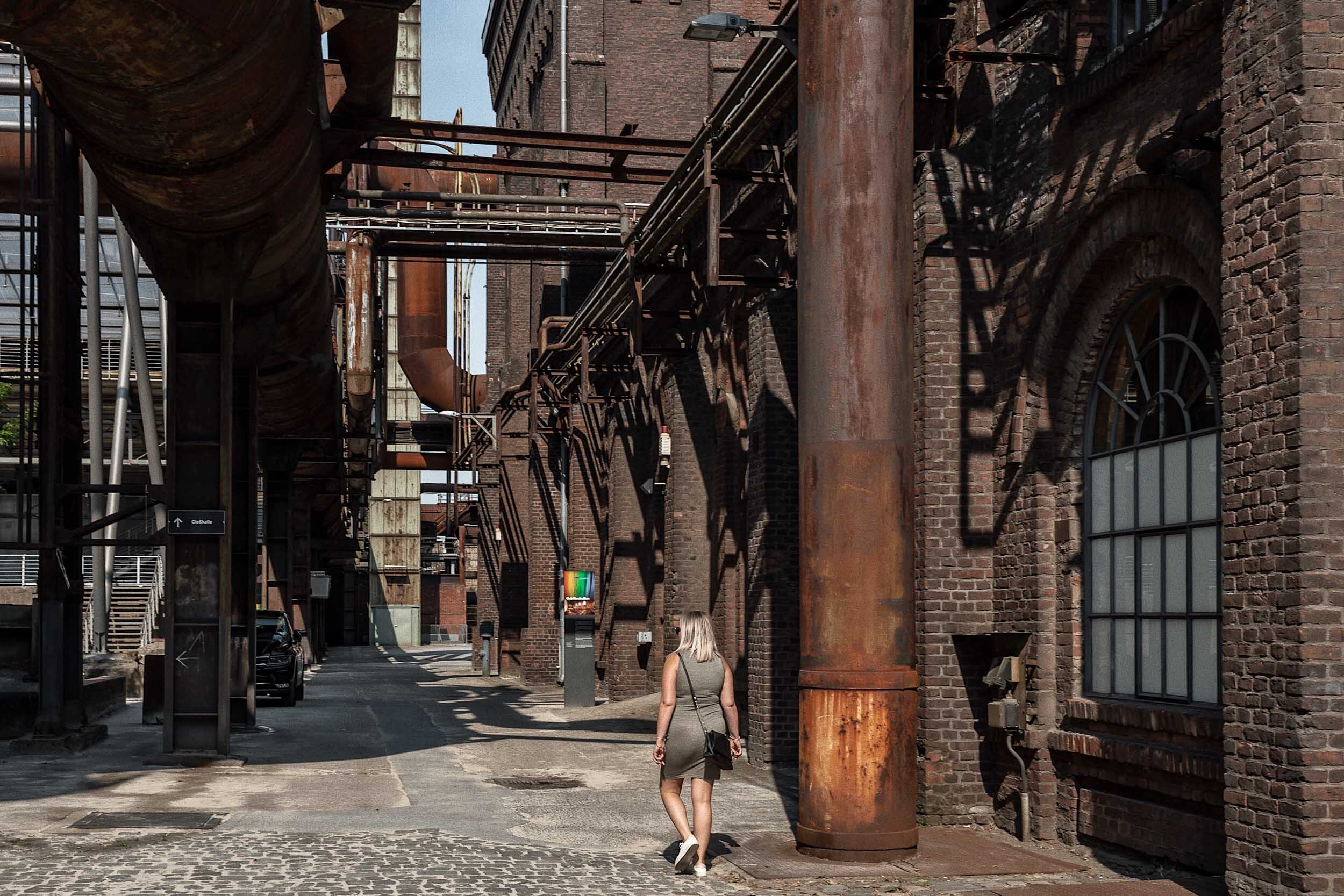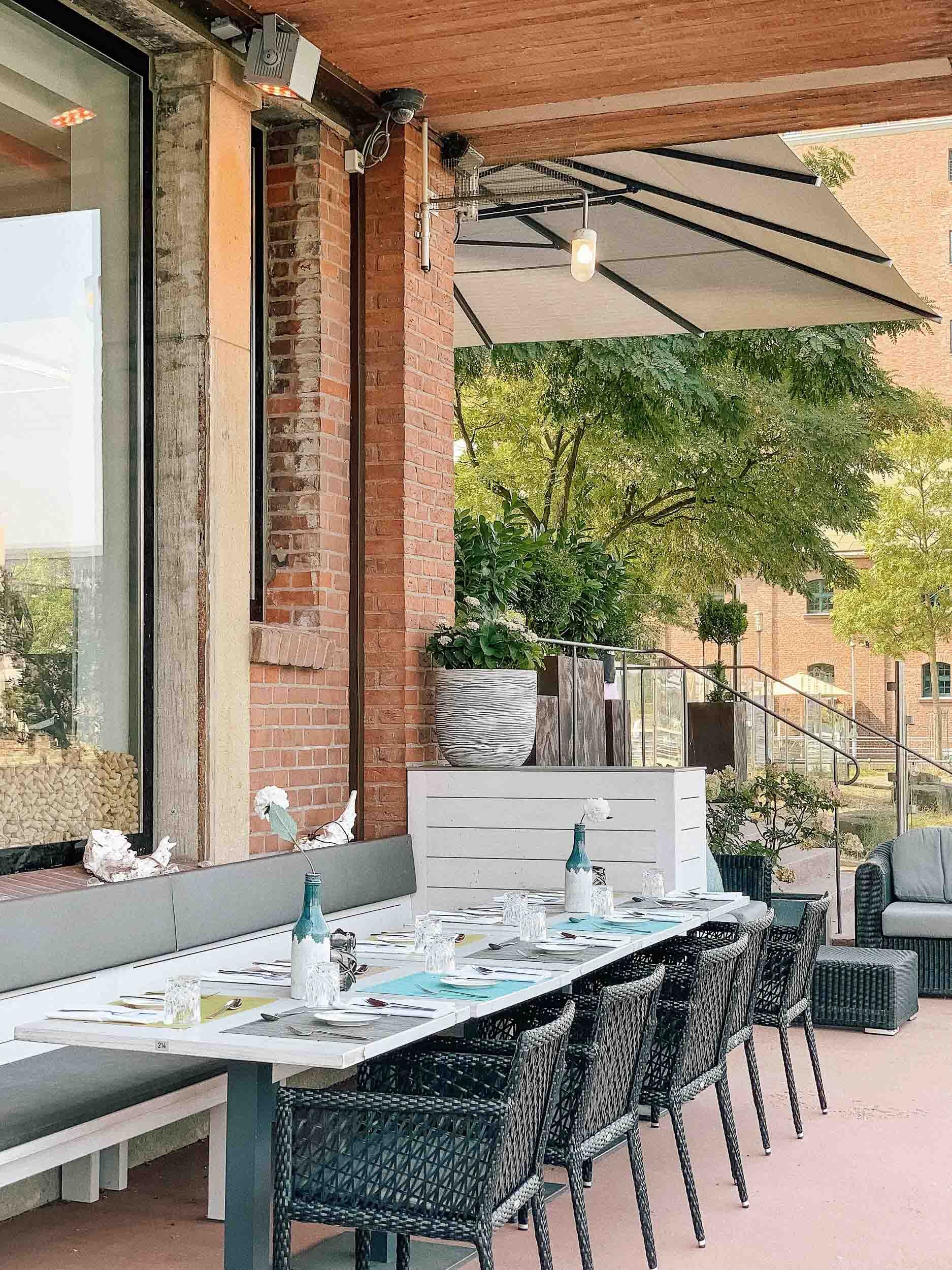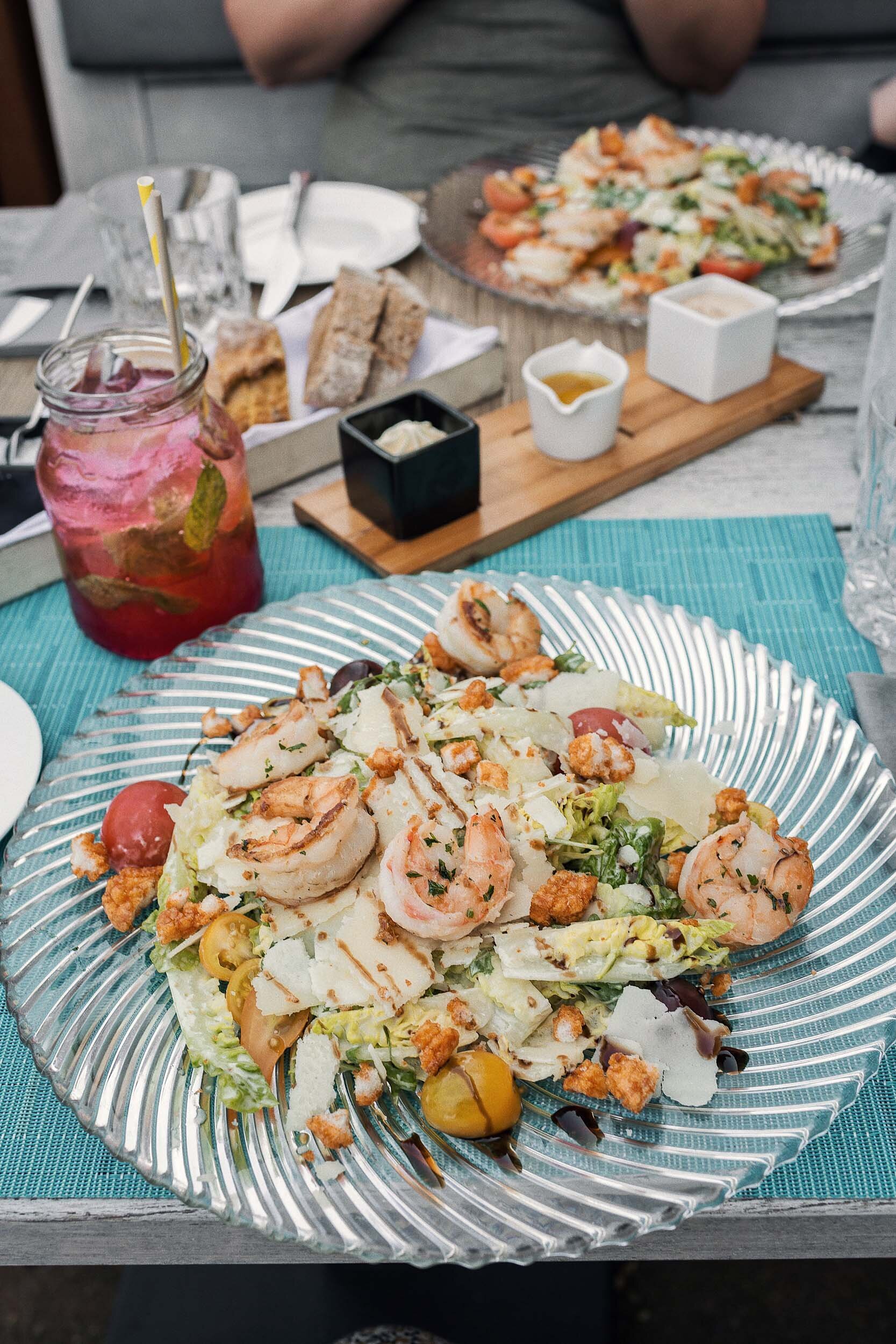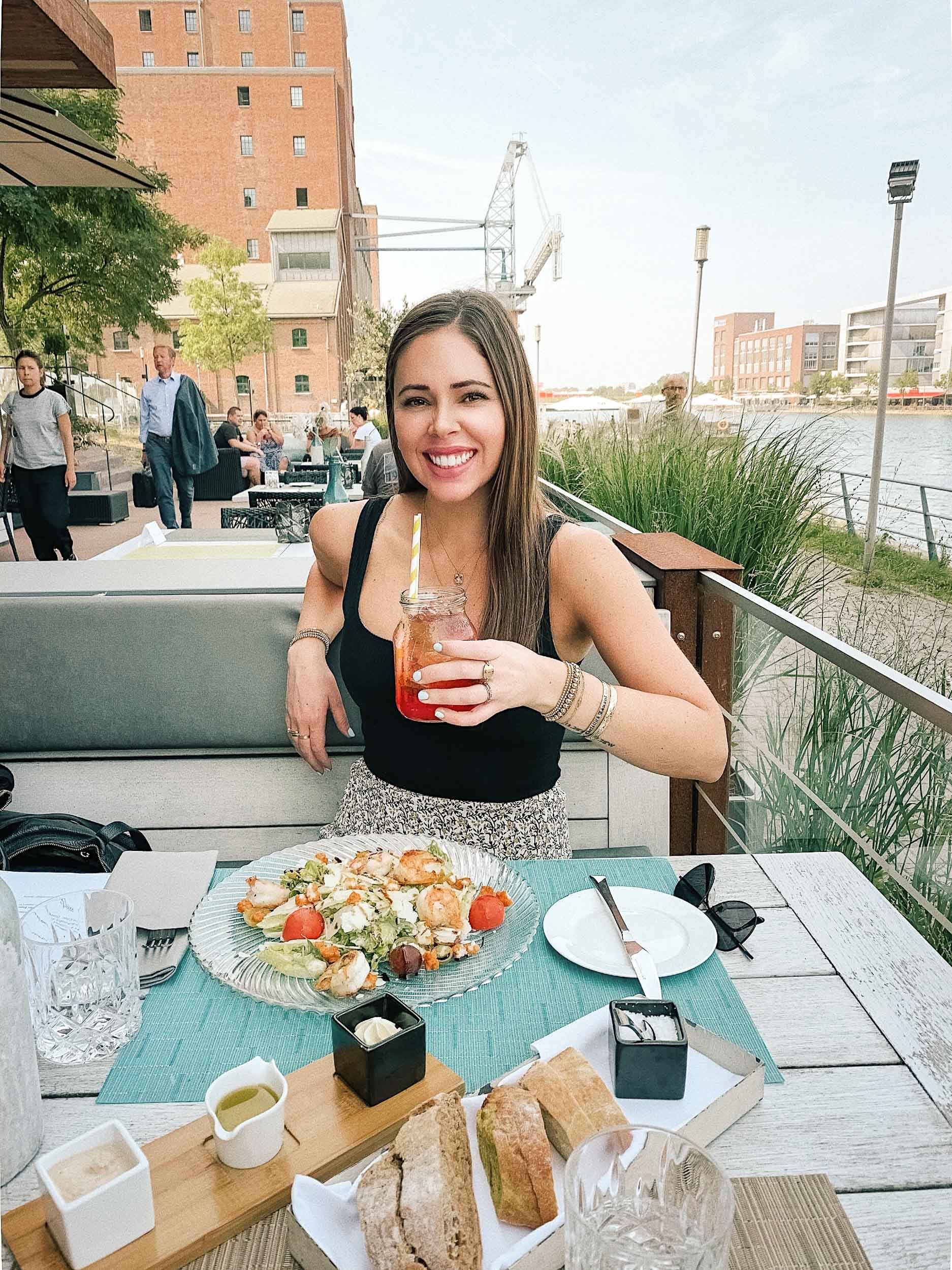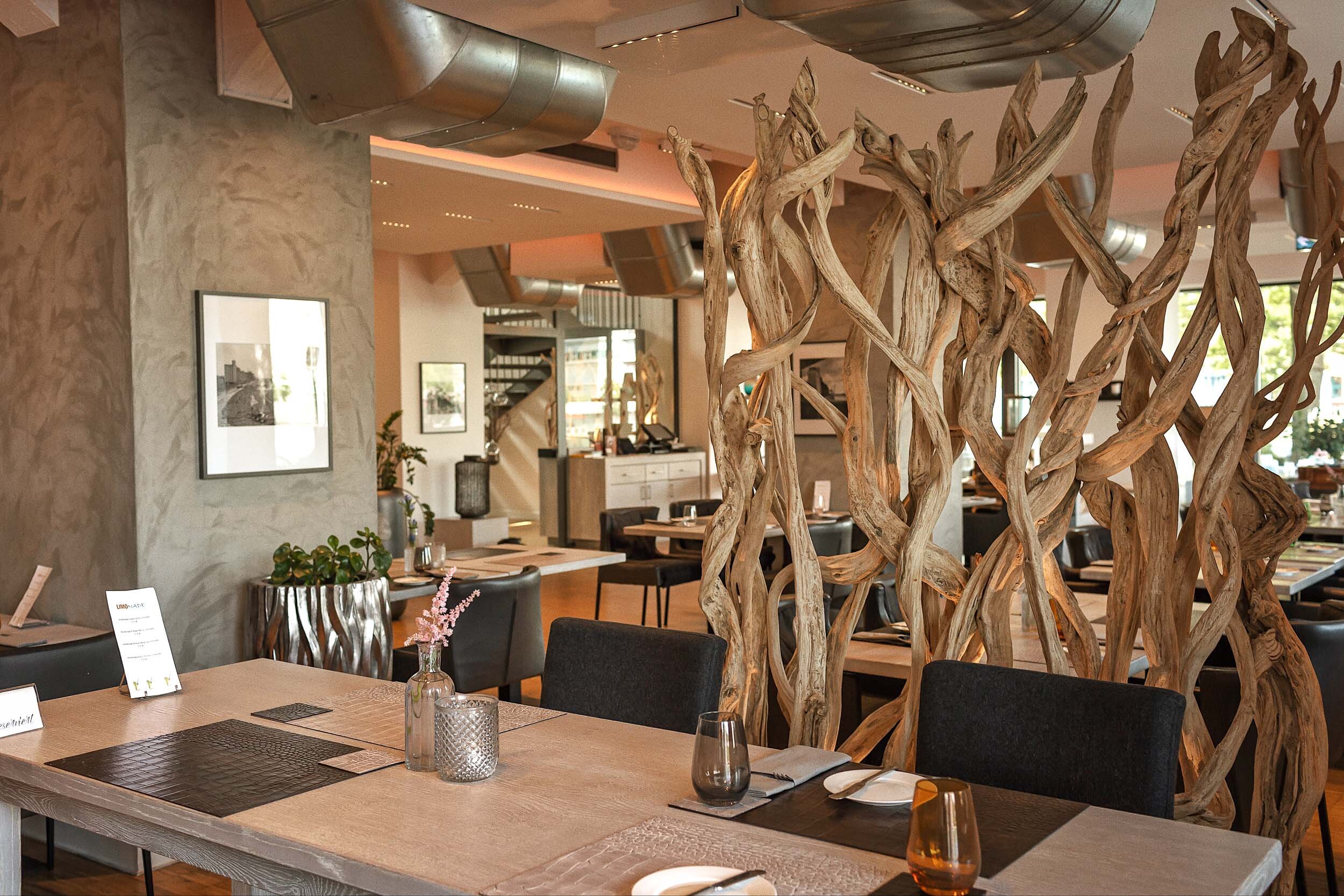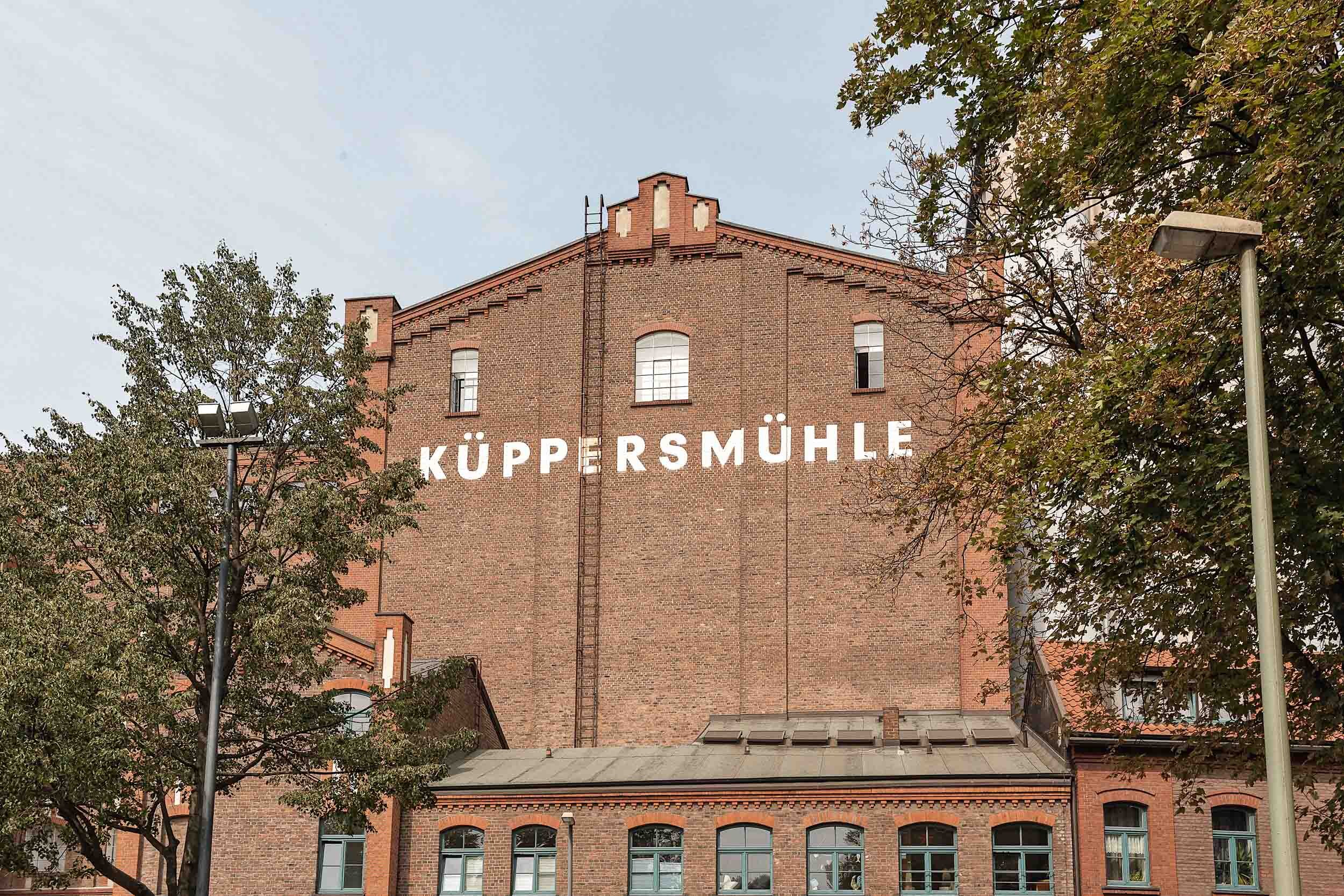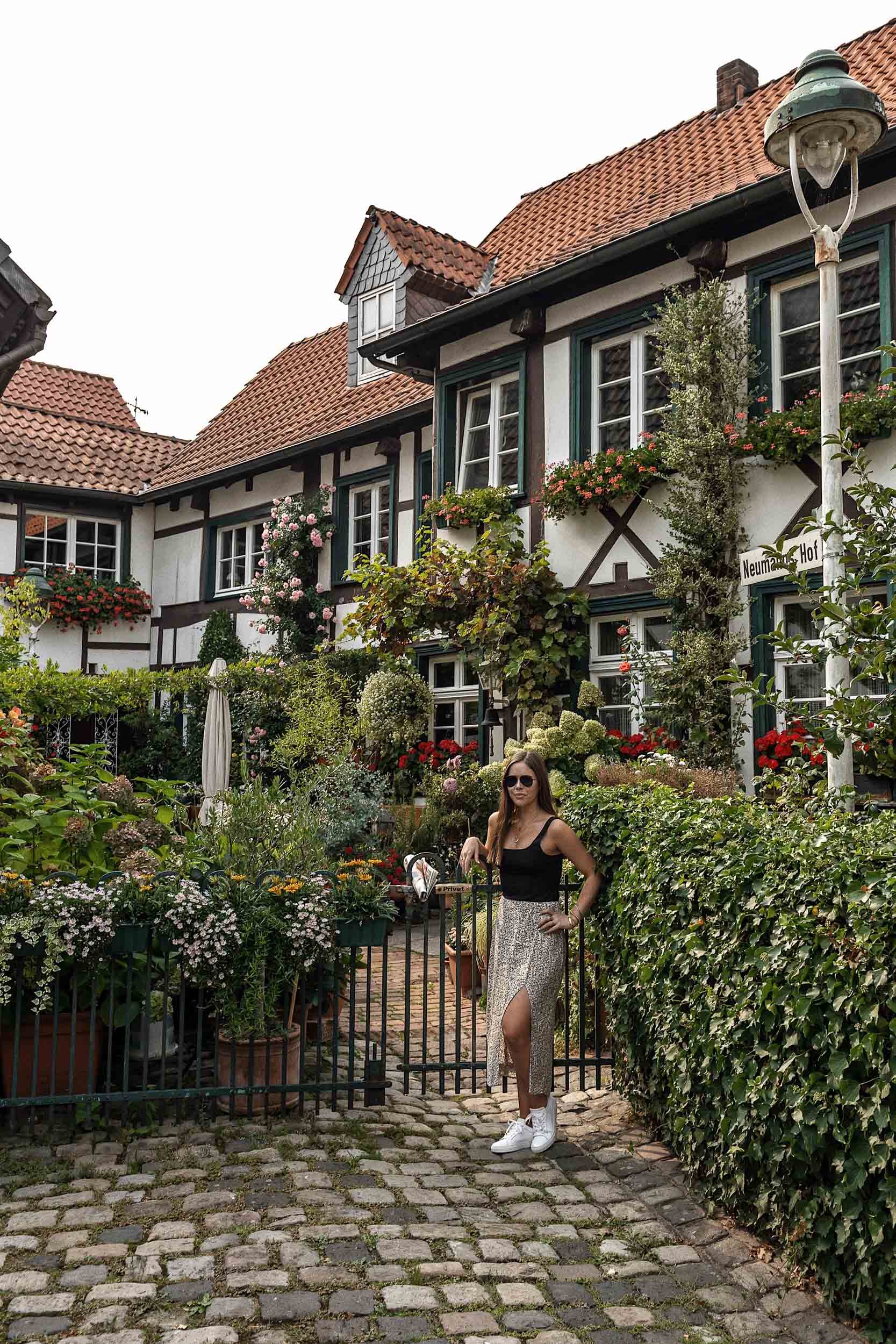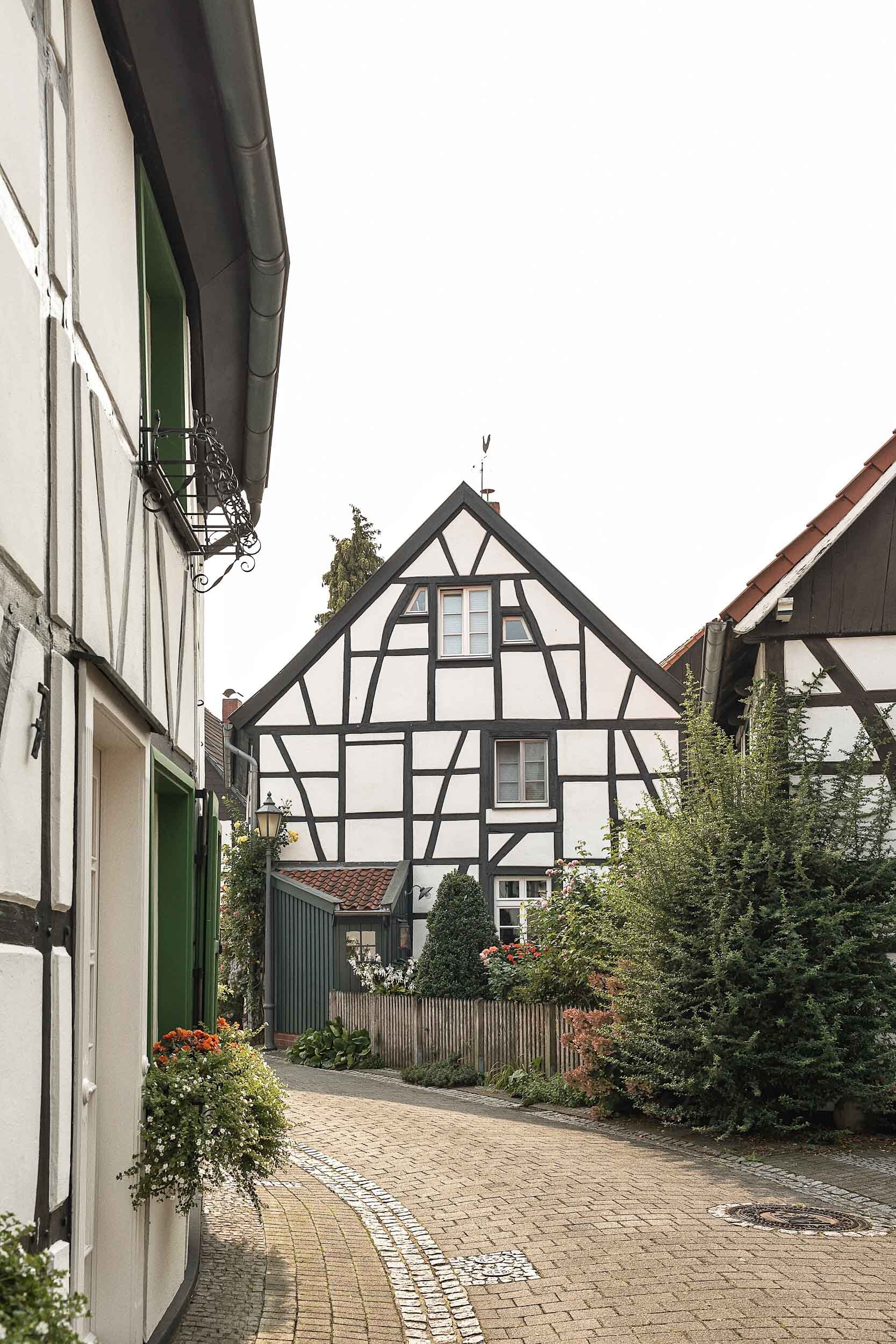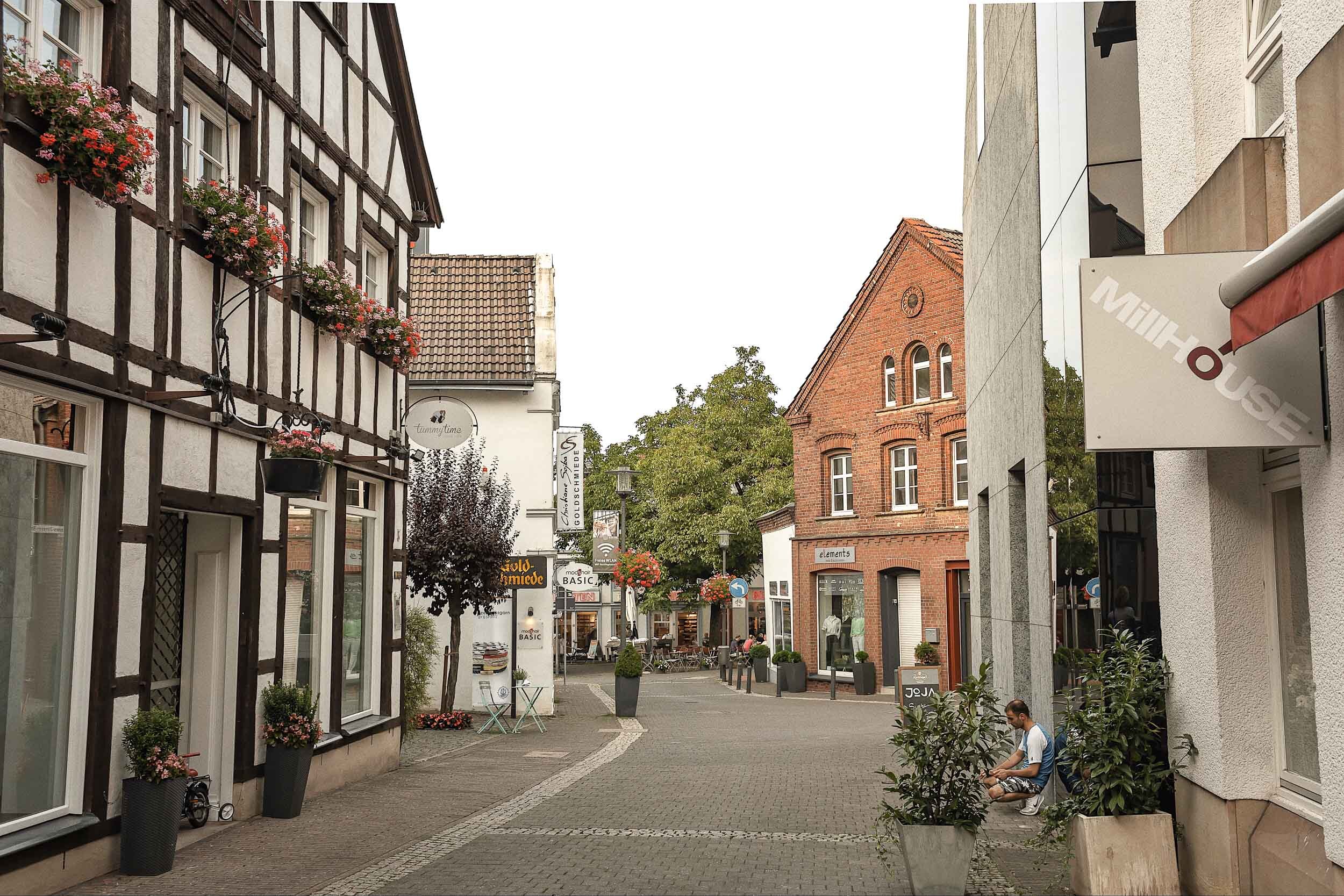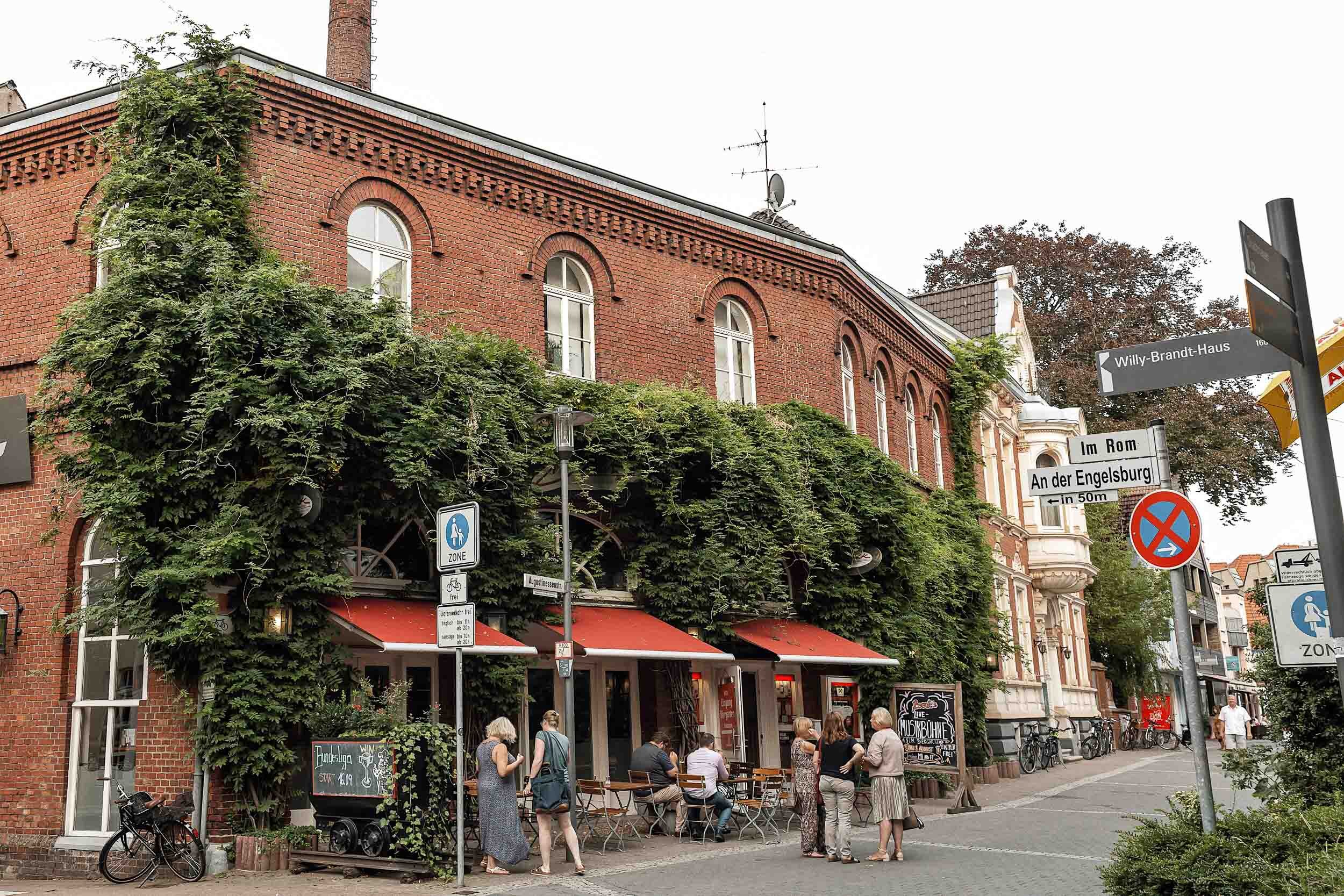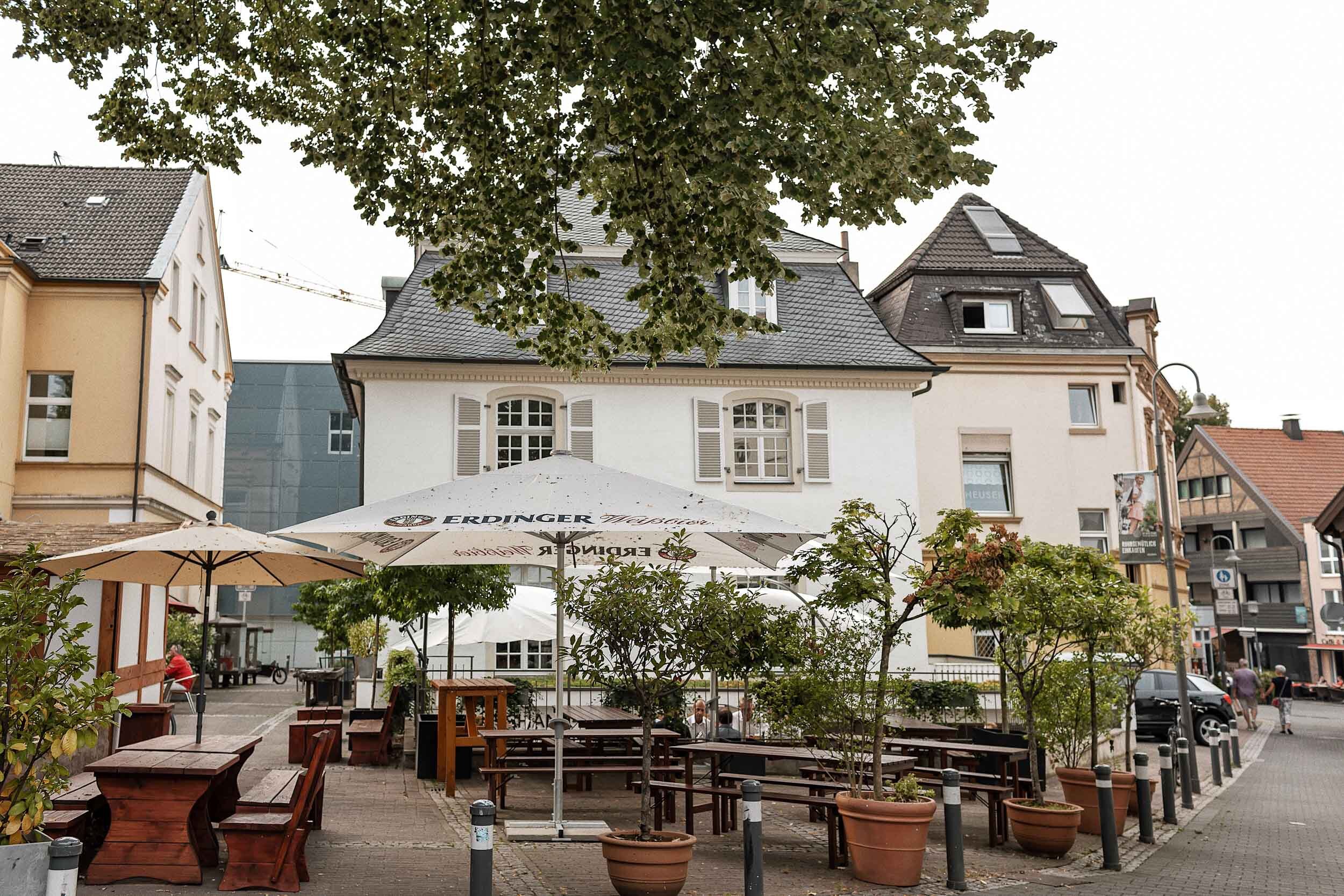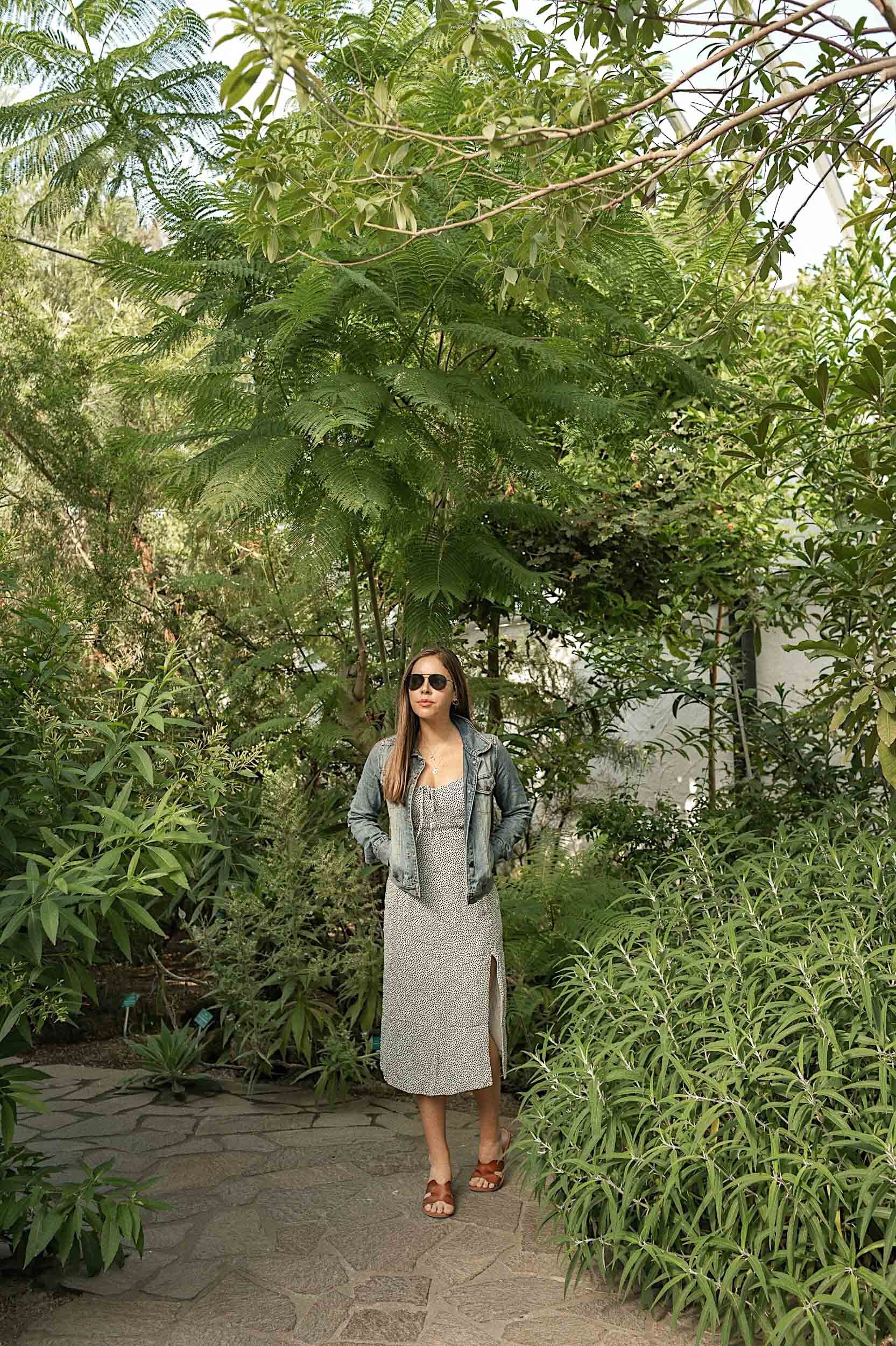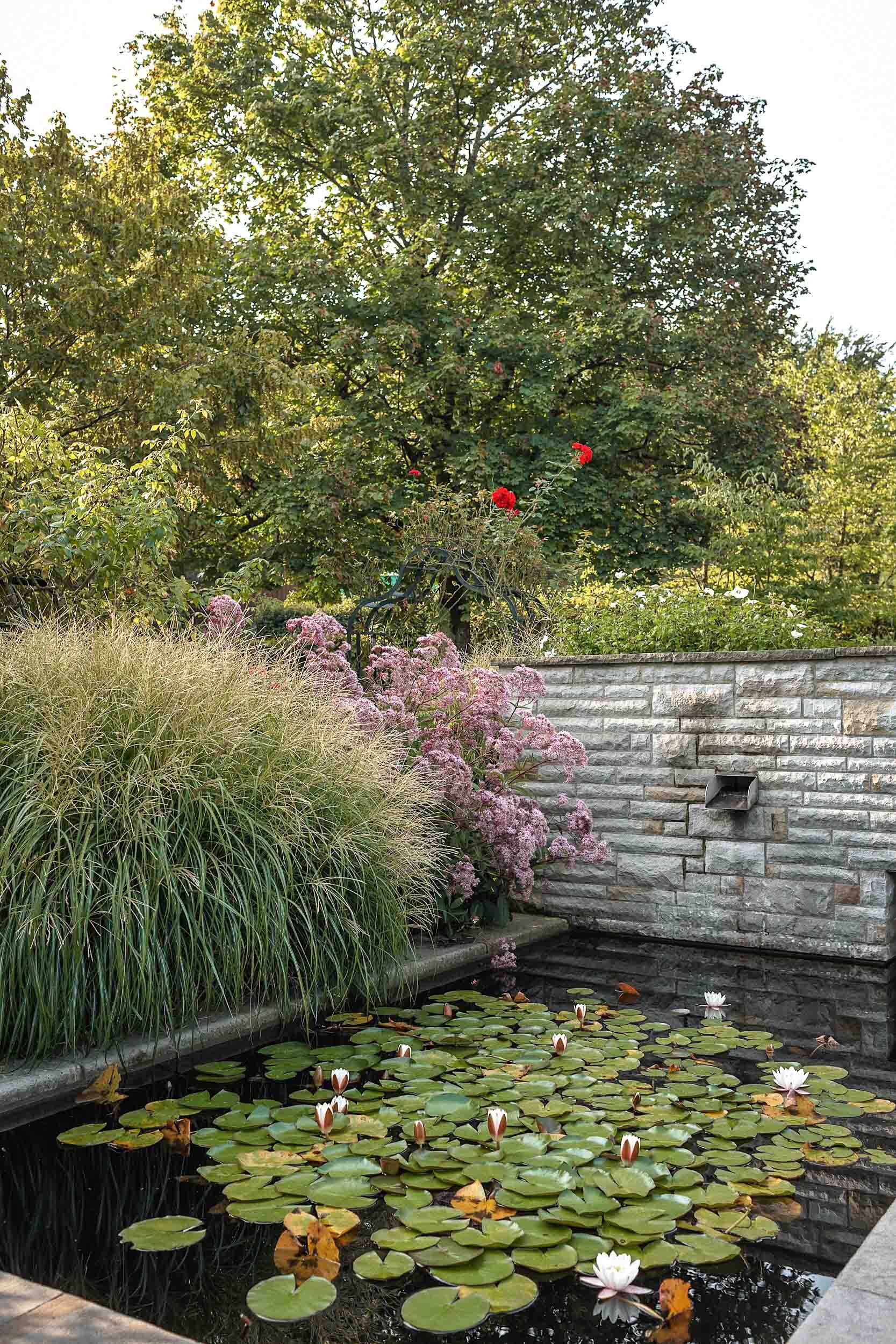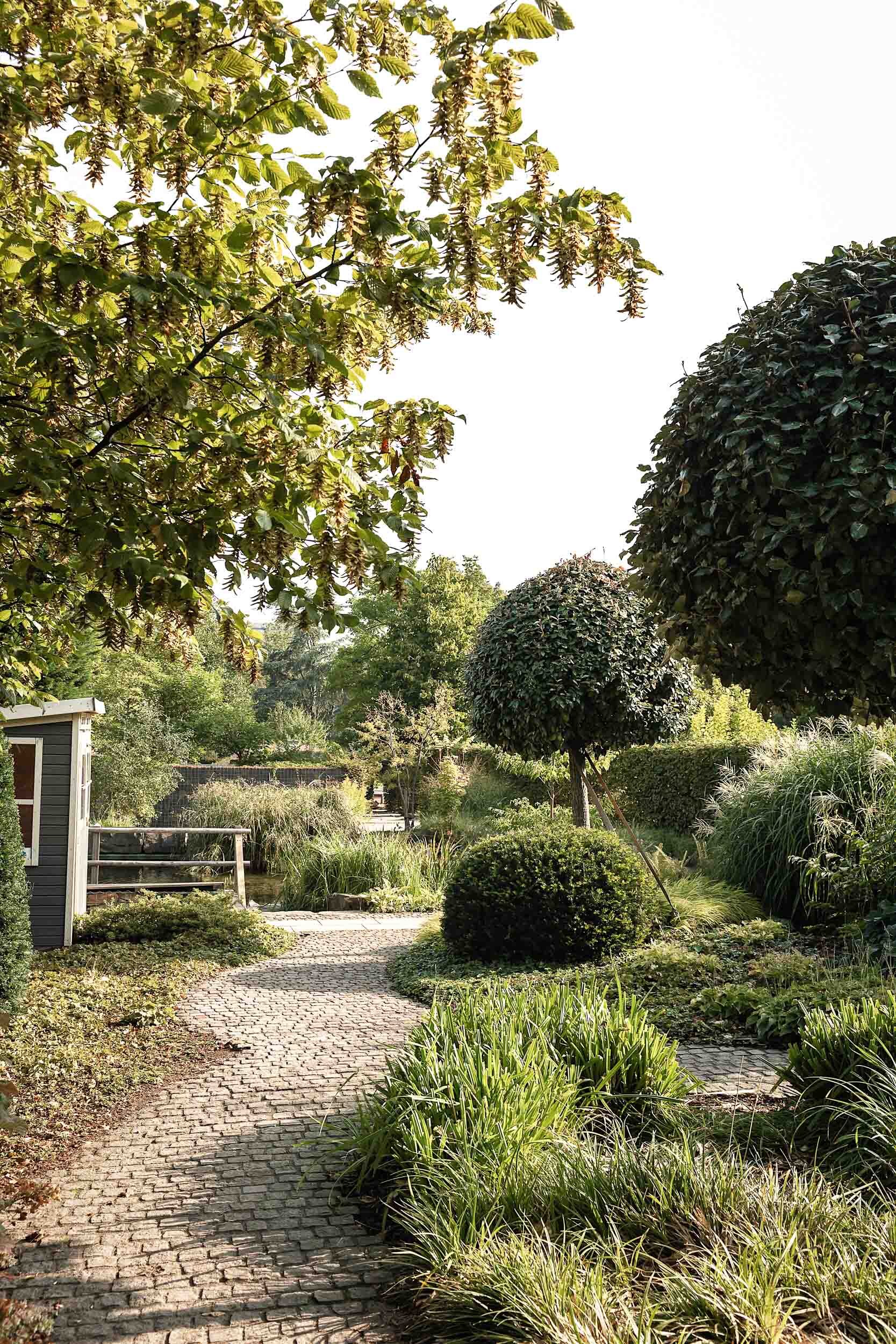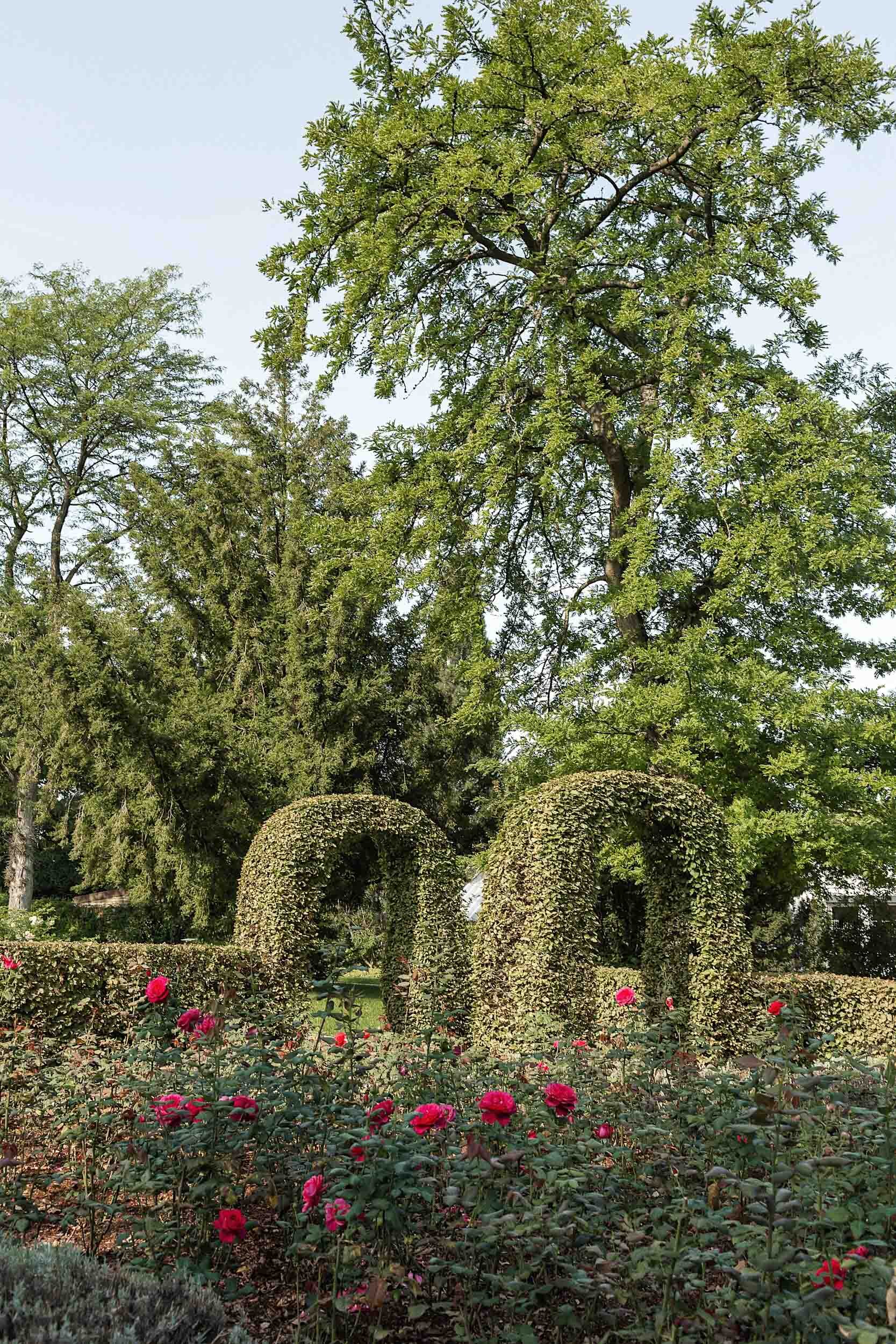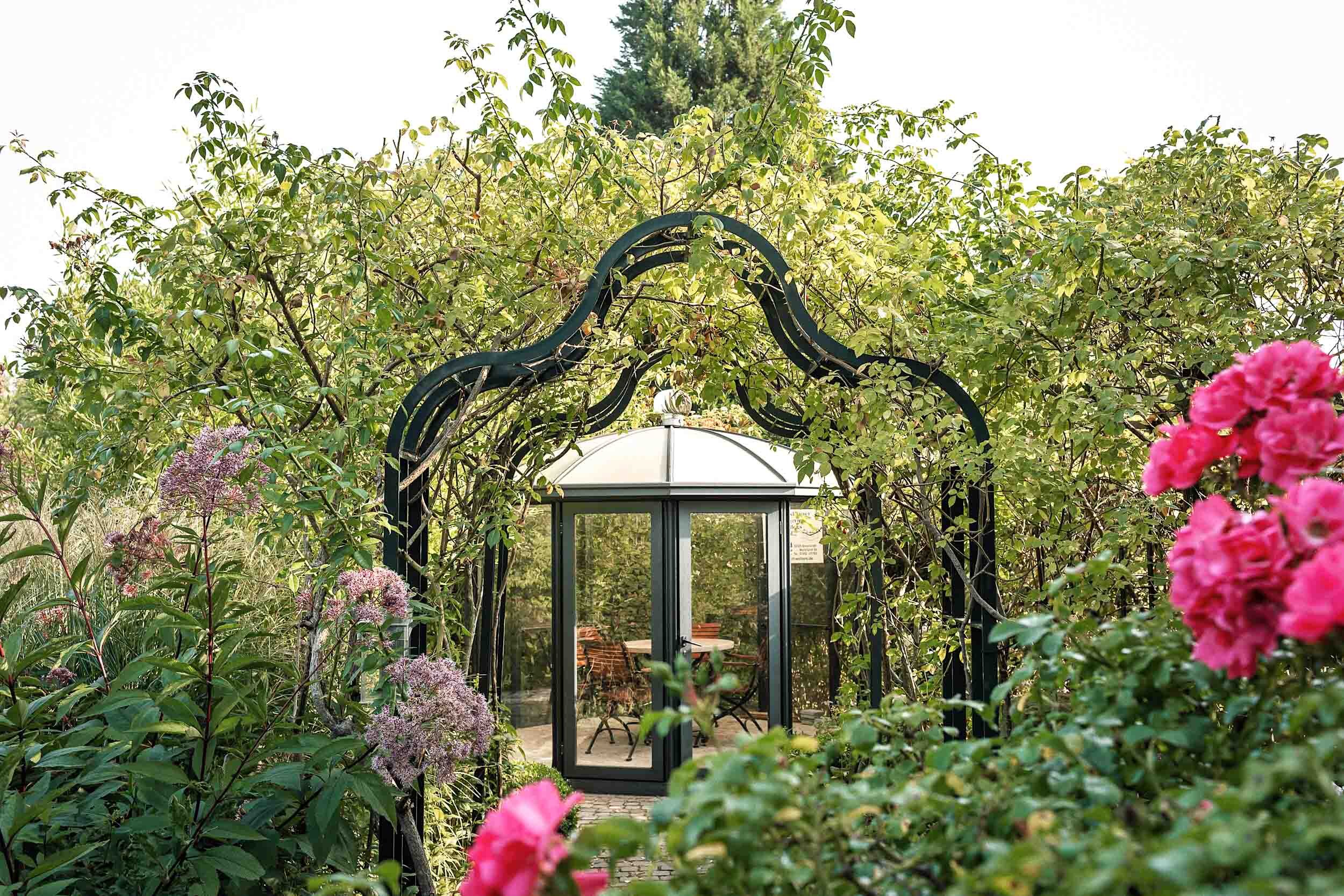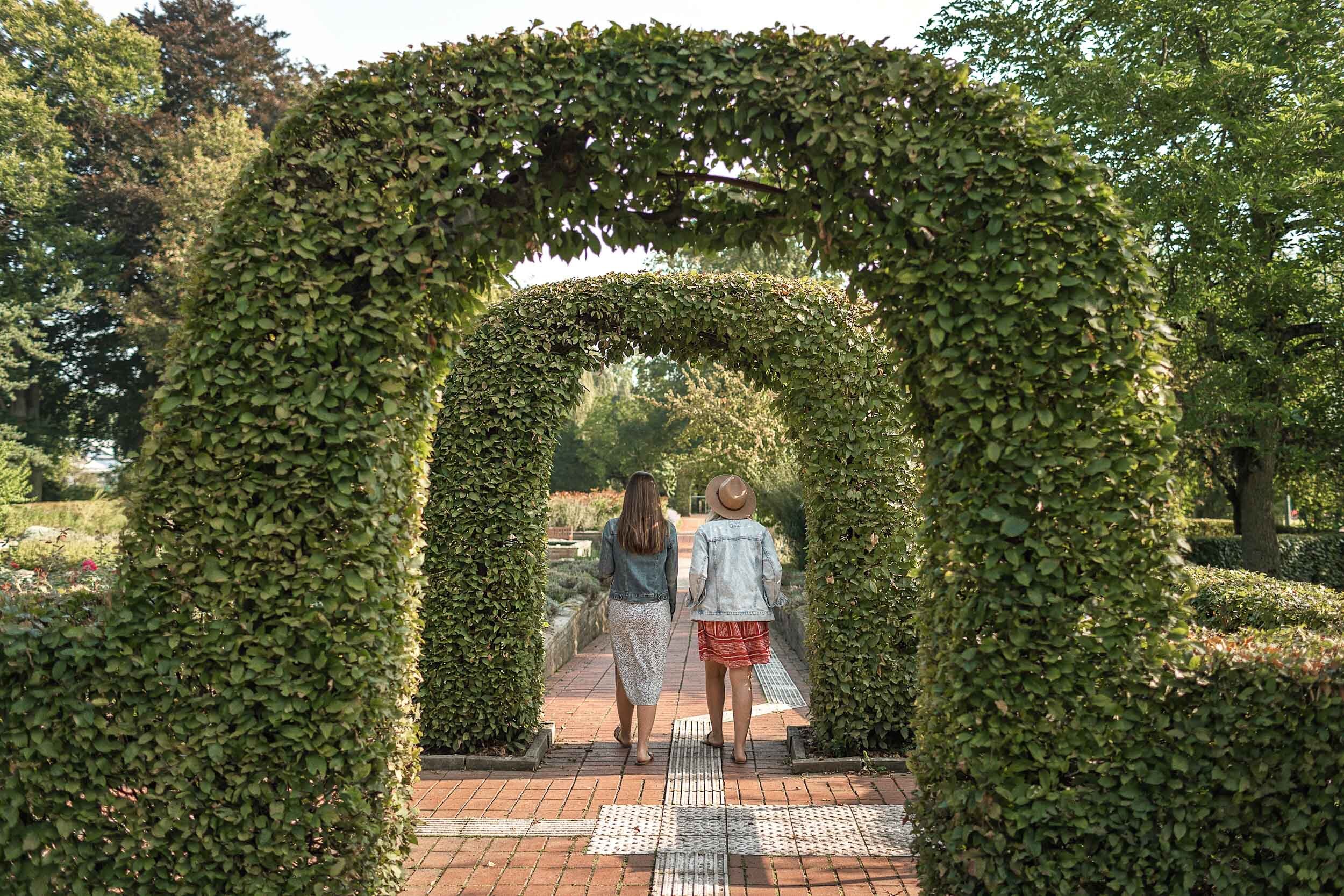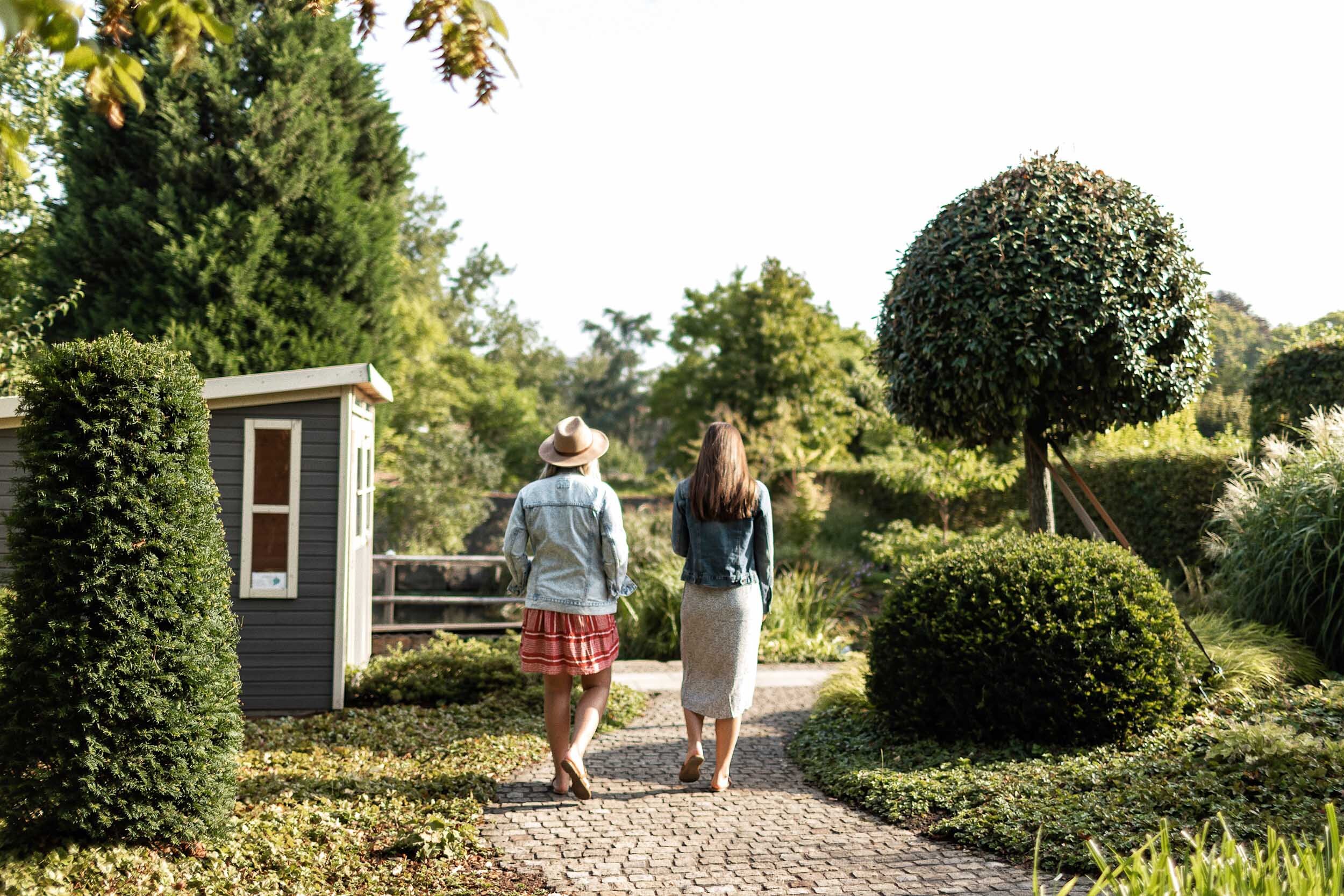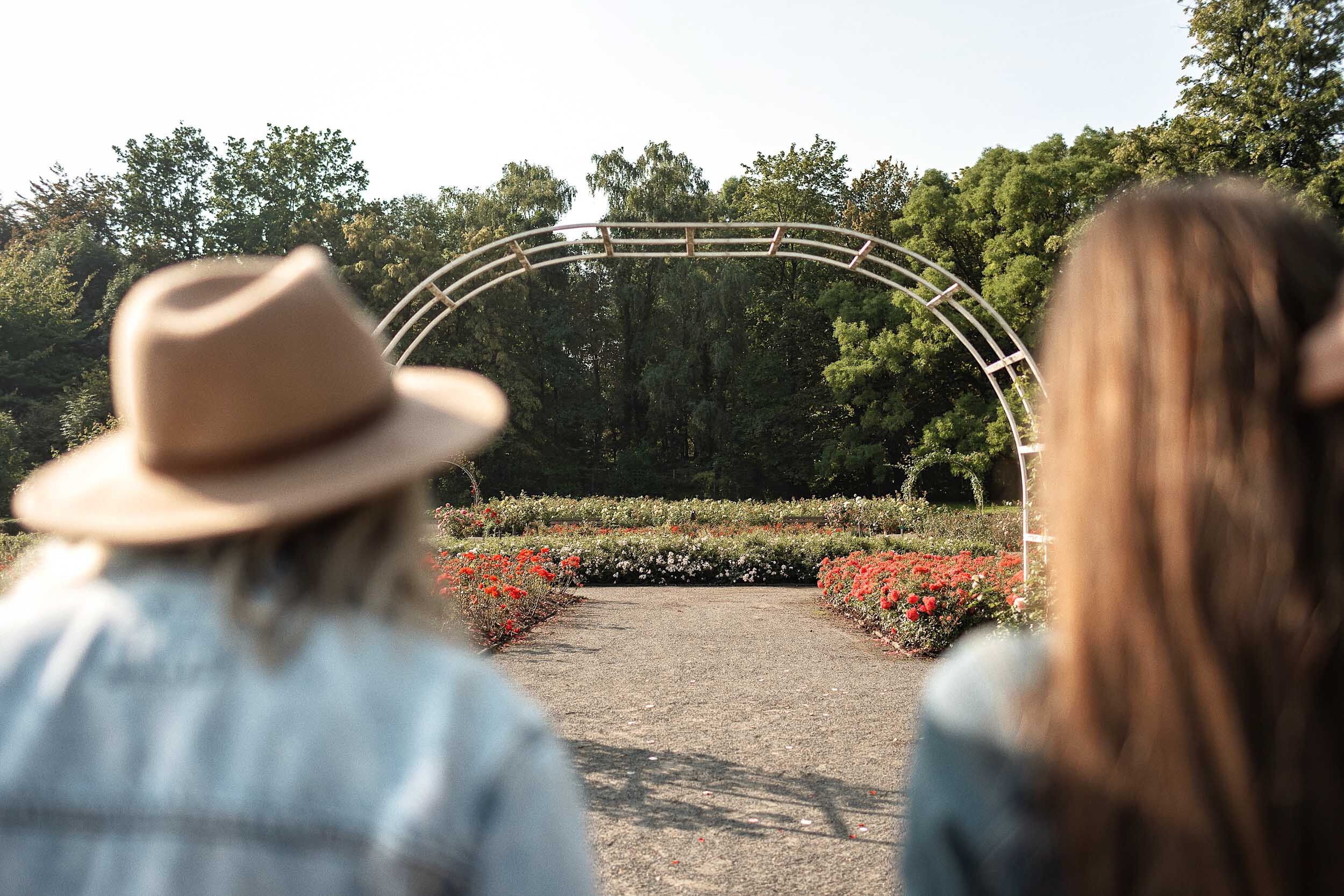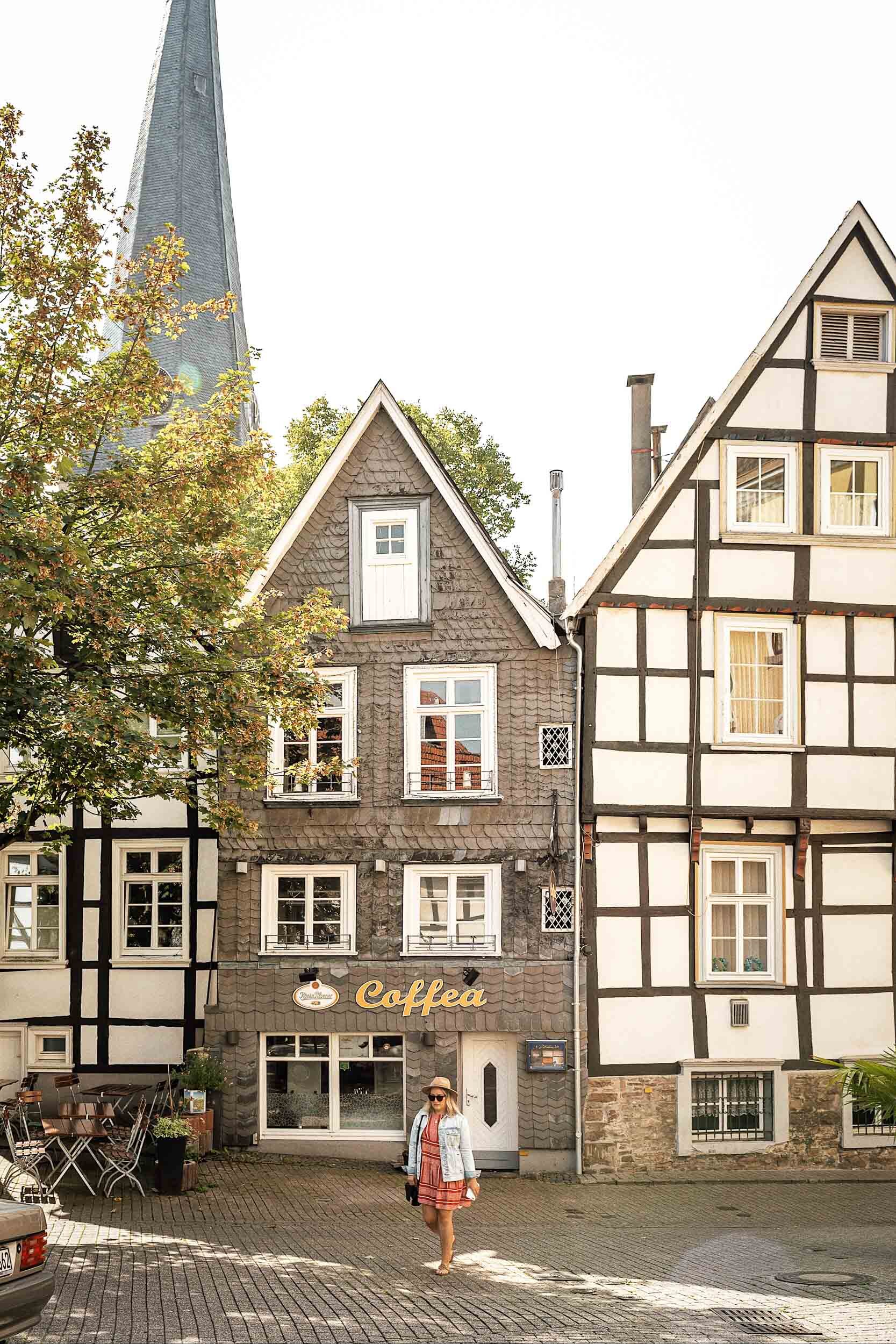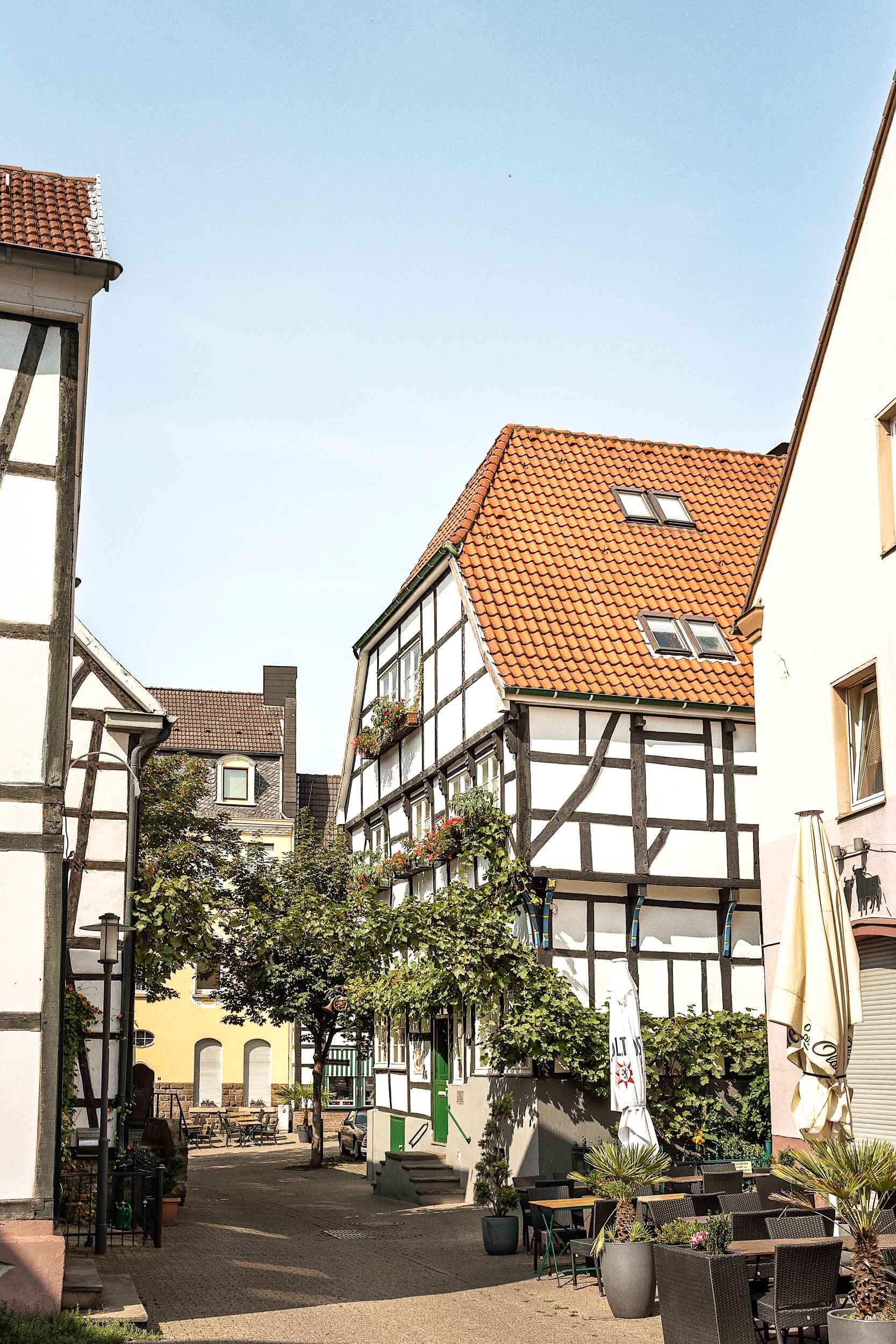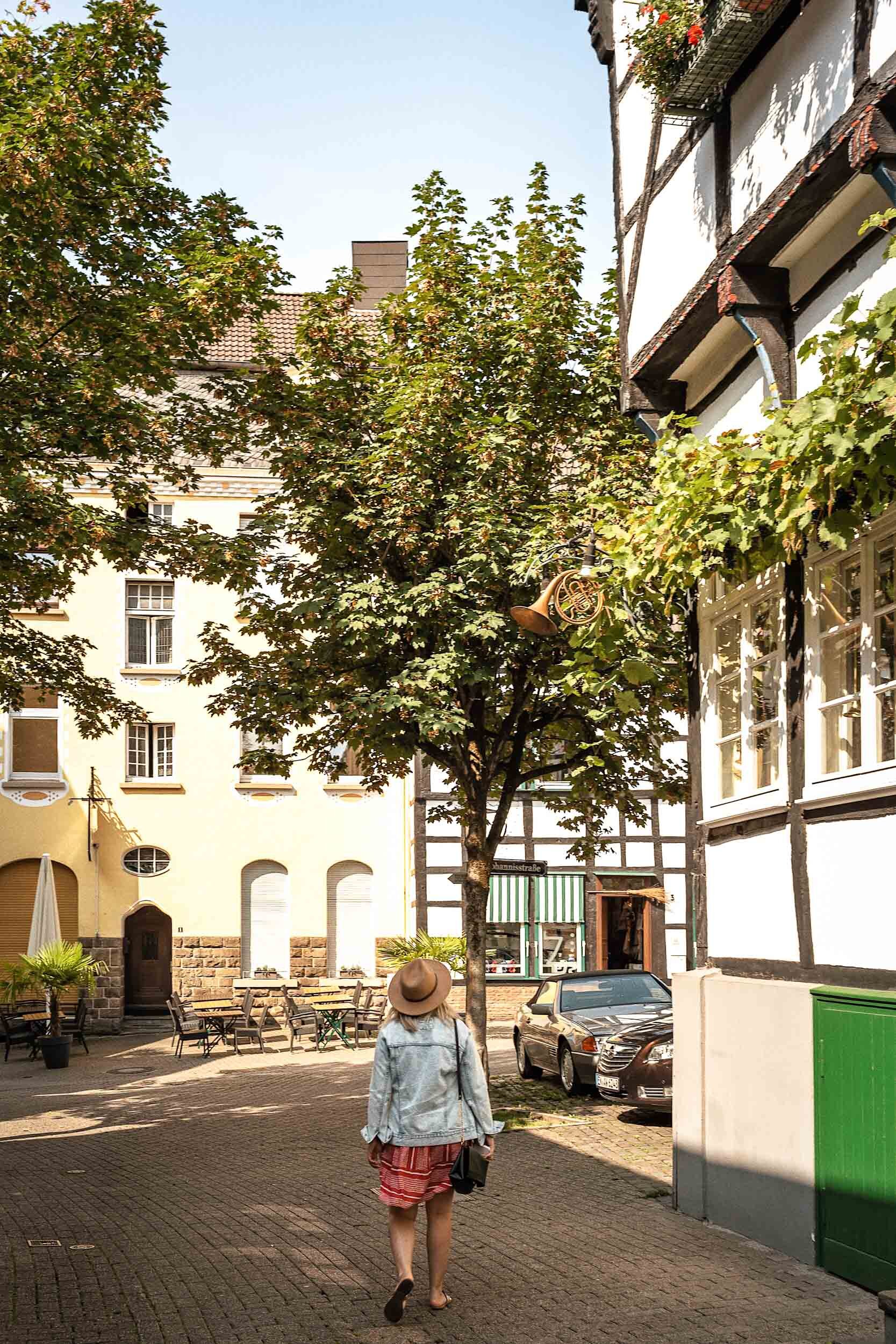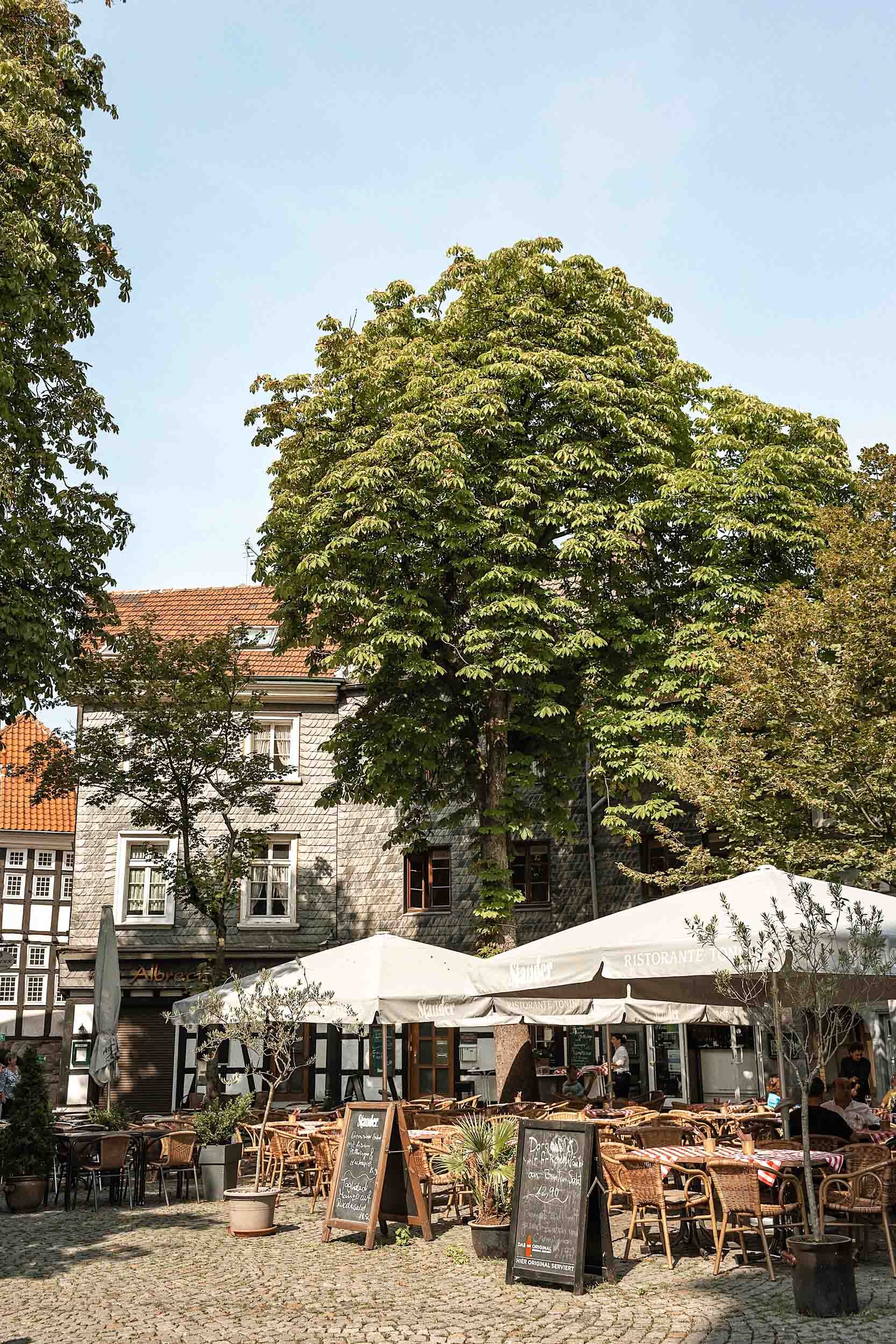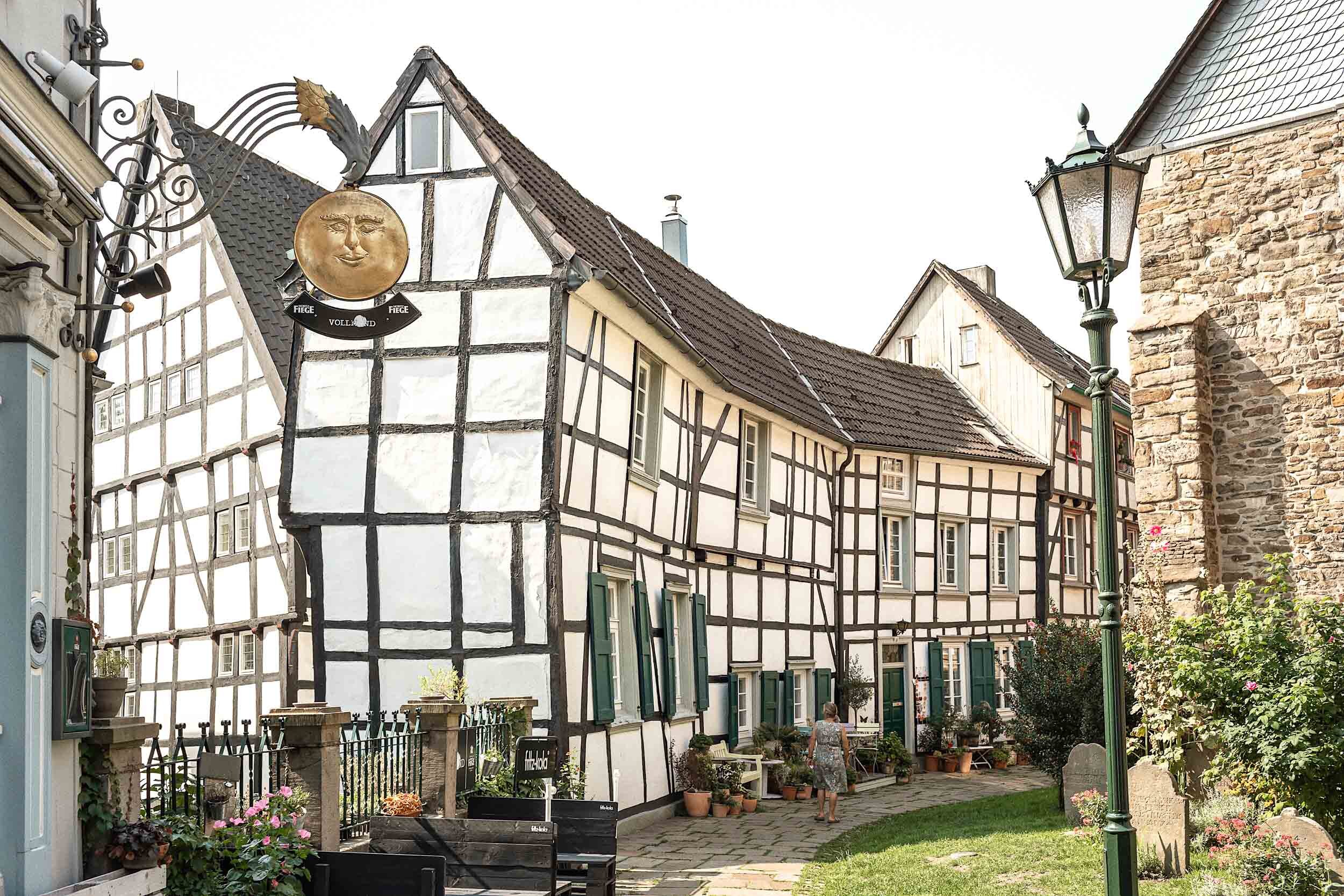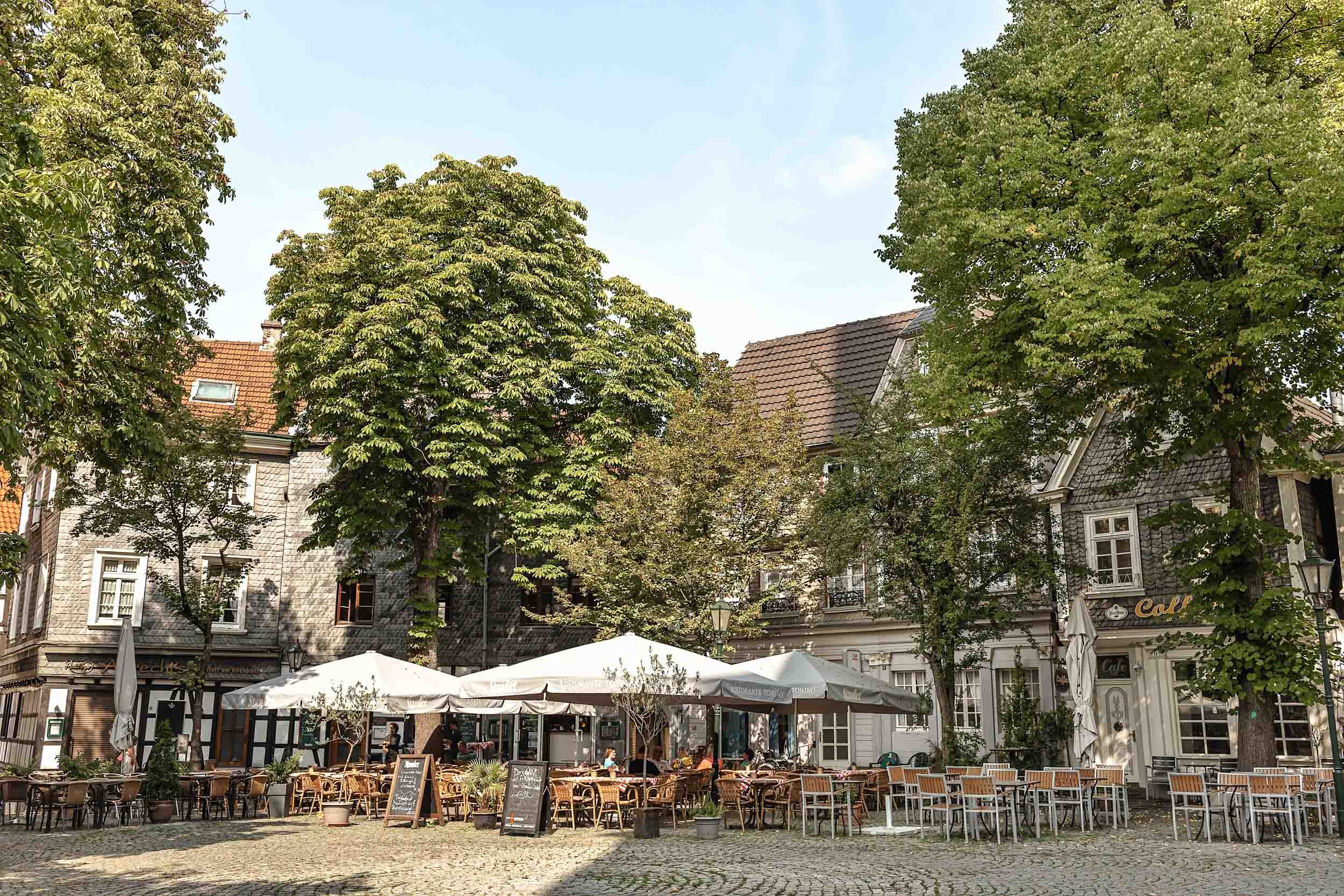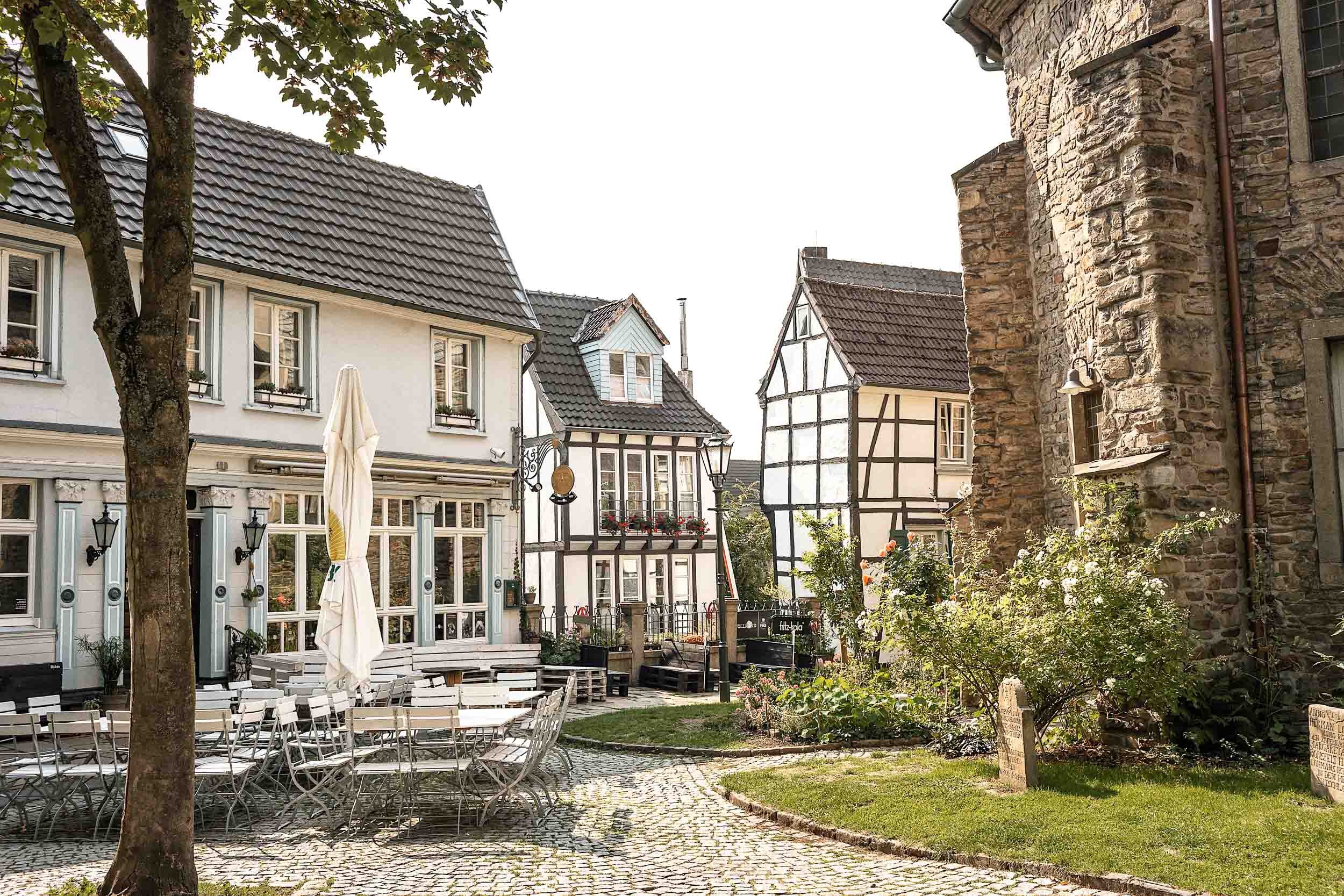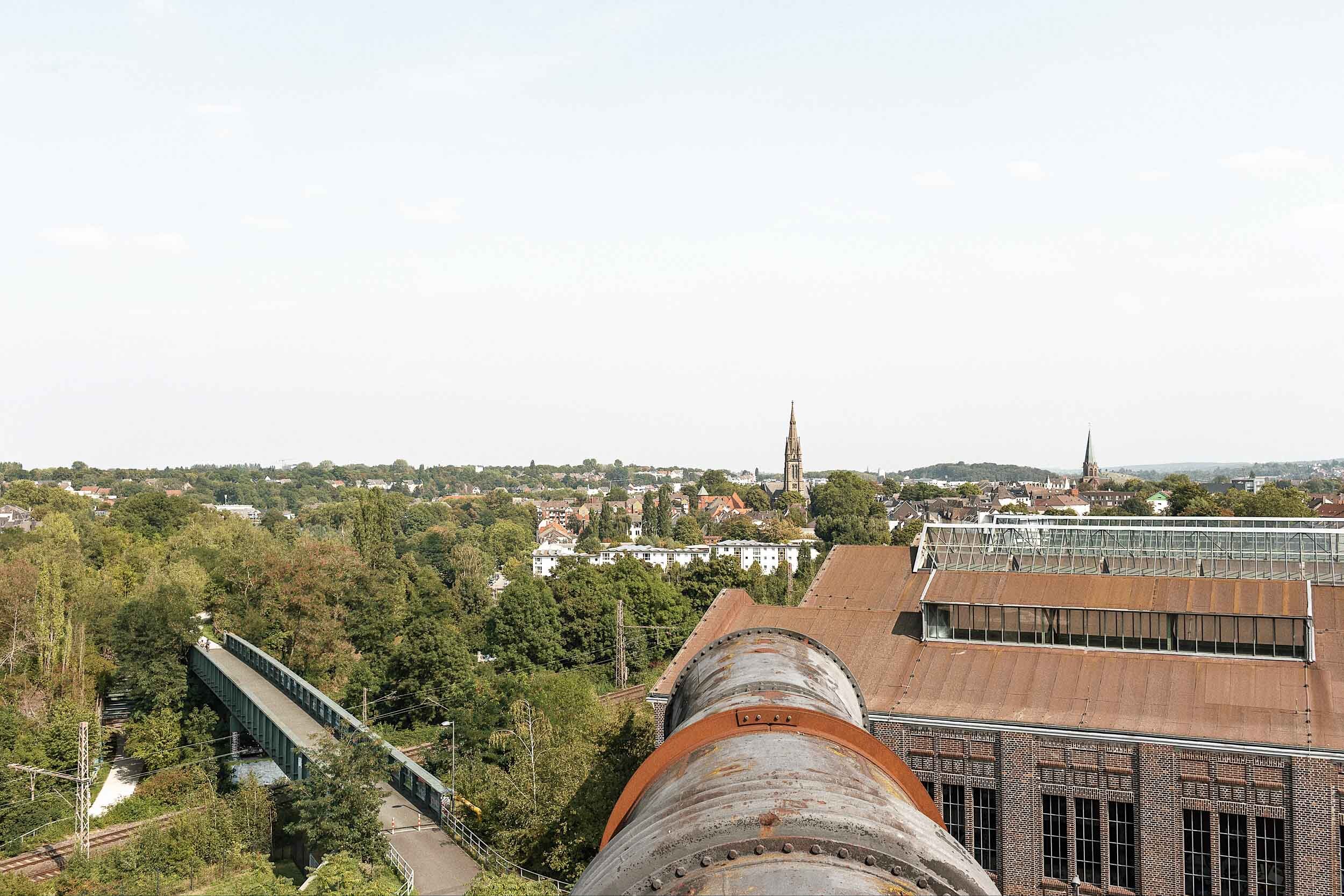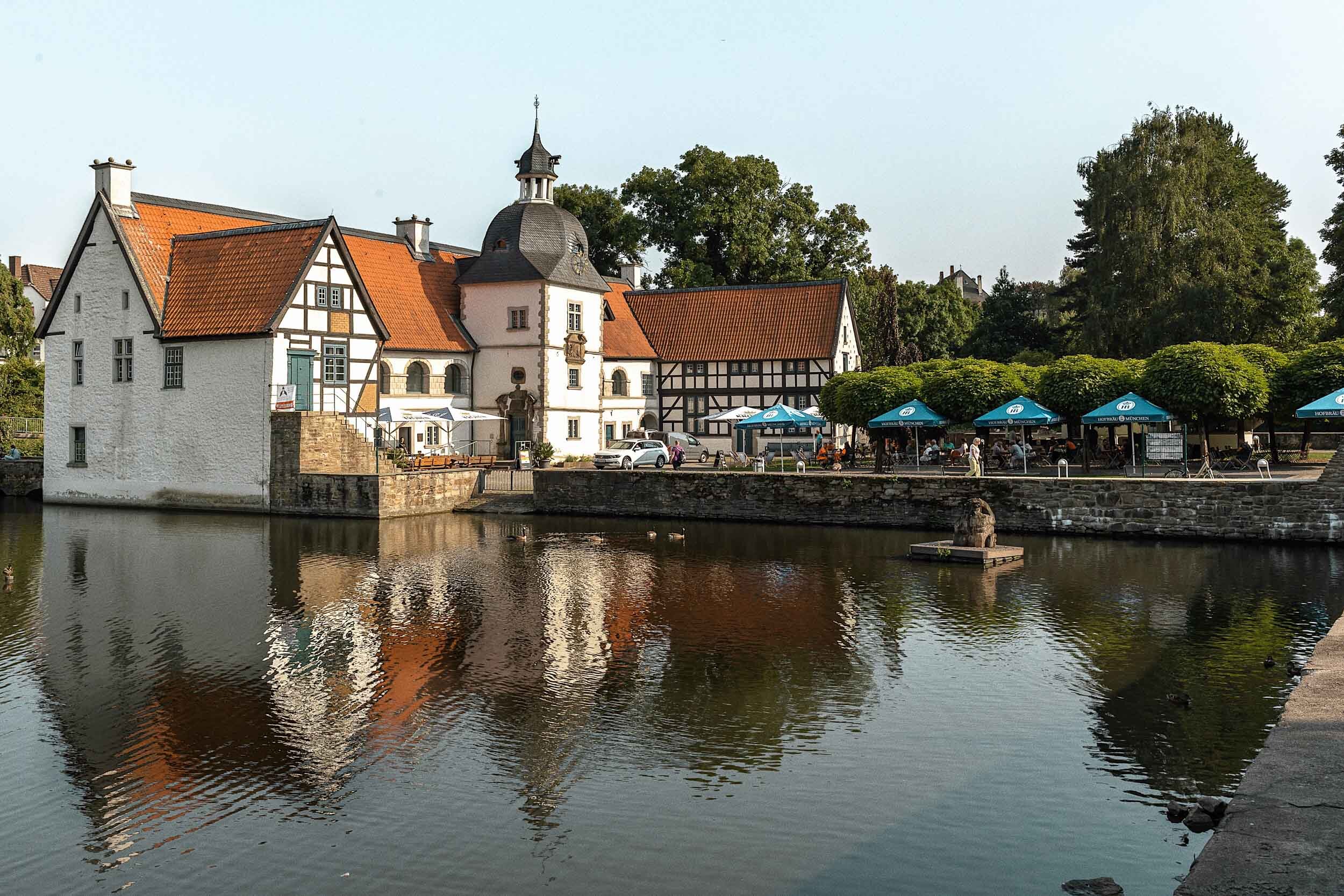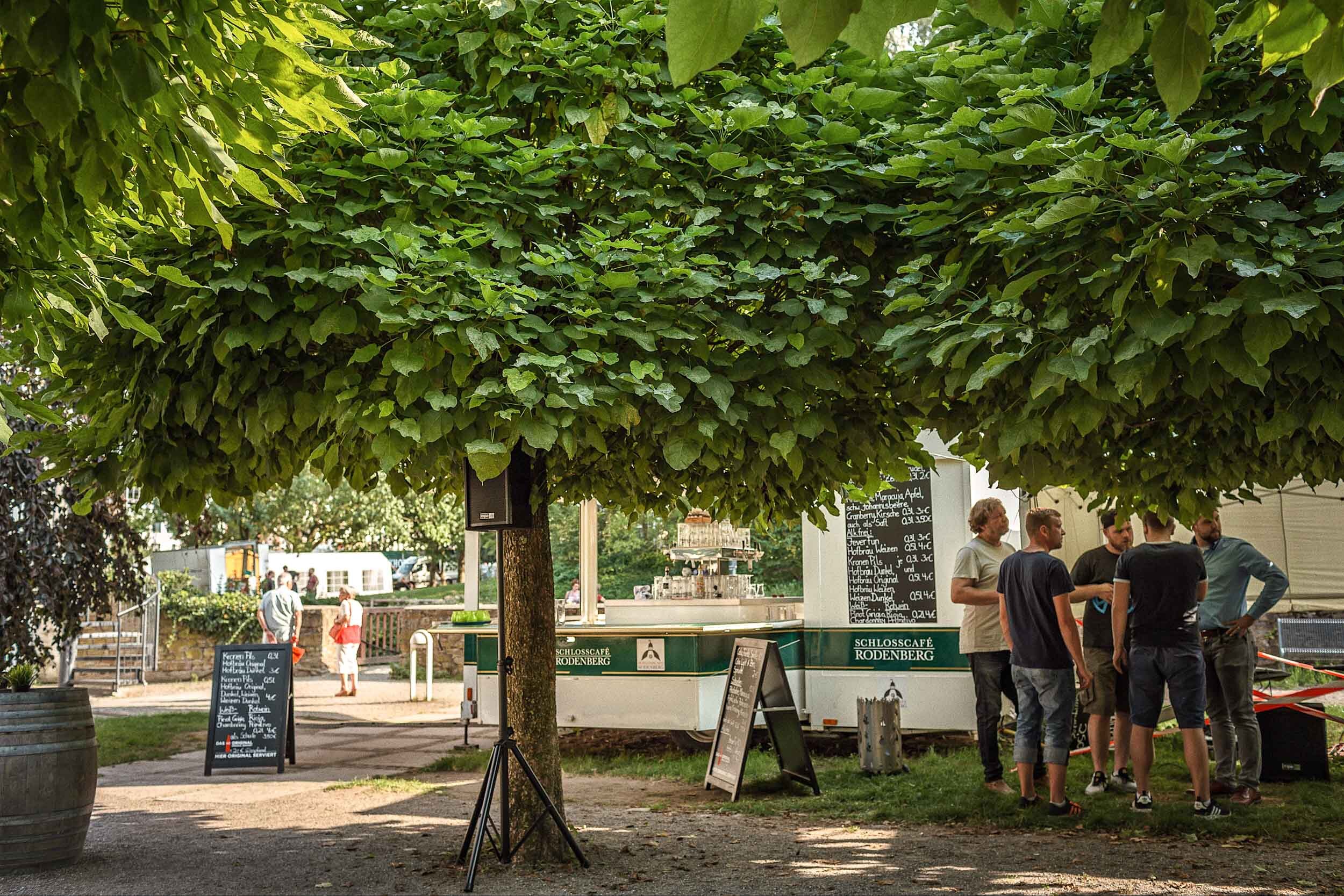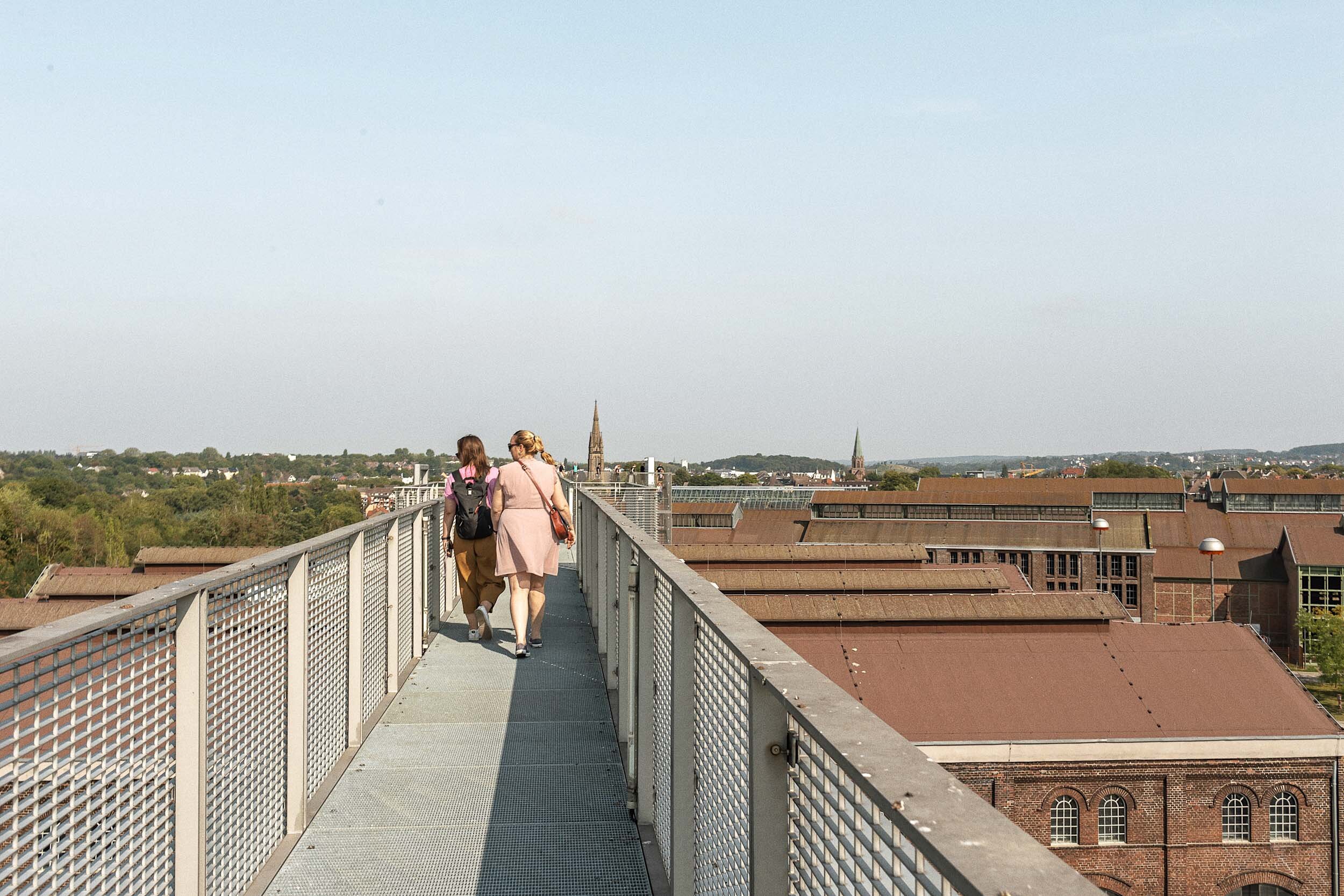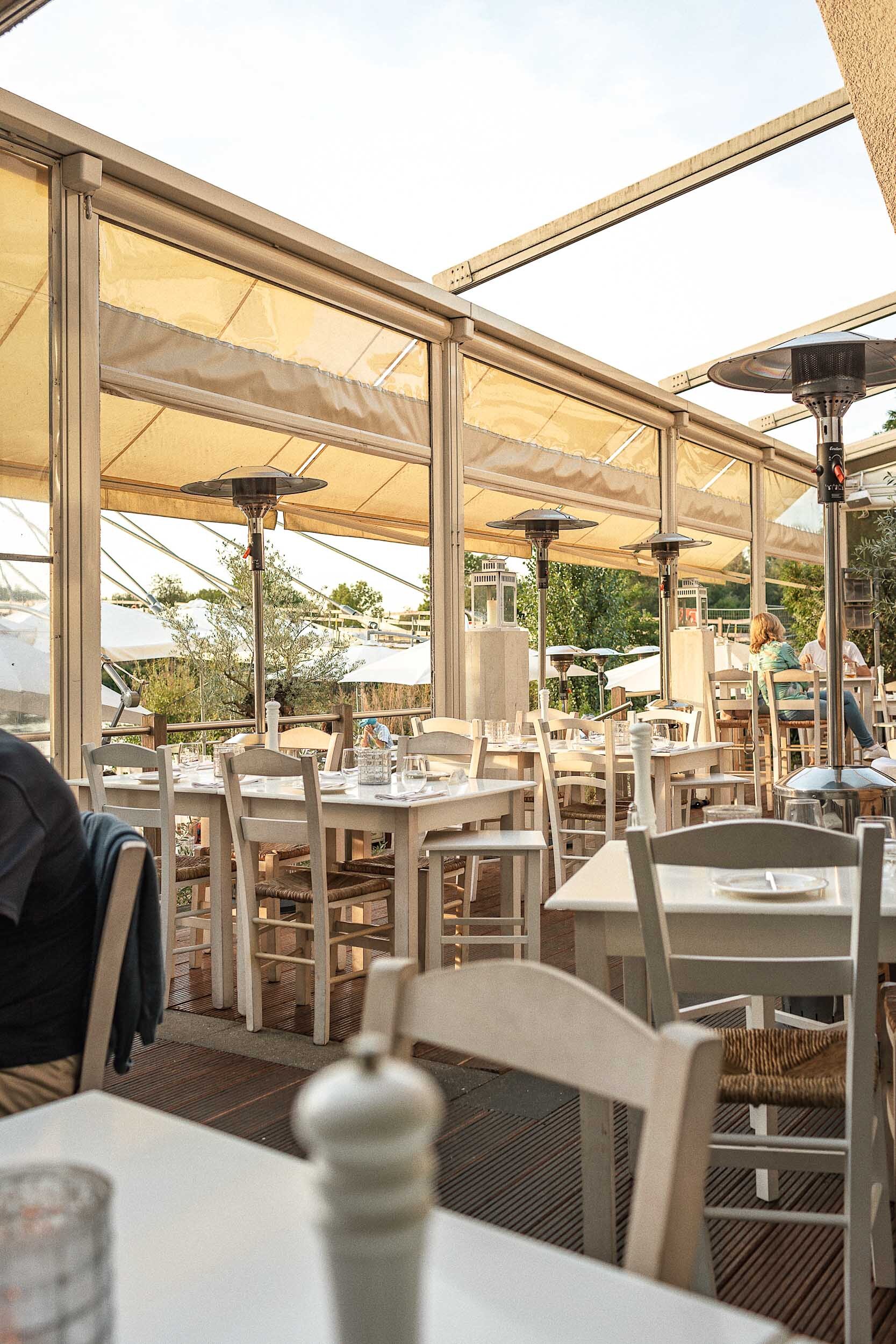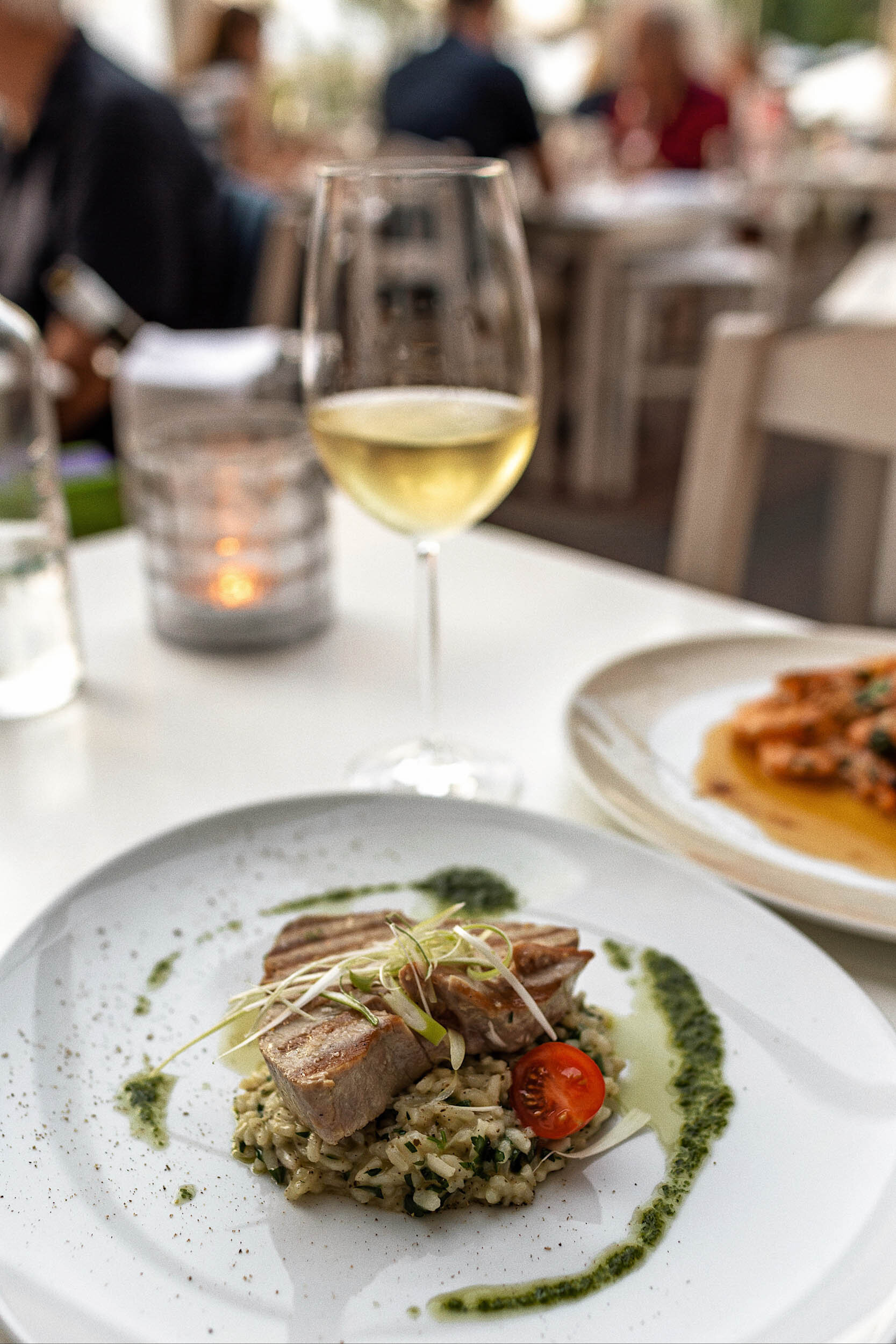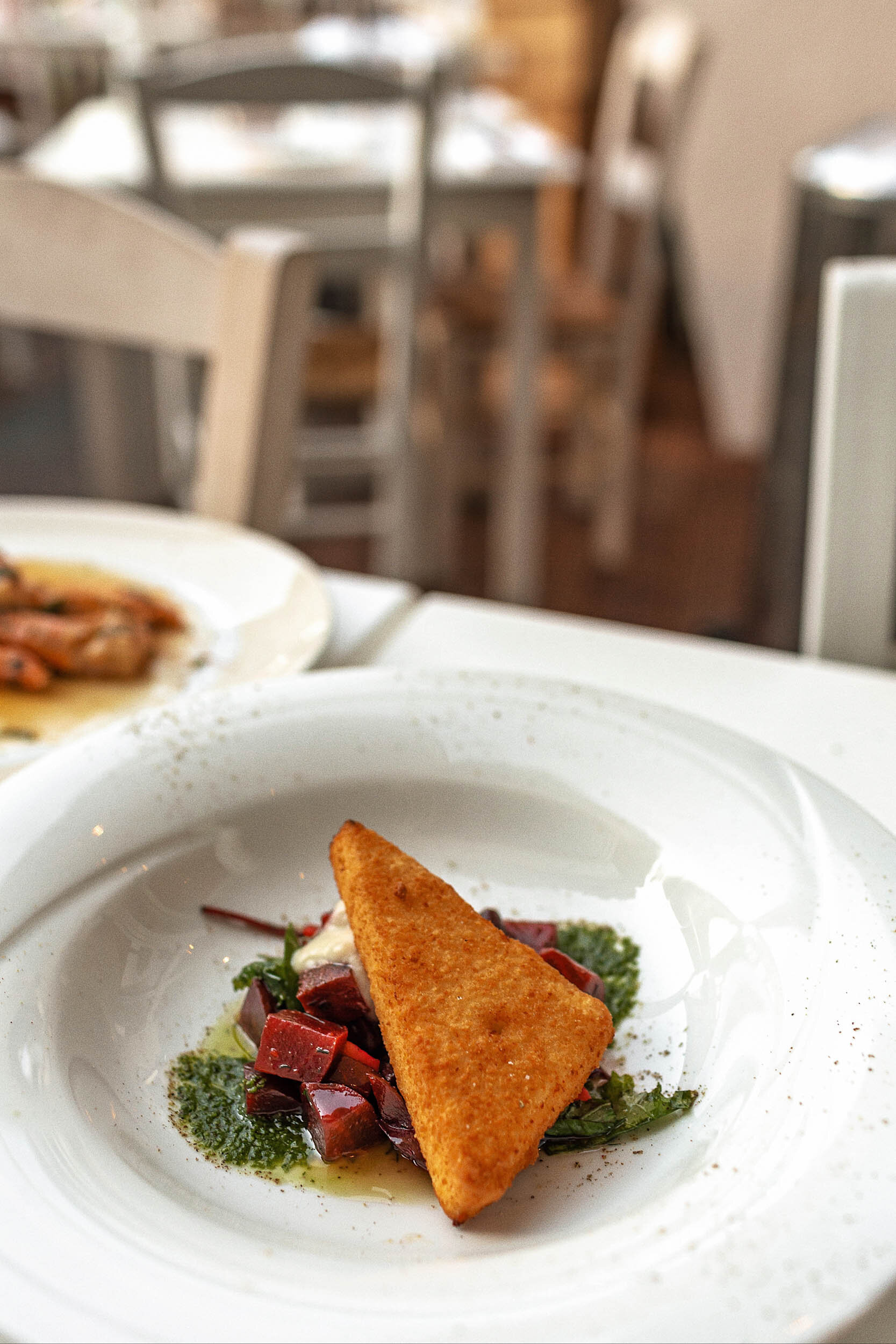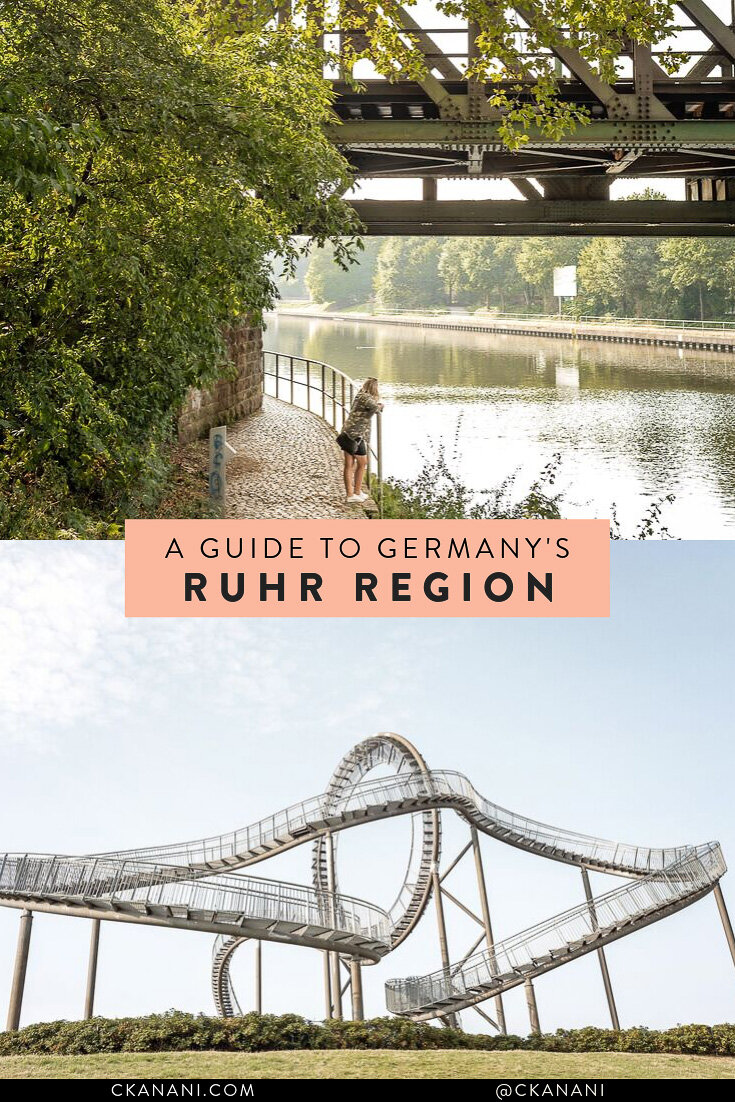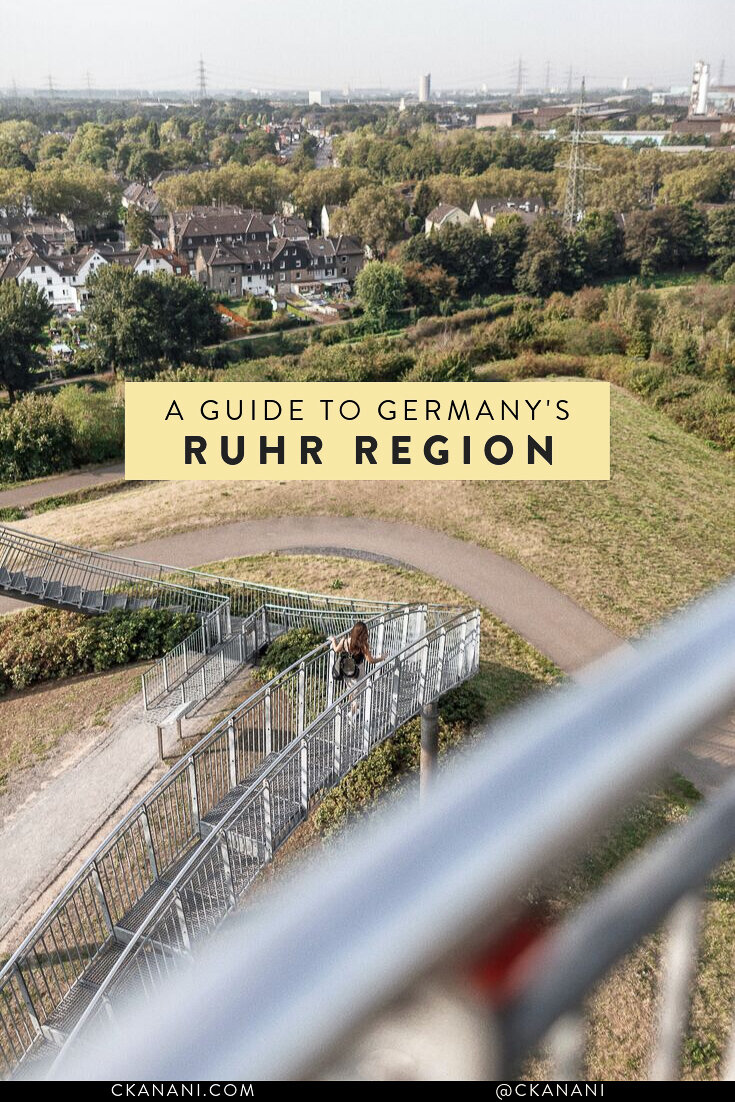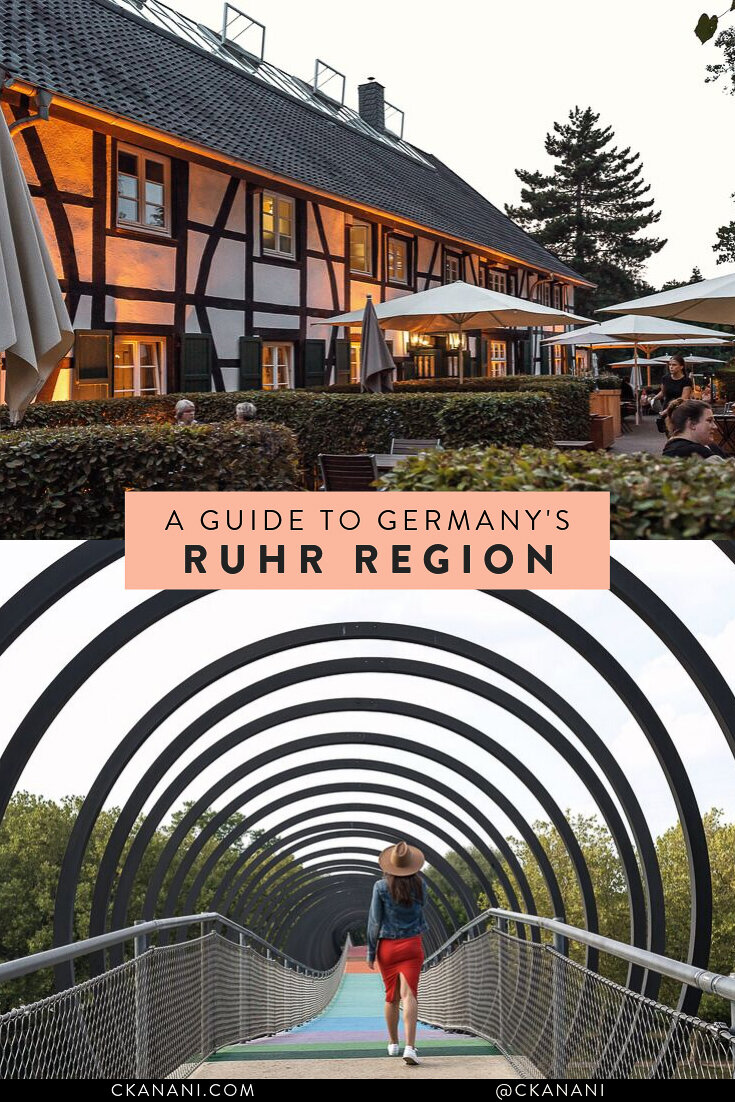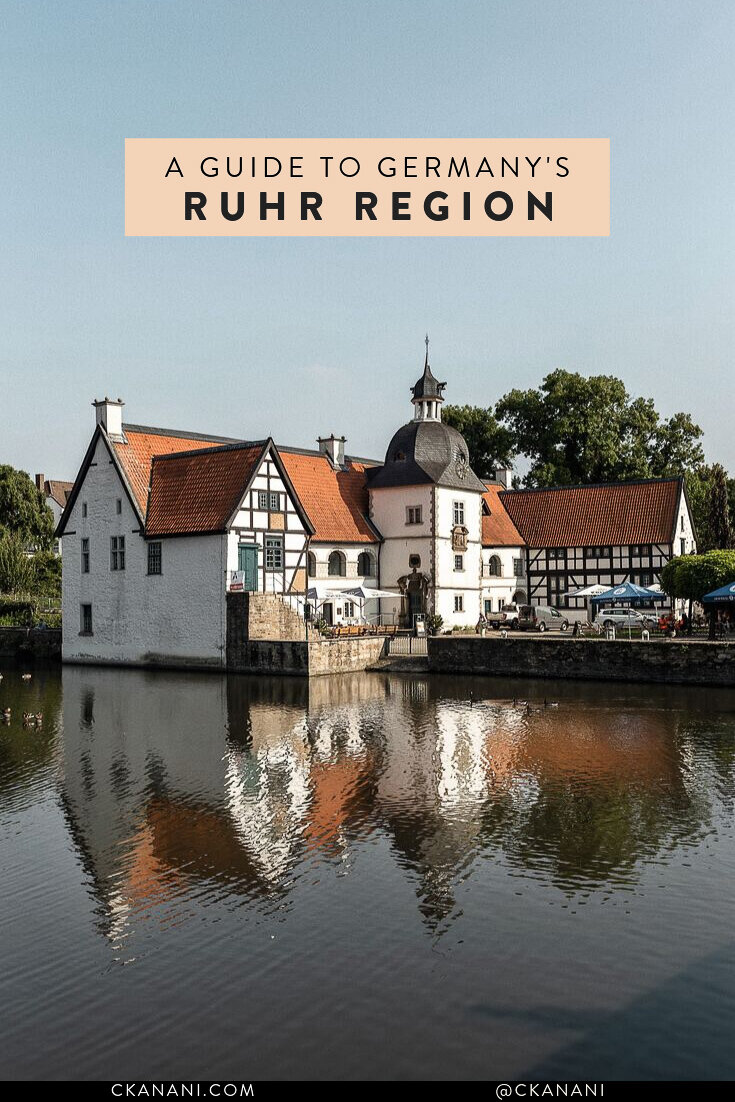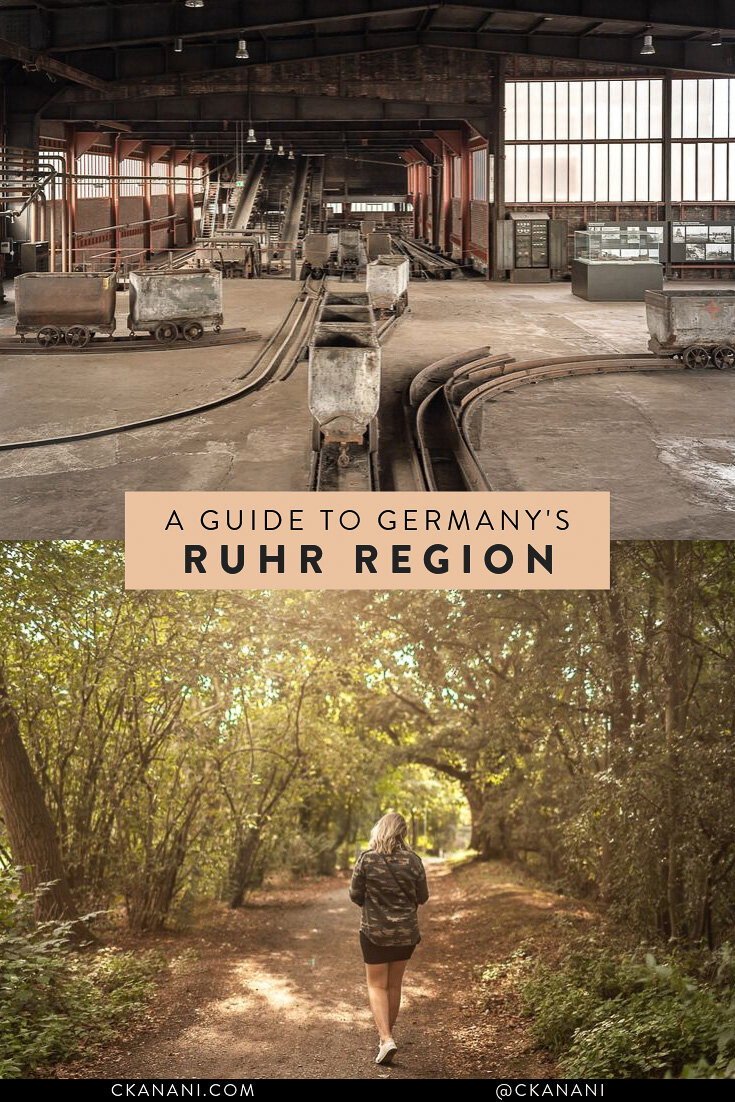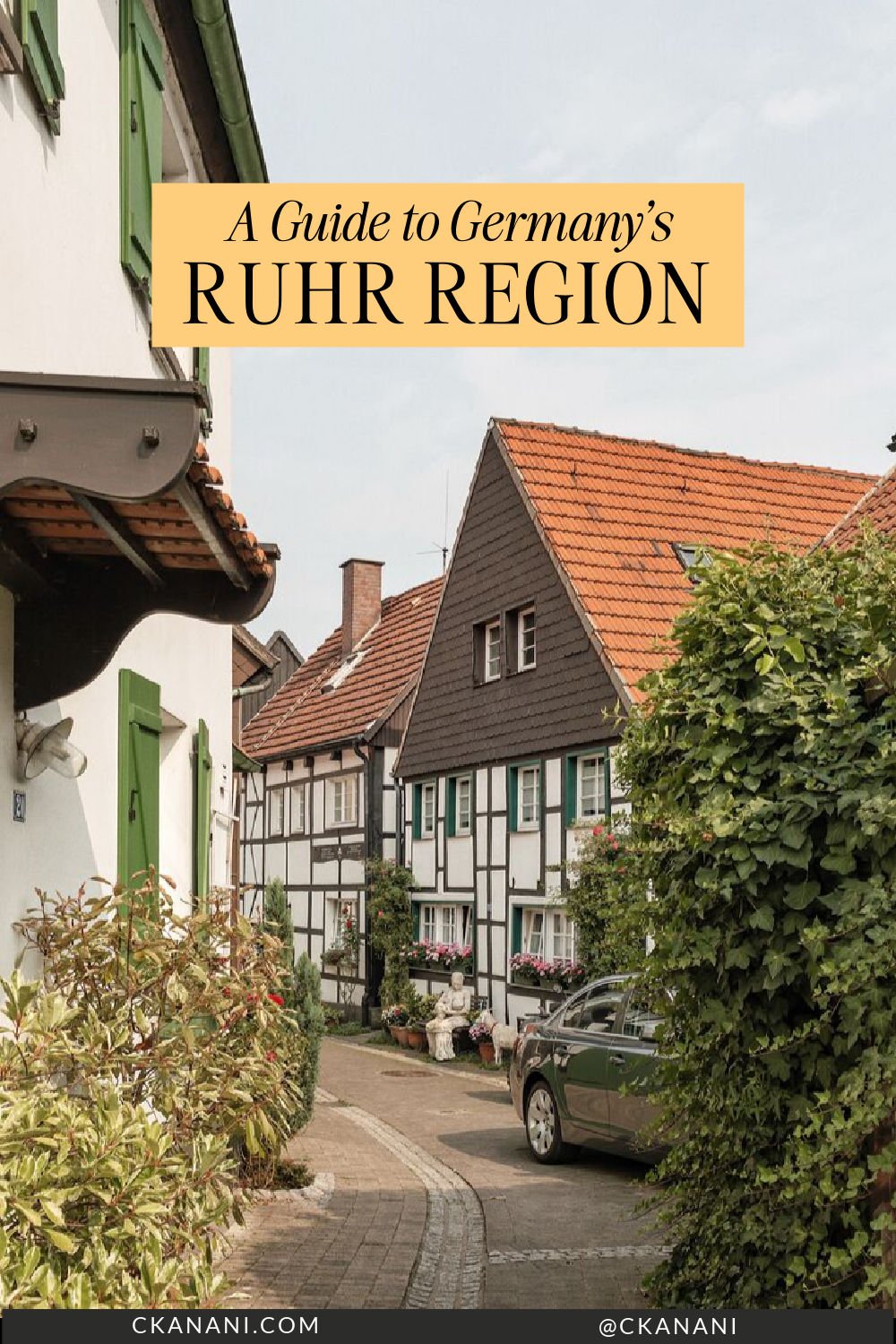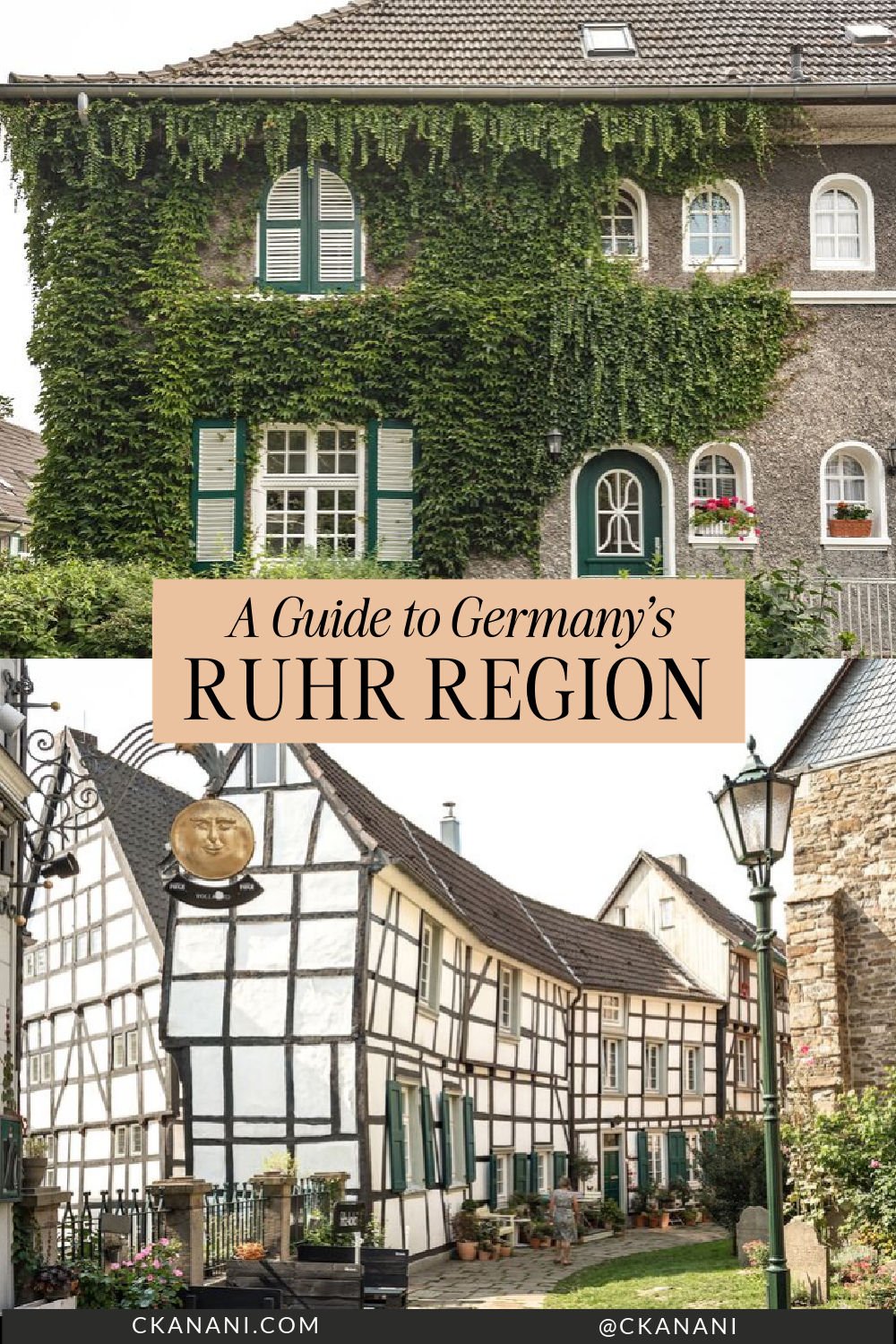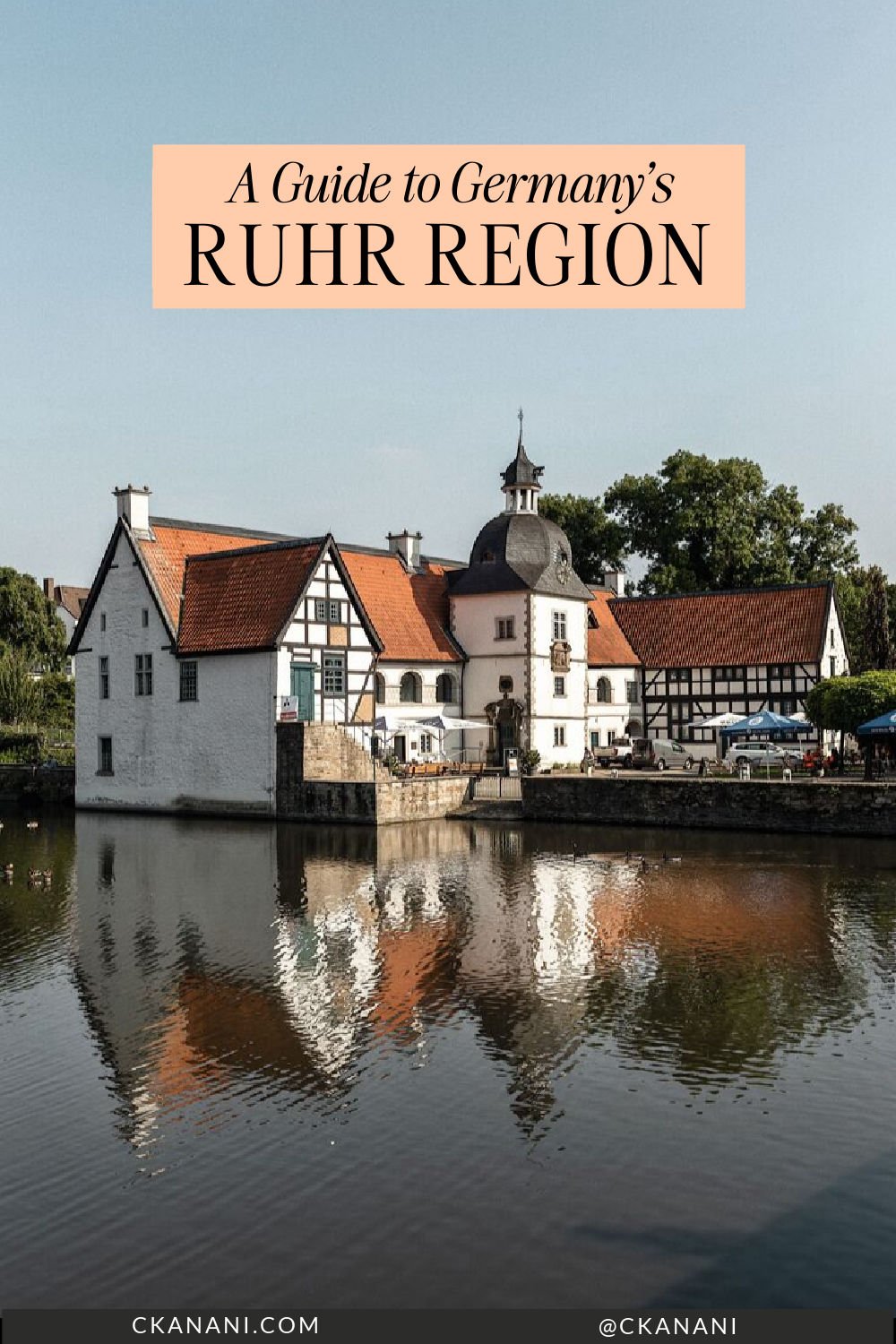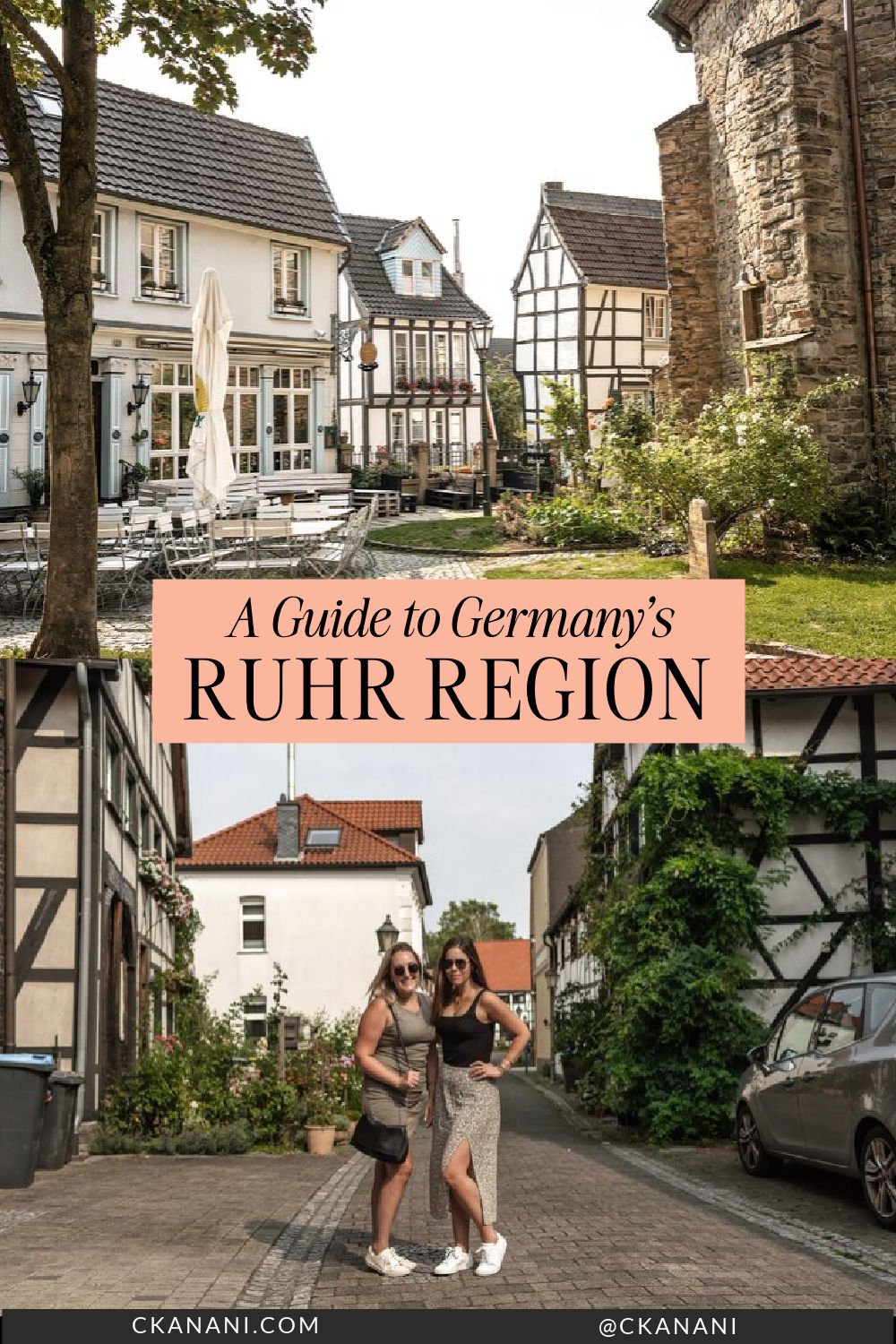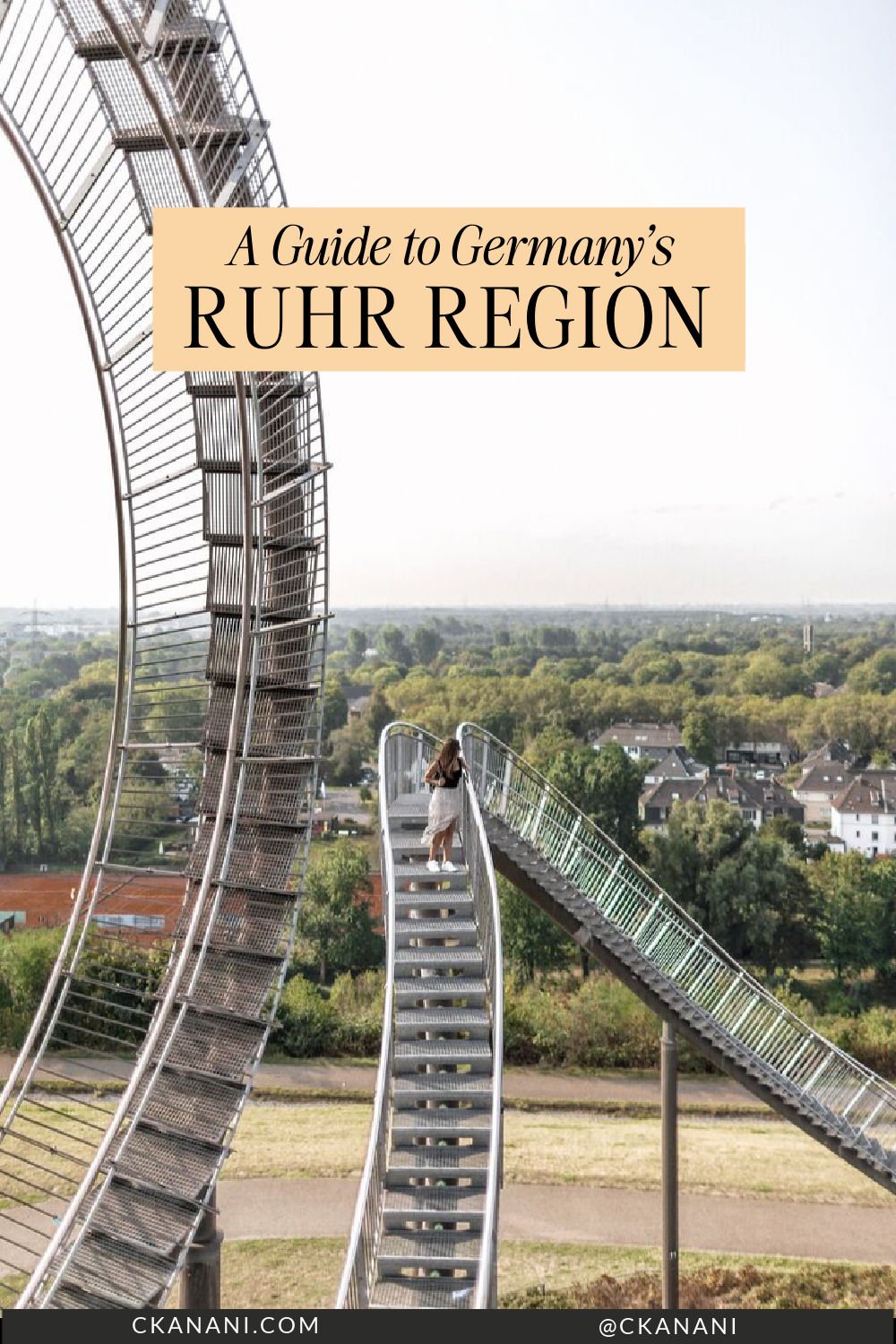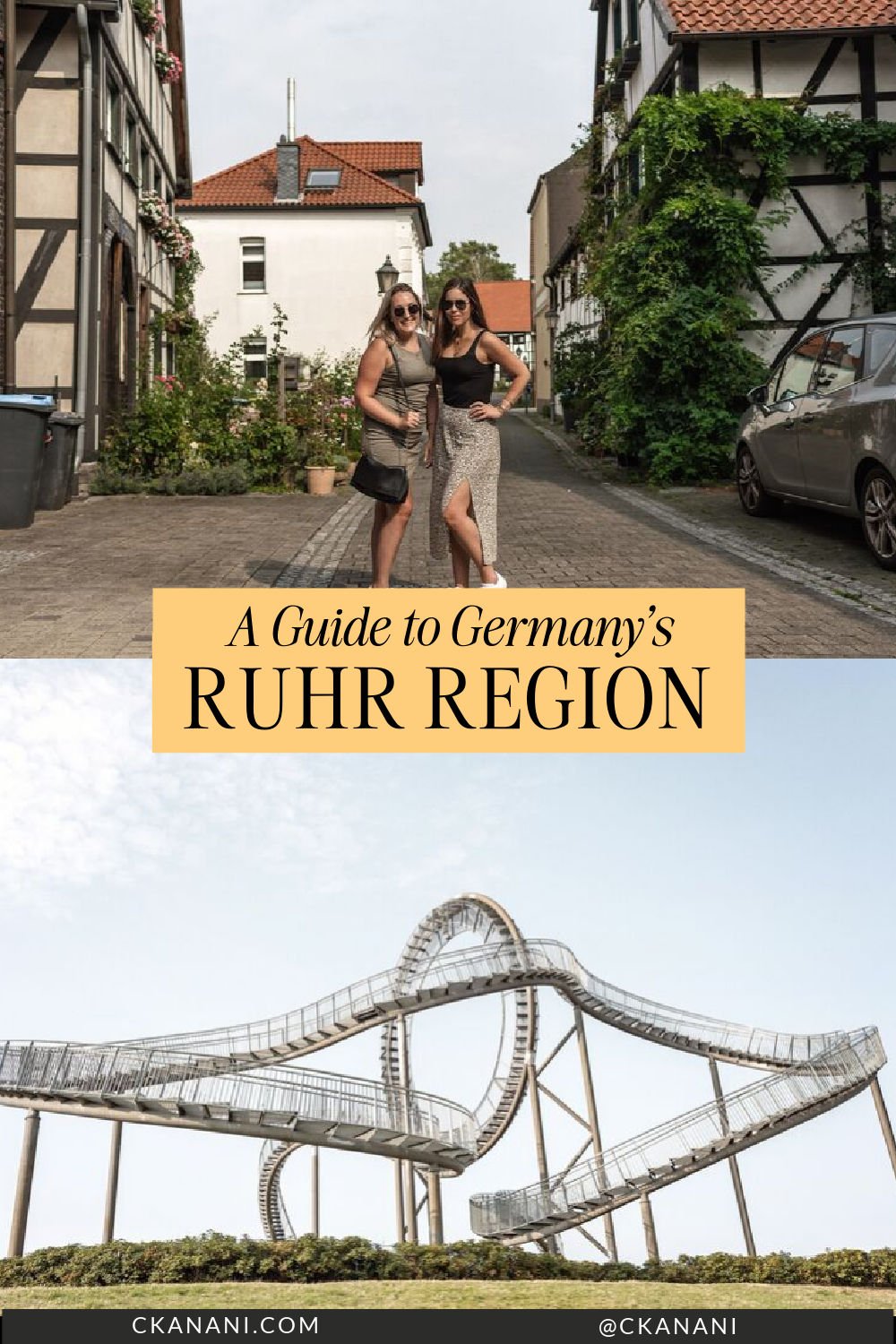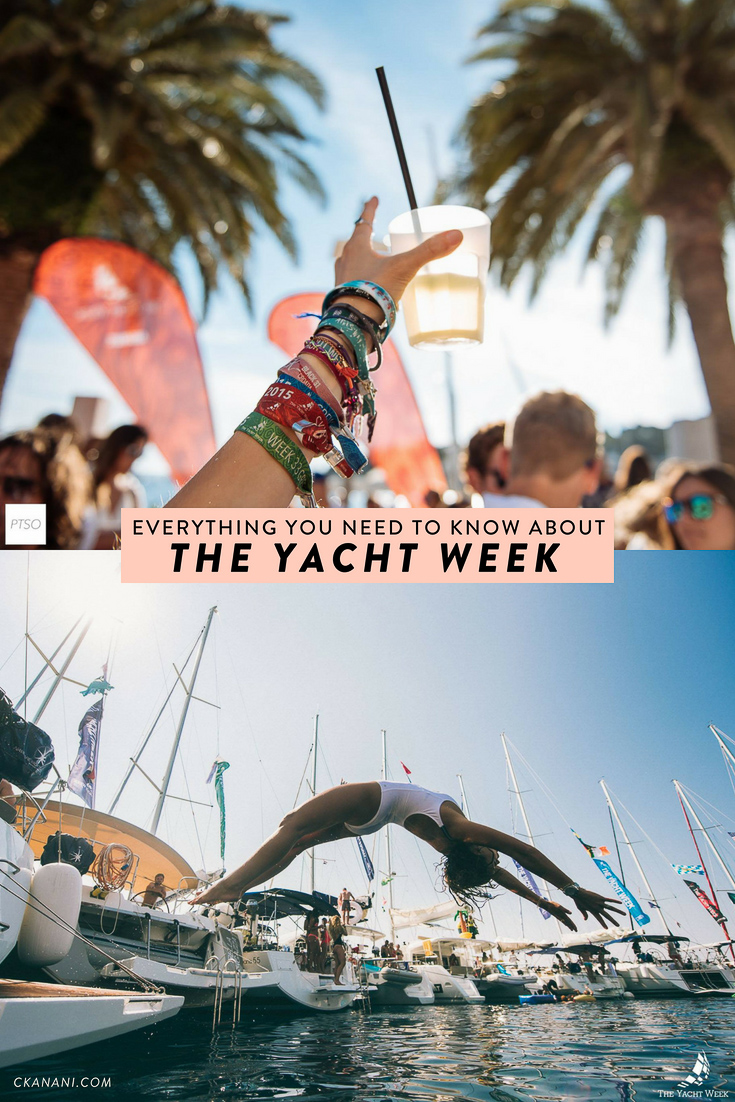The Perfect Ruhr Itinerary: A Guide to Germany’s Industrial Heritage Route
This year I was lucky to spend my birthday exploring the Ruhr area, a German industrial region, with Germany Tourism and one of my closest girlfriends, Janelle. While visiting, we uncovered so many gems — some already well known, some not — and I am excited to share that info to help you plan your visit, too!
You might not be aware of this if you don’t know me in real life or keep up with me on Instagram, but I am a Germany super fan. I have loved it since I first visited in 1996 for a family reunion, my first international trip, and have continued to visit as often as possible since. I also proudly (and constantly, some might say) tell anyone who will listen that I am German - on both sides of my family!
Because my grandfather is from Augsburg, Bavaria is where I have to date spent most of my time in Germany. So when the opportunity to work with the German National Tourist Office and explore a totally new-to-me area of the country was presented to me, I was ecstatic, to say the least.
Not at all surprisingly, it did not disappoint. We learned a lot about industrial heritage, ate absolutely delicious food (including one of the best meals of my life), drove through countless green tunnels (that’s what I call them, at least, but more on that later), explored many different types of parks, and even found a walkable roller coaster. The Ruhr region has something for everyone, and I highly recommend visiting.
A Guide to Germany’s Industrial Heritage Route
About the Ruhr Region
The Ruhr region is in North Rhine-Westphalia, Germany, on the western side of the country. It is the largest urban area in Germany, the third-largest in the European Union, and two of Germany’s top 10 most populous cities are here (Dortmund and Essen).
It is most widely known for being a major industrial region, famous for its large-scale coal and steel production. But, as I found out, there is much more to it than that! It’s the perfect mix of city and rural, with plenty of traditional, timber-house-filled villages scattered throughout.
Getting to the Ruhr Region
The Ruhr region is easy to get to, as it is located a quick drive from Dusseldorf airport. Janelle and I flew from San Francisco and Austin to Dusseldorf, both with quick Europe-side layovers, and it was painless.
If you’re visiting from somewhere closer, there are train and bus options, or you can drive yourself in. There’s even cycle path options!
Click here for more information on traveling to the Ruhr region.
Where to Stay in the Ruhr Region
Our home base for the trip was Essen, and I recommend the same for you, especially if you plan to follow my suggestions below. Depending on your needs, there are two different hotel options I recommend.
The Niu Cobbles is where we stayed. It’s a new hotel that opened in 2017; very casual, modern, funky, and hip. The location is great, and I found the food there, especially the salad, to be shockingly good! If you are looking for something casual, this is a good choice.
Click here to check availability and book your stay.
If you are looking for something more luxurious, the Mintrops Stadt Hotel Margarethenhöhe looks fantastic. It’s a beautiful 4-star hotel located in my favorite area of Essen, Margarethenhöhe. I did not personally stay here, but it has great reviews across the board on all hotel booking sites I checked, and it would be my top choice for next time.
The Perfect Ruhr Itinerary
Below I lay out my suggested itinerary for three days in the Ruhr region. If you have more than three days, fantastic! I could have easily spent much more time there and ran out of time WAY before I ran out of things to do, so feel free to adjust as necessary.
Also note that because our time was limited, we really went for. Sunrise to sundown we were running around non-stop, all day everyday, for three days. If you prefer to go at a slower pace, as most do on vacation, you will want to remove an item or two each day. My recommendations are a healthy mix of industrial heritage and non-industrial heritage, and can be easily modified to be more or less of either.
DAY ONE — Essen, Oberhausen
I recommend starting your first Ruhr region morning with a stroll through Margarethenhöhe. It’s a garden city in Essen filled with ivy-covered houses that used to be home to employees of the Krupp plants. If you don’t know who Krupp is, don’t worry, you will learn about him at your next stop!
Aside from the interesting history, it’s breathtakingly beautiful. Every single house is covered in ivy, so no matter which direction you look, all you see is green! It’s almost like being in a green forest, except it’s a residential neighborhood.
Despite taking hundreds of photos, I don’t think it’s possible via still imagery to accurately portray Margarethenhöhe. Nor is it possible via written words. It’s something you have to see to believe and is truly one of the most beautiful places I have ever walked through. I could not believe my eyes, which is something I most often say when talking about Positano on the Amalfi Coast of Italy. Margarethenhöhe is truly a gem.
Grab a takeaway coffee, park your car, and simply roam around the quiet morning streets. Preferably with a camera in hand!
Next I recommend heading to the Zollverein UNESCO World Heritage Site, also in Essen. If you plan on visiting only one industrial heritage site, this is the one you should not miss. I strongly encourage you to do this specifically on day one, not day two or three, as it will help you make sense of everything else you do for the remainder of your visit. Trust me on this!
The Zollverein UNESCO World Heritage Site includes a handful of different things: Zeche Zollverein, once the largest coal mines in the world, a coking plant, once the largest in Europe, plus the Red Dot Design Museum, and the Ruhr Museum. There’s also a handful of different dining options and even a public (and free to visit) pool!
You should start your visit at Zollverein with a guided tour of the coal mine and coking plant. This tour helped remove any confusion I had about the region, the industrial history of it, and so much more. Even the Ruhr parks and the garden city tie into this; without a guided tour you will not understand the full picture of the region. Don’t miss it!
Click here to book your guided tour at Zollverein.
After your tour, stick around the complex for lunch at Casino Zollverein. Casino Zollverein features innovative high-end cuisine with a regional touch in a glamorous space and is very highly rated. There’s also an outdoor summer garden, perfect for a beer in the sun! Skip the food at the summer garden, though.
Next up, the Red Dot Design Museum, also located at the Zollverein UNESCO World Heritage Site. It features around 2,000 everyday objects that have won the Red Dot Design Award. It’s likely not for everyone, but if it sounds interesting to you, this is a great place to fit it into your itinerary.
Make sure to double check the Zollverein calendar prior to visiting, too! We were there while “Gourmetmeile” was going on. At Gourmetmeile, restaurants from all over setup pop-ups in the Zollverein complex, allowing you to taste street food from all over the world. There’s live music, too, and the whole vibe is very fun. If you happen to find yourself in town during Gourmetmeile, be sure to check it out.
If you haven’t run out of steam today yet, you can head to the Oberhausen Gasometer in Oberhausen. The Oberhausen Gasometer is a former gas holder that has been converted into an exhibition space, with panoramic rooftop views.
Looking for a cool photo opp? The Slinky Springs to Fame bridge is a unique and beautiful bridge within walking distance of the gasometer. We visited in the afternoon, but the night pictures look amazing as well, so you can squeeze this into your itinerary anywhere you see fit!
Once you’re hungry again, head back to Margarethenhöhe for dinner at Restaurant Hulsmannshof. If you’re visiting while the weather is sunny and warm, be sure to get to the restaurant before it’s dark out. The outdoor terrace is framed with tall hedges, kind of like a maze, so that your table is hidden from the other guests. I can’t get over how magical it was to sit facing the traditional German building, drinking chilled wine, recapping our long day, and watching the sun set.
If you visit during non-outdoor dining weather, do not fret! The interior looks beautiful, too (it’s actually the reason I picked this spot, I hadn’t even known the terrace existed before arriving) and the food is good. We ordered a handful of dishes to split, and I loved the potato leek soup the most, so make sure to get that.
DAY TWO — Duisburg, Westerholt, Recklinghausen
On day two, you should first head to Tiger and Turtle in Duisburg. Tiger and Turtle is the walkable roller coaster you likely saw on my Instagram! It’s one of the Industrial Heritage Trail’s “spoil tips”. Spoil tips are artificially created mountains, made from the accumulation of spoil, cinders, rubble, or mining waste materials. Today you’ll find a lot of them enhanced to include a work of art, in this case, Tiger and Turtle! It is the coolest, most unique thing we saw on our trip, and it’s a can’t miss itinerary item.
Make your way here first thing in the morning to (hopefully) beat any crowds. We arrived at 9:30 and for at least twenty minutes we had the entire sculpture to ourselves. This is another spot that photos might not do justice - click here to watch my Instagram story highlight to see it in video form.
The city views from Tiger and Turtle are another reason to visit. Do note that it’s located at the top of a hill, so expect to walk about half a mile uphill to reach it. I wore my favorite handmade white leather sneakers everyday of this trip and would have been lost without them! Click here for my comfortable, stylish walking shoes for travel recommendations, if needed.
If you aren’t a morning person, Tiger and Turtle can be visited at night instead, since it has lighting! Some might argue it’s even prettier around sunset.
After Tiger and Turtle, visit Landschaftspark Duisburg-Nord, a former steel furnace turned public park. Here you can walk up a 230 foot former blast furnace, climb the largest outdoor climbing garden in Germany, dive in Europe’s largest indoor diving pool, and more.
In 2015, The Guardian named this Duisburg Park one of the 10 best parks in the world, alongside Florence’s Boboli Gardens, New York’s High Line, and Barcelona’s Park Guell. That alone is reason enough to check it out, if you ask me!
Click here for more information on Landschaftspark Duisburg-Nord.
For lunch, I recommend the Duisburg Inner Harbor (Innenhafen Duisburg), full of beer gardens, bistros, cocktail bars and restaurants. We decided on Restaurant Küppersmühle, which sits right off the water in a beautifully designed space. The food is fantastic, and our waitress was so kind, going out of her way to recommend nearby photo opps after seeing me constantly taking photos with my DSLR.
After lunch, it’s time to make your way to my favorite Ruhr town, Westerholt!
Depending on how you’re feeling, consider stopping at Tetraeder Bottrop, another popular spoil tip, which is en route from Duisburg to Westerholt. It’s another hilltop sculpture and view point, similar to Tiger and Turtle, but not quite as photogenic (in my humble opinion).
Again, you’ll need to walk up a fairly large hill to get here. We went up via switchbacks, which took awhile (or so it felt in 93 degree direct afternoon sun). While writing this, I learned there’s also a 400-step flight of stairs option. I would opt for the more direct route via stairs if I were you!
Westerholt, the German town of my dreams, is one you have likely never heard of. On this particular day of our trip, it was my birthday. That combined with the fact that Janelle had never visited Germany before made me want to spend the afternoon relaxing in the warm sun somewhere a little more off-the-beaten-path.
I can’t recall how I even knew of Westerholt in the city of Herten, since there’s almost no info about it on the web, but it turned out to be everything I dreamt of and more! It was a huge hit on my Instagram story, too. It’s the perfect spot for a city escape and a low-key afternoon stroll; I recommend simply roaming around the streets on foot, as they are filled with so much character and charm.
For an afternoon beer, stop at Restaurant Haus Alt Westerholt or the biergarten at Schloss Westerholt. You can also grab dinner here if you decide to spend the rest of your day in Westerholt.
Still not tired? You can continue on to Recklinghausen, the northern-most city in the Ruhr region, just 15 minutes further. It has a cute old town (navigate to “Recklinghausen Altstadt”), great for a quick visit and/or dinner.
If you don’t eat dinner before going back to Essen, are staying at the Niu Cobbles, and are looking for something healthy, try the salad. It is phenomenal. Make sure to get the yellow dressing, though, not the balsamic.
DAY THREE — Hattingen, Dortmund
Day three should begin at Essen’s botanical garden, Grugapark Essen. I recommend arriving right at 9 a.m. when it opens, as we did. This way you will have the park almost entirely to yourself, if not completely. It’s incredibly peaceful at this time of day, and the only sounds you’ll likely hear are from birds chirping.
I personally added Grugapark Essen to my itinerary after seeing their "Plant Display Houses.” I love conservatories and try to hunt them down almost anywhere I go, so once I saw those I was set on visiting. Upon arriving I was pleased to find that the rest of the park is breathtakingly beautiful, too.
When you first enter Grugapark Essen, you will walk through many different gardens. Most have benches or other spots to sit down in and are somewhat enclosed, making it the perfect place to relax, drink a cup of coffee, read a book, etc. if you have the time! The park is gigantic (click here for a map ) with tons to see and you could easily spend many hours here.
I was sad to find the Plant Display Houses closed while I was there, but even still I absolutely loved the park and everything else I was able to see.
Unless you want to spend many hours at the park, I recommend heading to Hattingen next for some more small-town charm. Hattingen is a medieval town filled with cobblestone streets and marvelous timbered German houses. It’s a great place to spend some time exploring, and the perfect place to stop for lunch!
I loved all of Hattingen, but my favorite area was the church square. You can find it by searching “St. George’s Church.”
Next stop, Dortmund! Dortmund is the largest city in the Ruhr region and the eighth largest in Germany. It’s also the second greenest city in the country - around 70 percent green according to a satellite image analysis done by a Berlin newspaper.
Seventy-percent sounds high for a major city, but I believe it. Even the highways in Dortmund are green. You know when you are driving on a small street with trees on either side? And the trees are so big they touch in the middle, kind of like you are in a green tunnel?
That’s how highways are in Dortmund. Multi-lane highways! The entire drive out of town, I couldn’t stop saying “wow, this is crazy” over and over. In fact, I was joking (or so I thought) constantly about wanting to come back to do a green tunnel tour of Germany, but it turns out that is actually a thing! It’s called the German Avenues Route and Dortmund is, not surprisingly, part of it. I know what I’ll be doing next trip to Germany!
Because it is such a big and beautiful city, one afternoon in Dortmund is certainly not enough. Unfortunately that is all the time we had, but if you have more than three days in the Ruhr, Dortmund would be a good place to add additional time.
Here are some Dortmund activities I recommend:
Skywalk Phoenix-West — a newly developed area of Dortmund with a mixture of beer and industrial history, where I chose to spend the majority of my time in Dortmund!. You can visit Bergmann Brewery, mentioned above, or walk along the Skywalk to an old blast furnace plant.
On the Skywalk, you will walk across an old gas pipeline footpath, around 85 feet high, and then up the blast furnace, more than 200 feet high. That’s almost the equivalent of walking up a 20-story skyscraper, but you gotta do what you gotta do for the photo, right?!
In all seriousness, the walk to the top is not an easy climb. You will need to wear proper shoes and helmets will be required in some spots. Access is permitted only via a guided tour. Click here for more information and to book your tickets.
German Football Museum — football fan? Dortmund is the place for you. The wonderful people of Dortmund love football so much they will find any excuse to squeeze into a conversation, I found! The German Football Museum tells you the history of German football. You could also visit the stadium for a tour or a game.
Brewery Museum Dortmund — beer fan? Dortmund is the place for you, too! Beer is big in Dortmund; it’s the beer city of the Ruhr. Here you will learn about all things beer, of course. Prefer just a brewery? Check out Bergmann Brewery for a guided tour or just a glass of beer.
Dortmund U-Tower — one of the most famous landmarks in the Ruhr, the Dortmunder U is a former brewery turned center for art and creativity. You can visit the museums or, for free, the viewing platform at the top for some panoramic city views.
Haus Rodenberg — there are many castles in Dortmund, my favorite of which is Haus Rodenberg! Stop by for a beer in their beautiful biergarten, preferably at sunset if you can time it right. Some other castle options in Dortmund are Bodelschwingh Castle, Hohensyburg Castle, and Schloss Westhusen.
Kreuzviertel District — one of the trendiest districts in the Ruhr, according to Ruhr Tourism! Full of bars, restaurants, cafes, and shops. Also check out the Kaiser District.
Westfalenpark — Dortmund’s largest park.
Romberpark Botanical Garden —Dortmund’s botanical garden.
Lake Phoenix — an upscale area and one of the most popular attractions in the Ruhr. Located on the site of a former blast furnace and steel plant of ThyssenKrupp, it’s also part of the Industrial Heritage Route. Full of restaurants, cafes, and beautiful lake views.
Once done, head back to Essen for dinner at Cavos Couzina. Cavos Couzina is an absolutely fantastic Greek restaurant. Our dinner here was the best meal of the trip and honestly one of the best I have ever had.
Cavos is located on the Ruhr River in an absolutely beautiful space. If you want to sit close to the river you should make reservations in advance. There’s not a bad seat in the house, though, because the ambiance inside is just as pretty.
Menu-wise, I am confident you cannot go wrong. We ordered the fried feta cheese on beetroot, shrimp in garlic chili olive oil, and yellowfin tuna on herb risotto with basil pesto, plus the chocolate soufflé with vanilla ice cream for dessert. It was jaw-droppingly delicious - I cannot stress that enough.
Note that they do not take credit cards, only bank cards (debit cards). Using a debit card usually results in a large foreign transaction, and mine would not even go through, so it’s probably best to bring enough cash just in case.
This project was done in partnership with Germany Tourism and Travel Mindset. All of the above is, as always, my own opinion.

